
The latest AMD Ryzen AI 9 HX 370 is not only a productive 12-core processor with an NPU module, but also incredible built-in graphics that allow the Asus Zenbook S 16 to compete with modern gaming laptops. We tested the laptop in the usual scenarios, and also paid a lot of attention to the neural module, which will probably be a compromise solution for a typical user, not a programmer or IT specialist.
Content
- 1 Technical specifications of the Asus Zenbook S 16
- 2 Components and packaging of Asus Zenbook S 16
- 3 Design, materials, interfaces Asus Zenbook S 16
- 4 Asus Zenbook S 16 keyboard and touchpad
- 5 Display, camera, sound Asus Zenbook S 16
- 6 Work productivity
- 7 Game performance
- 8 Artificial intelligence and software
- 9 Autonomy, cooling, noise, power consumption
- 10 Experience using the Asus Zenbook S 16
- 11 Asus Zenbook S 16 price and competitors
Technical specifications of the Asus Zenbook S 16
| Technical specifications of the Asus Zenbook S 16 laptop | |
| Screen | 16″ OLED 2880×1800 120 Hz |
| Processor | 12-core AMD Ryzen 9 HX 370 |
| RAM | 32 GB LPDDR5 7500 MHz |
| Drive | 2 TB SSD PCI-E 4.0 |
| Video card | AMD Radeon 890M |
| Wireless interfaces | Wi-Fi 7, Bluetooth 5.4 |
| USB connectors | 21x Type A 3.2 gen2 |
| 2 x Thunderbolt 4 | |
| Video connector | HDMI 2.1 |
| Audio jack | 3.5 mm jack |
| Network connector | RJ-45 1 Gbit/s |
| Card reader | SD |
| Camera | Full HD 1080p |
| Audio | Harman Kardon 6 speakers |
| Power supply | 65 W Type C |
| Battery | 78 W*h |
| Additionally | USB Power Delivery |
| Kensington / noble lock | |
| Face scanner | |
| NPU artificial intelligence module | |
| Housing material | Aluminum |
| Weight | 1.5 kg |
| Dimensions | 354x243x13 mm |
| Operating system | Windows 11 Pro |
A 12-core processor with AMD Radeon 890M graphics and a 50 TOPS NPU module deserves special attention. The manufacturer emphasizes AI, and we will check how relevant it is at this time.
| Specifications of the AMD Ryzen AI 9 HX 370 processor | |
| Architecture | Zen 5 / Zen 5c |
| Number of cores | 12 |
| Number of threads | 24 |
| Maximum frequency | 5.1 GHz |
| Base frequency | 2 GHz |
| Level 3 cache | 24 MB |
| Basic TDP | 28 W |
| Maximum TDP | 54 W |
| Technical process | TSMC 4nm |
| Integrated graphics | Radeon 890M |
| NPU AI performance | 50 TOPS |
| Overall AI performance | 80 TOPS |
Components and packaging of Asus Zenbook S 16

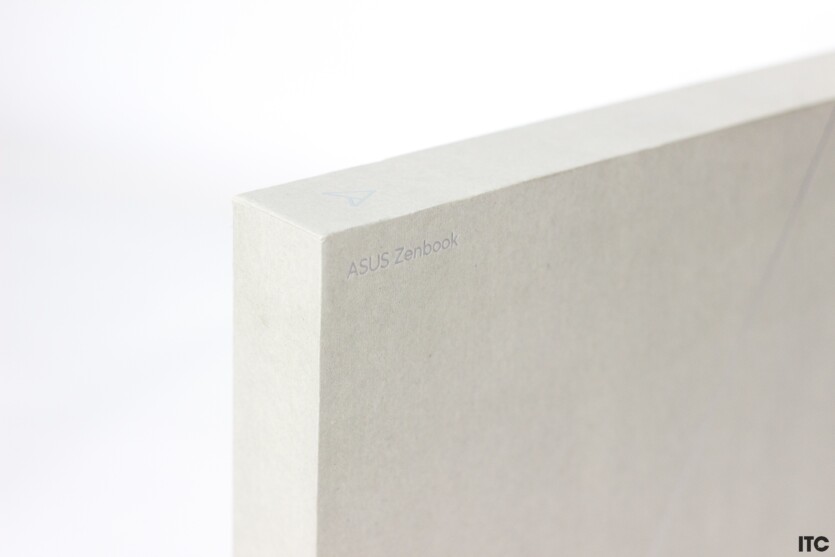






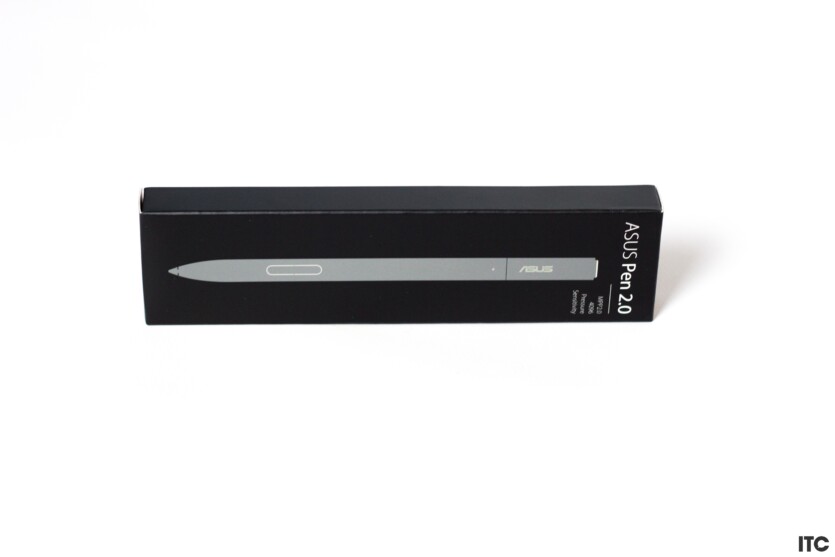
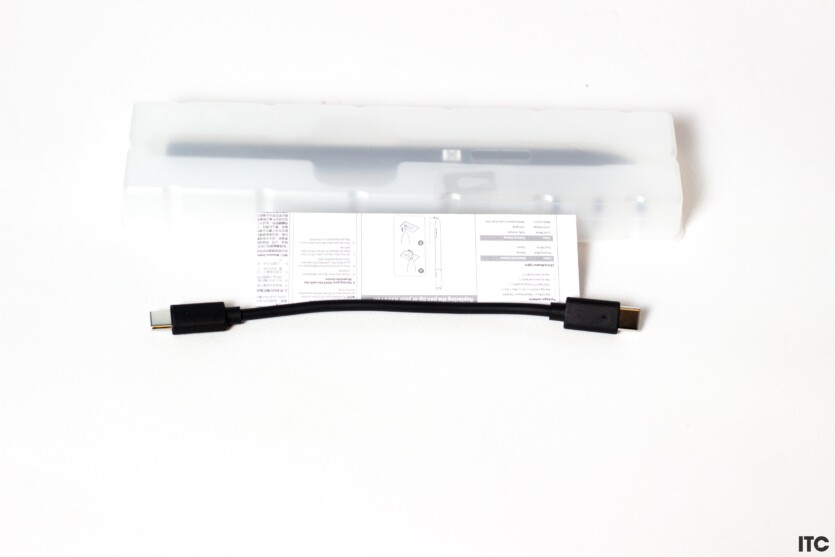
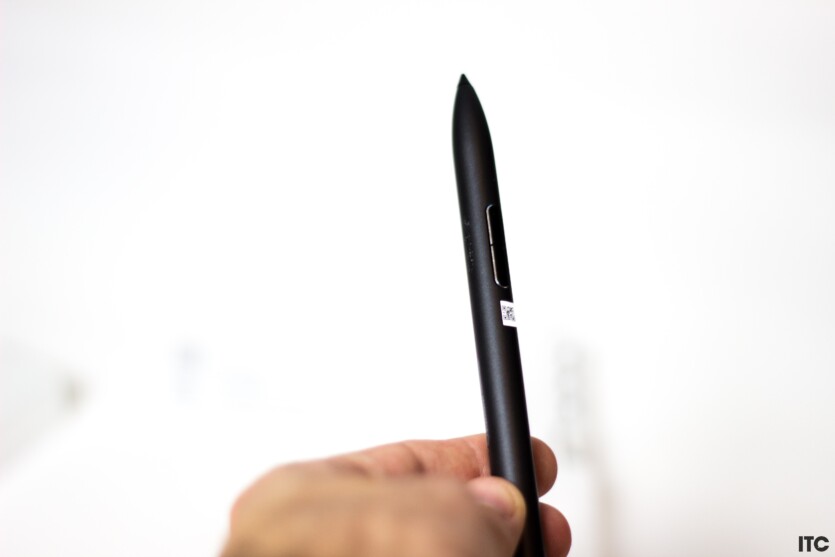
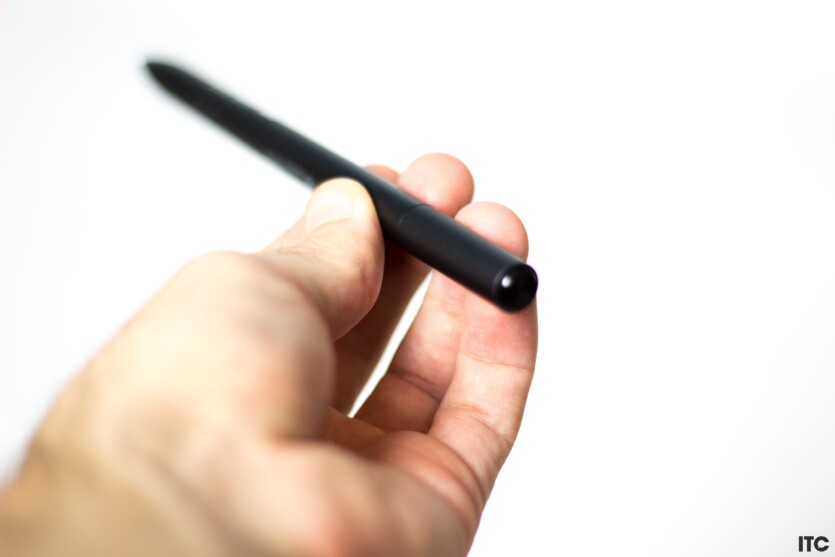


The laptop has two boxes: the large one contains a compartment with a 65W power supply and a branded stylus. The USB Type C cable is built into the PSU. The test sample has an American plug, as this model is not designed for the Ukrainian market. Officially purchased models will have the usual European plug. The smaller box contains the laptop itself and paper documentation.
Design, materials, interfaces Asus Zenbook S 16

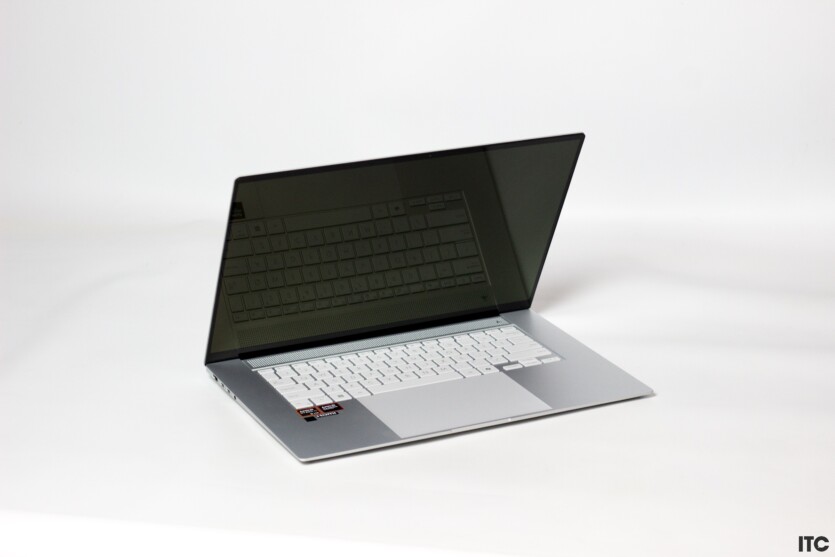
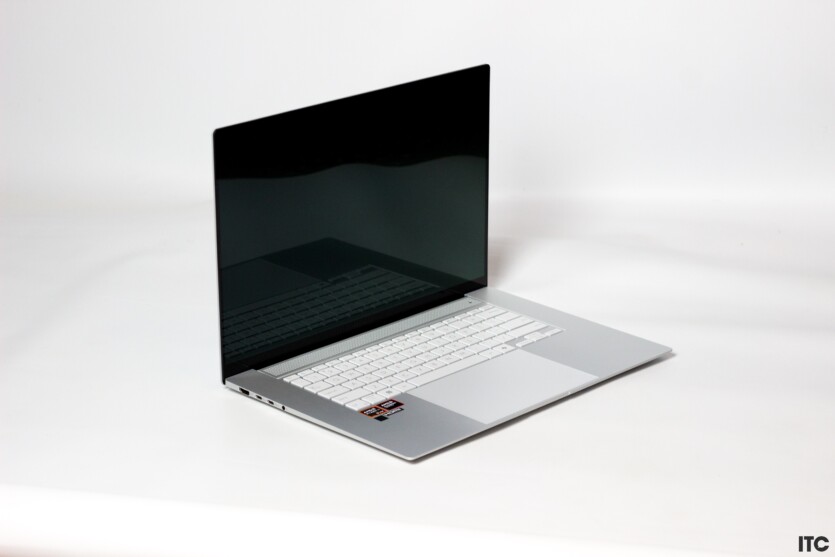
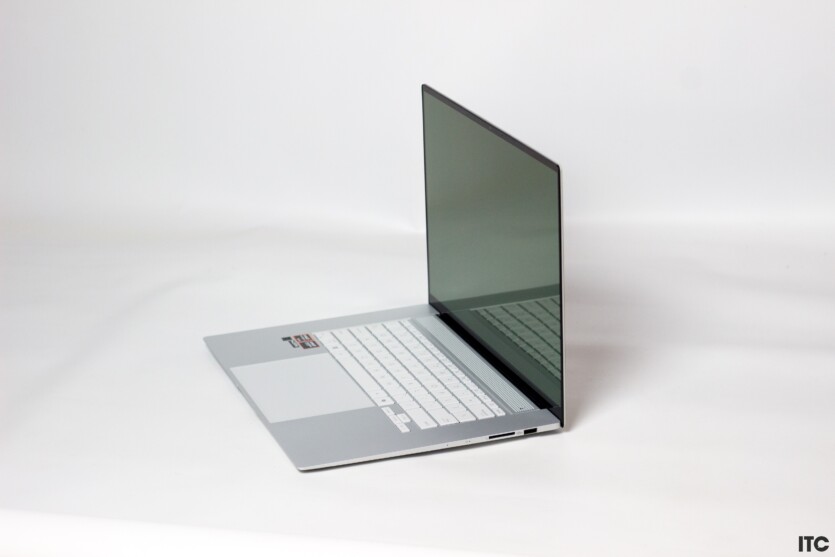
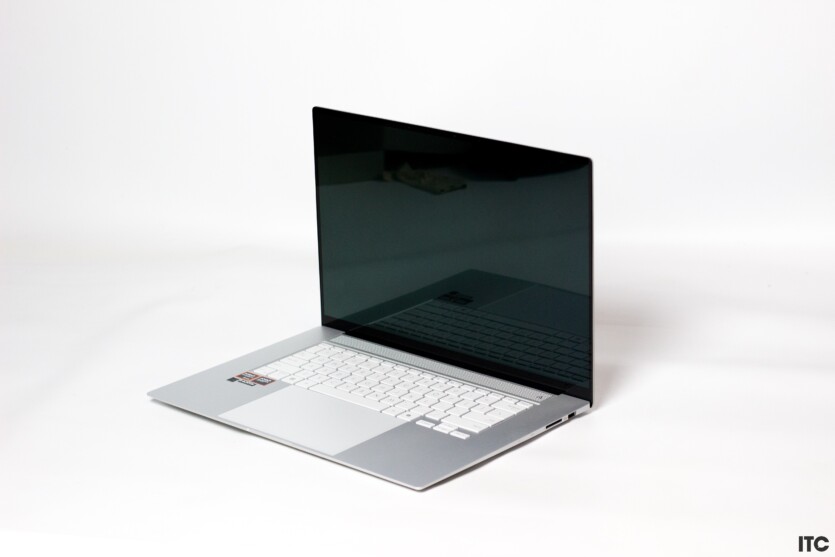
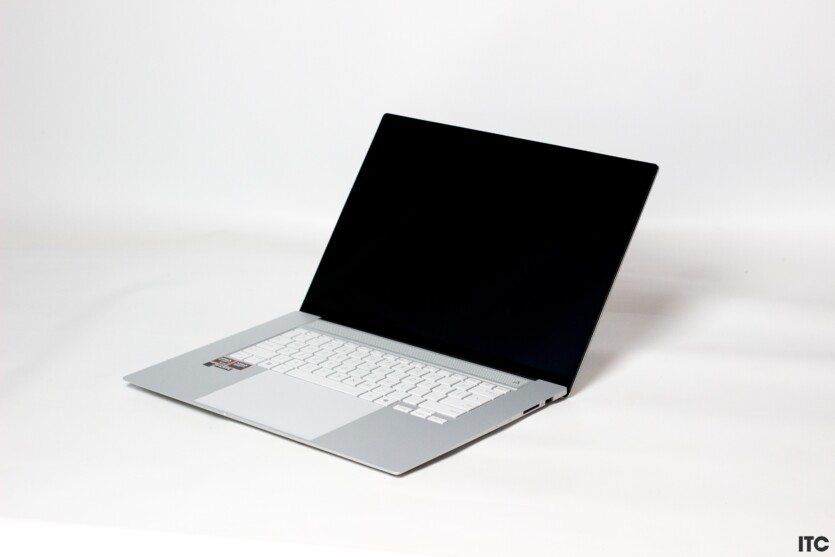
The Asus Zenbook S 16 body is made of aluminum alloy, quite light (1.5 kg), pleasant to the touch, and does not collect fingerprints everywhere except on the back. The radiator grille is single, large, solid, and located at the back, which means that it should not be placed in a bed if you plan to give it a high load (games, for example).
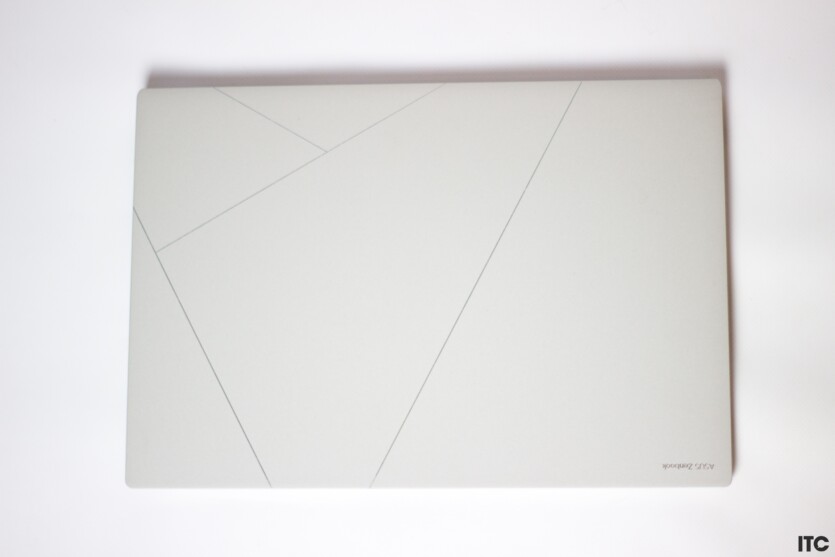
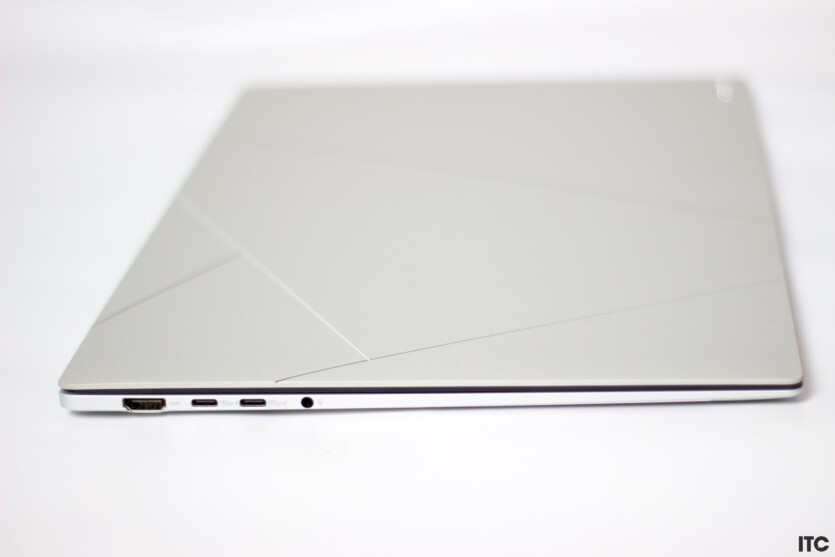
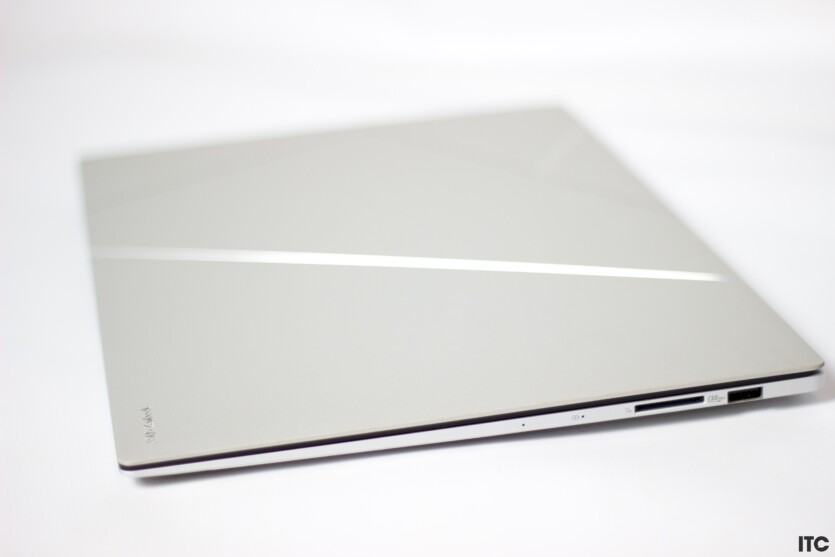
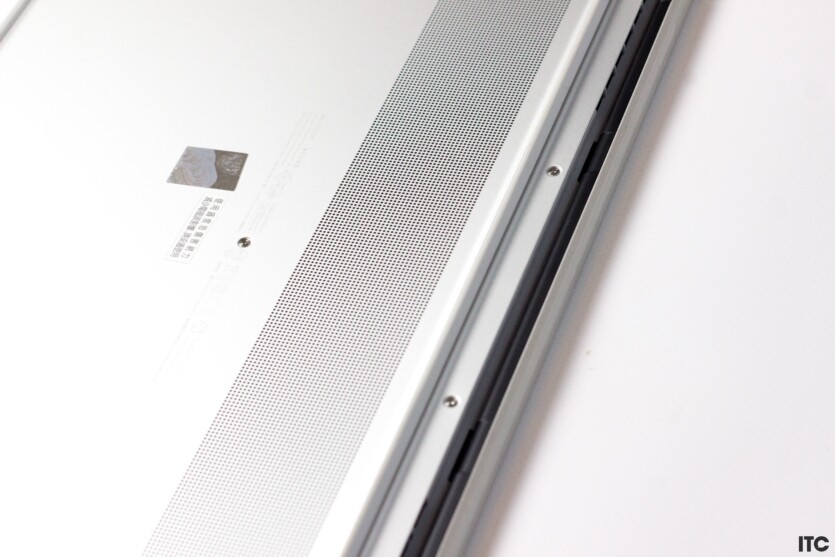
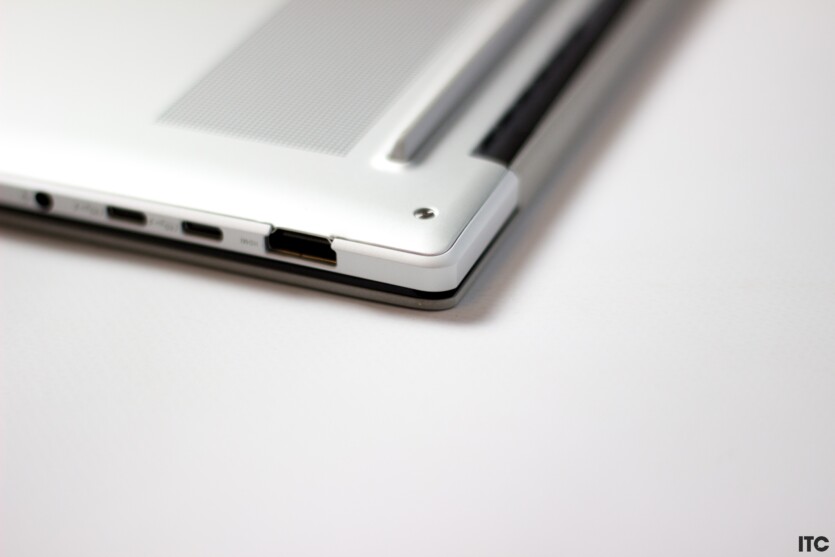
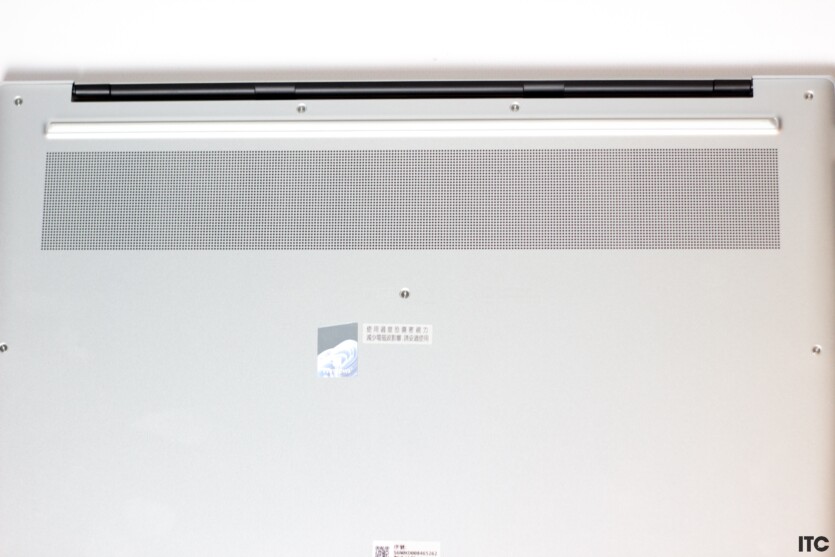
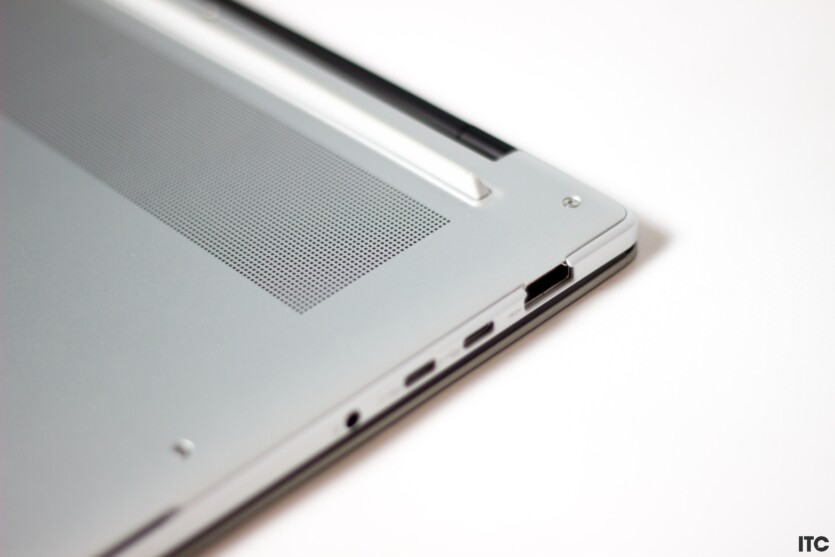
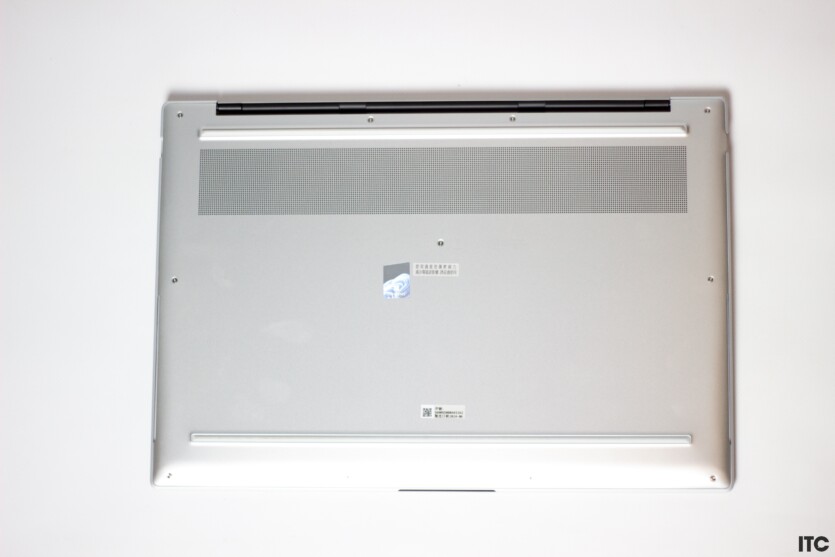
The air is blown downward, and the laptop always wants a solid surface. The flaps work smoothly, Asus Zenbook S 16 opens with one hand, like an Apple MacBook. The top cover is very thin, bending at the slightest touch with your finger. This laptop needs to be handled carefully because the case does not give the impression of being reliable and durable.
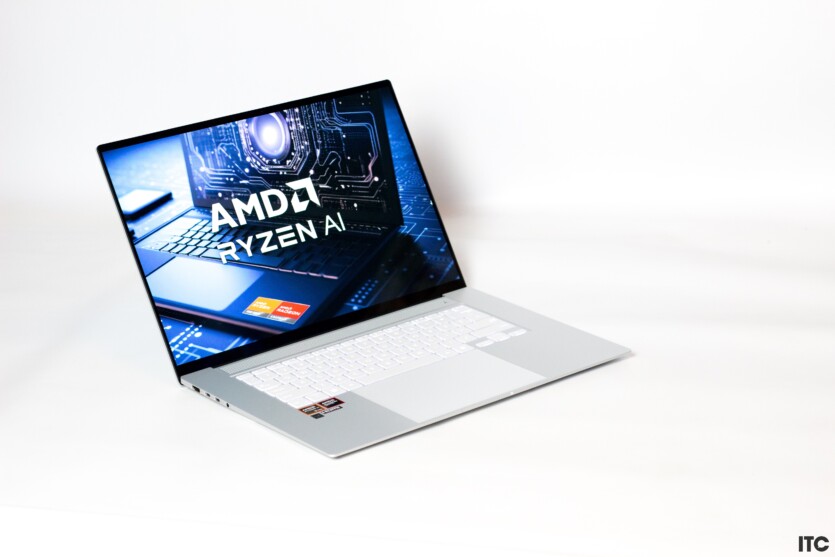
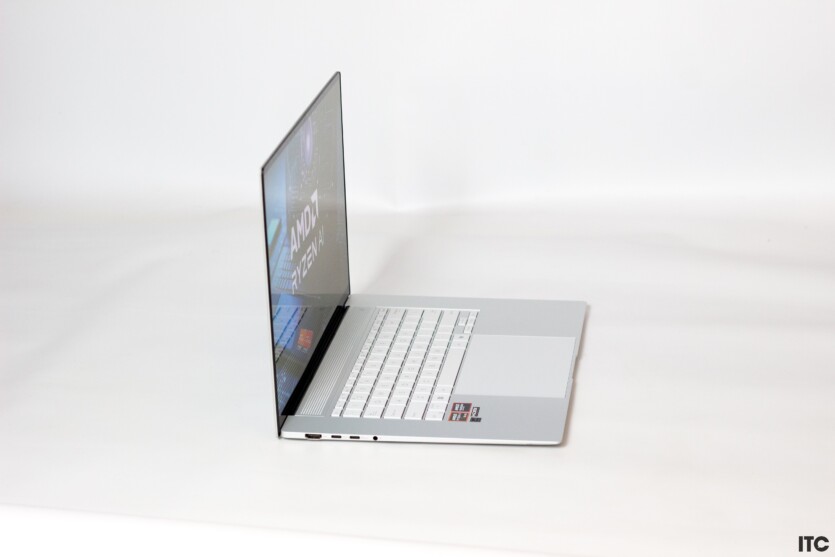

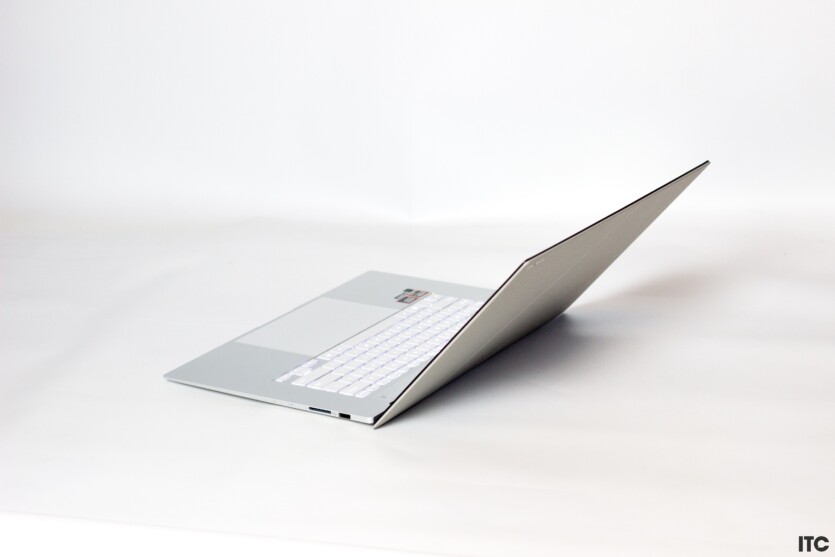
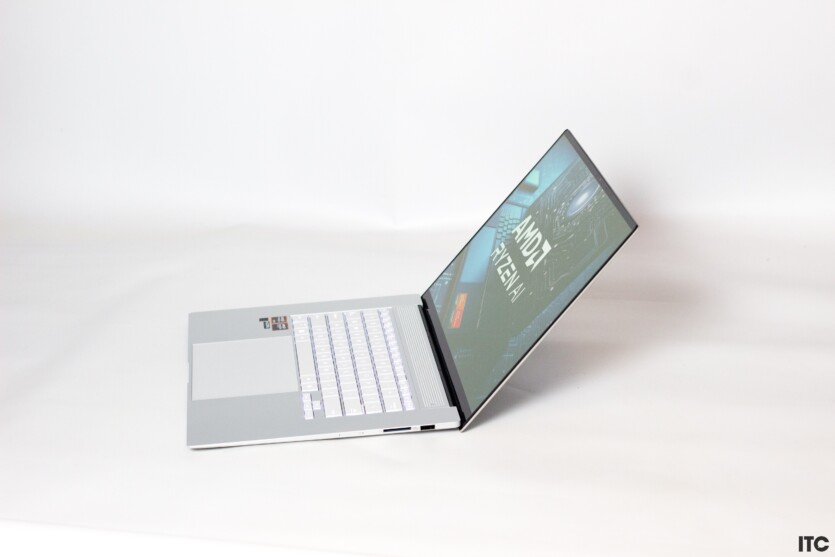

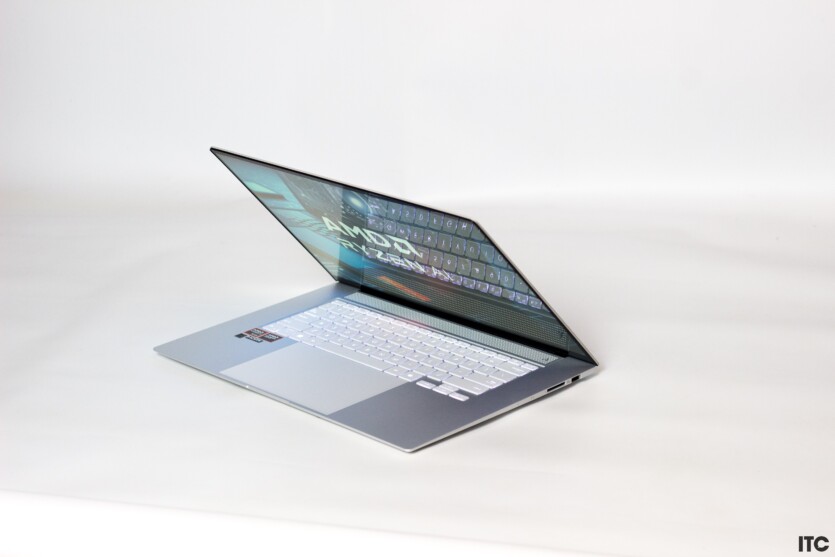


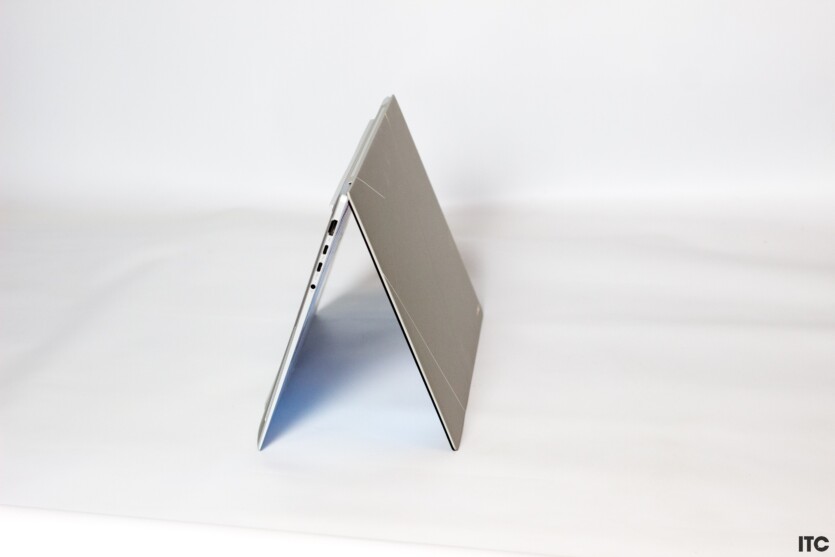
Under the keyboard, the manufacturer stuck some advertising, replacing the elegant surface of the product. It doesn’t add to its aesthetic component, but stubborn companies continue to stick their stickers in such premium equipment.
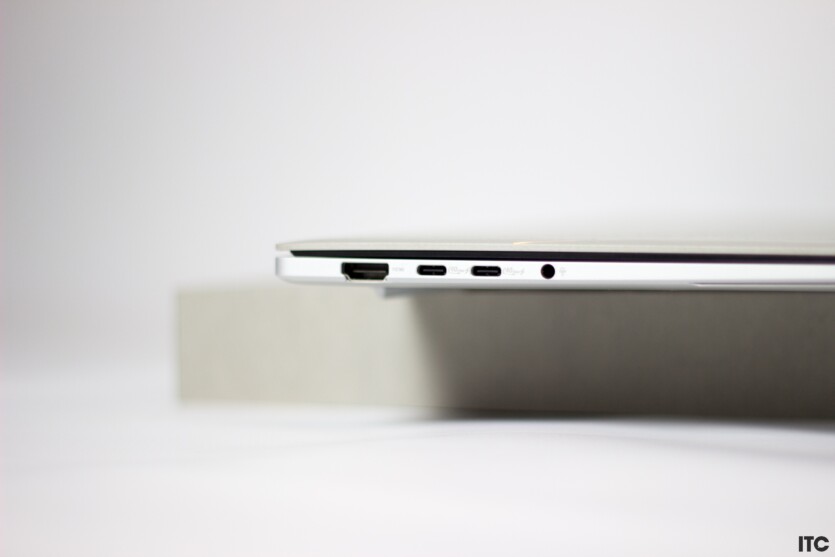
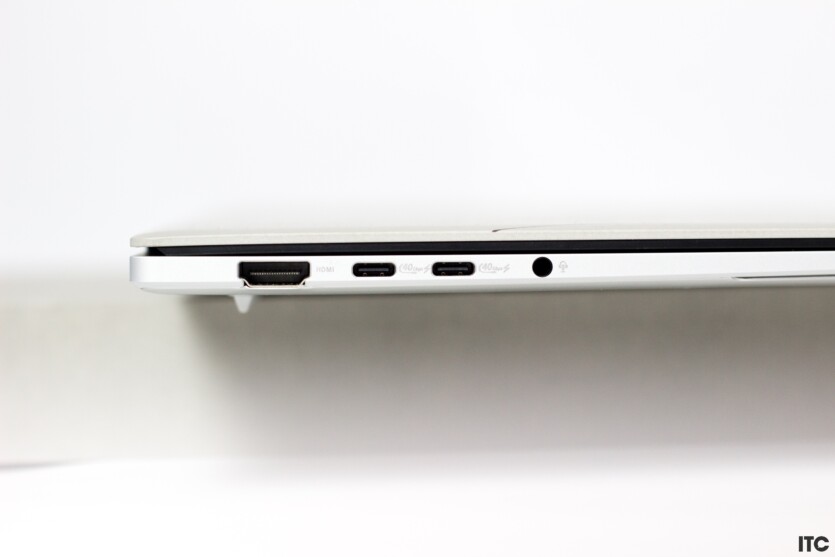
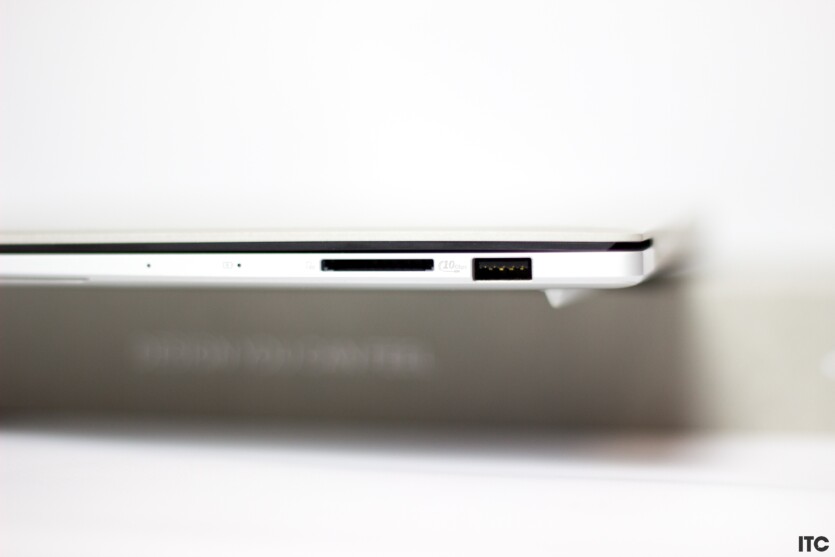

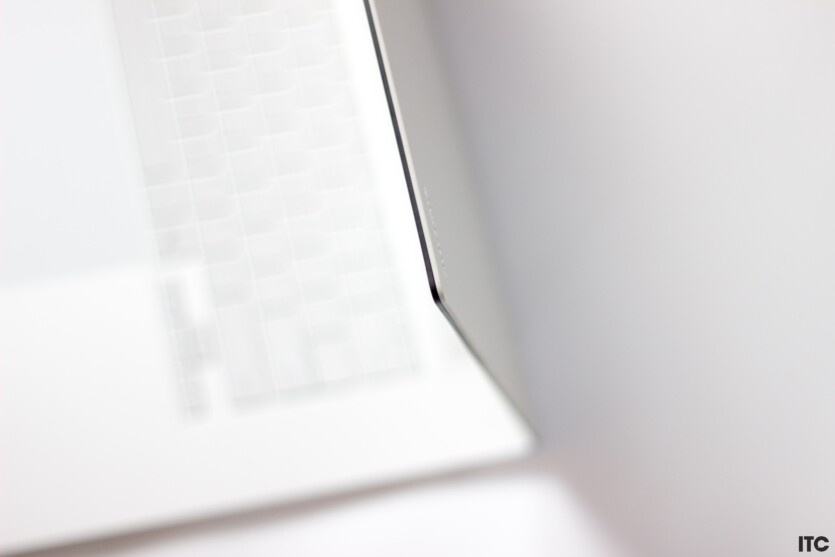

The right side contains an SD card slot and one USB Type A. On the opposite side, we have two Thunderbolt 4, a 3.5 mm headphone/microphone jack, and a full-size HDMI.
Asus Zenbook S 16 keyboard and touchpad
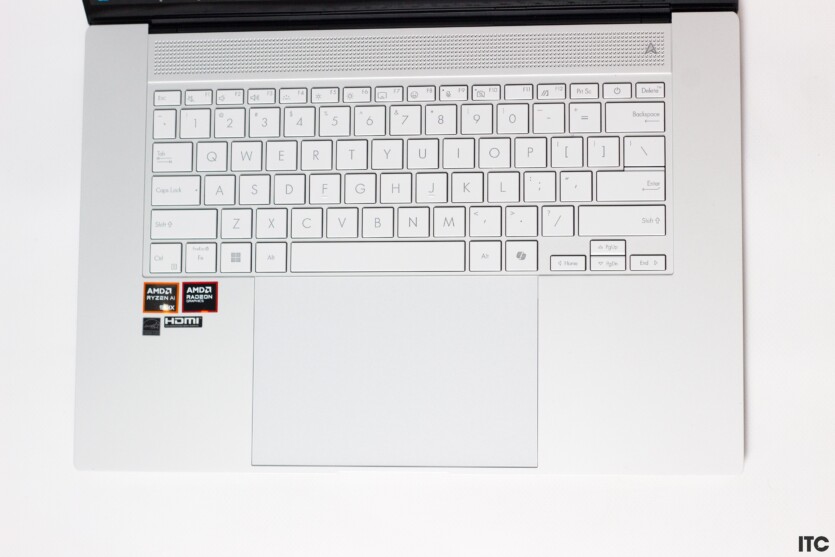
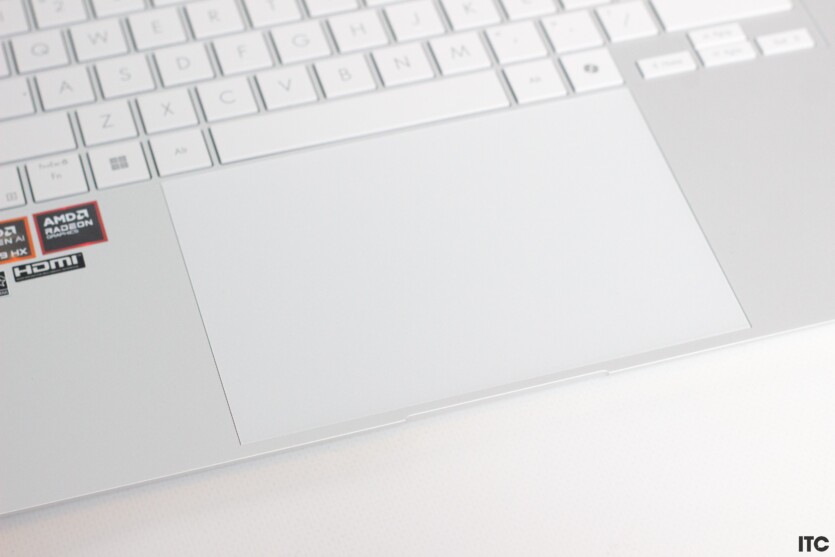
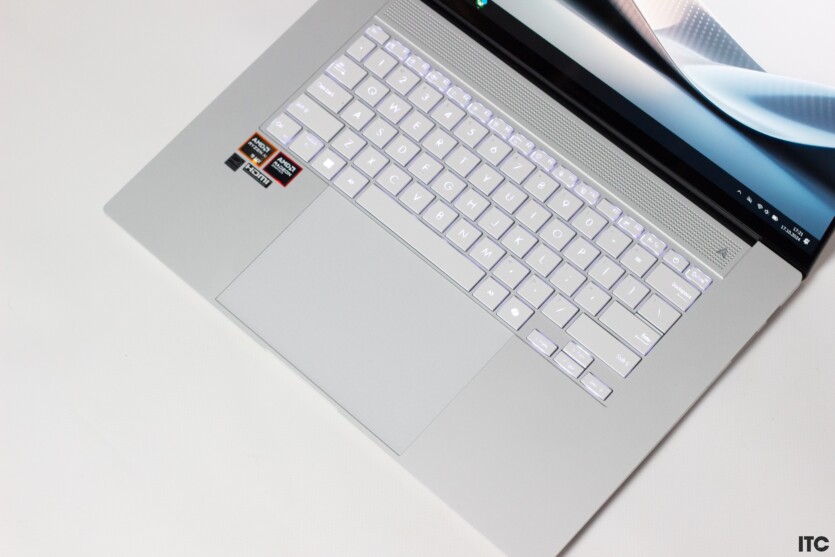

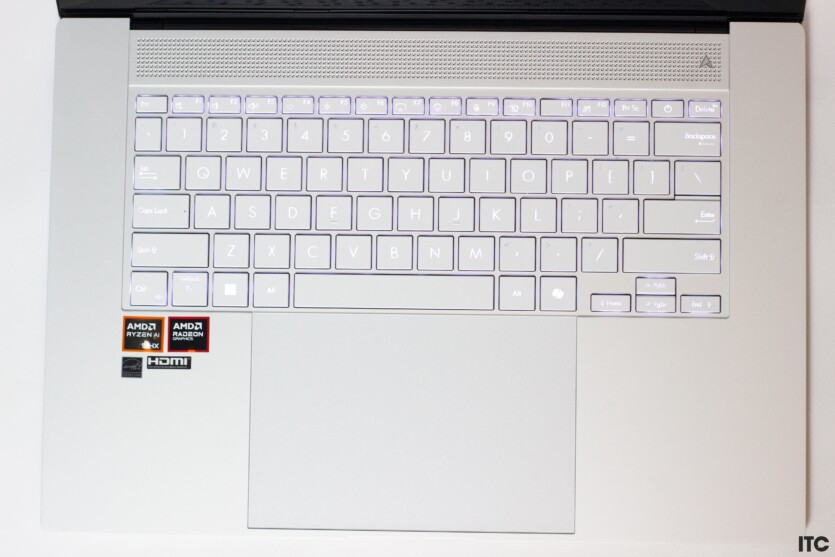
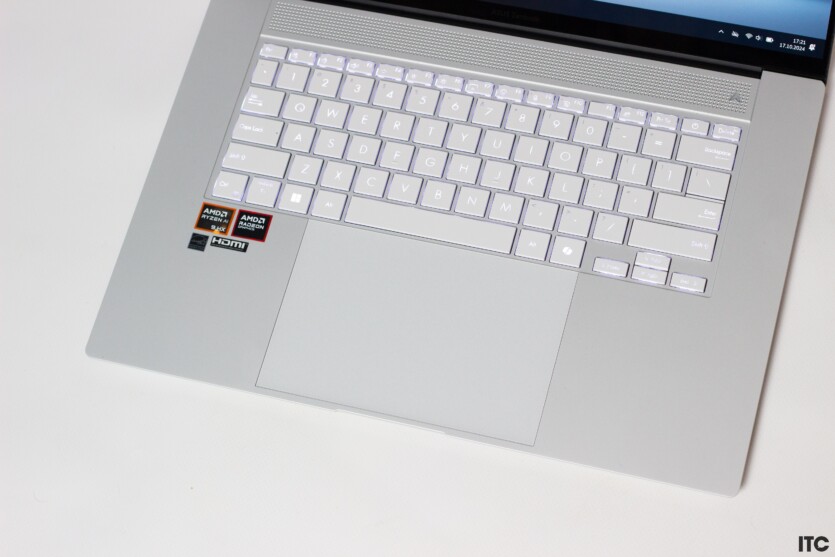
There’s no number pad, as in popular Apple laptops. The keys are large (except for the arrows), comfortable, and quiet. There is a separate button for the Copilot assistant. The keyboard backlighting is poorly implemented because the minimum level is almost the same as the maximum — it shines too brightly at night.
The touchpad is huge — you can easily fit a modern gamepad into it. It’s easy and pleasant to work with, and you can completely forget about old-fashioned mice, and even more so with gestures.

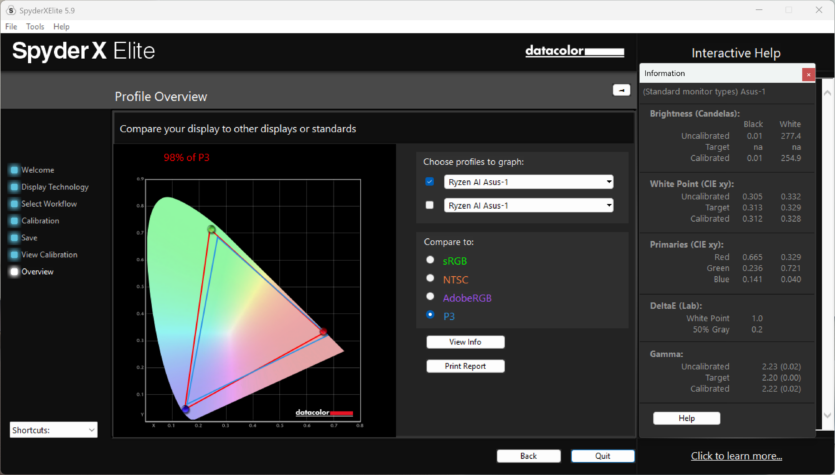
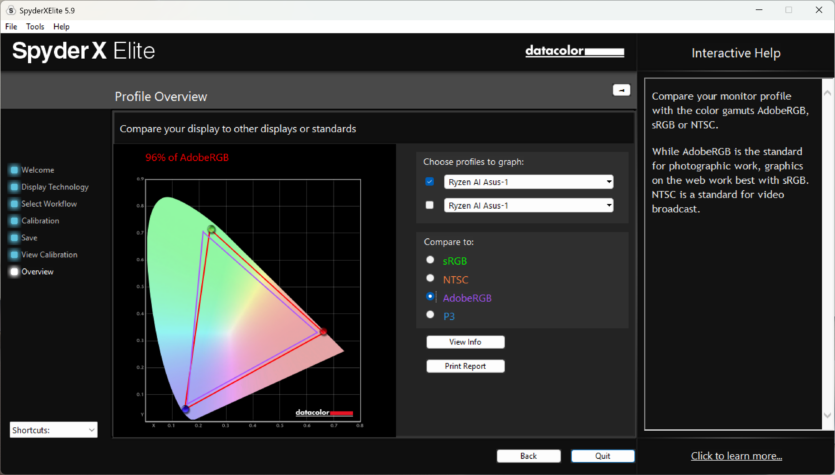
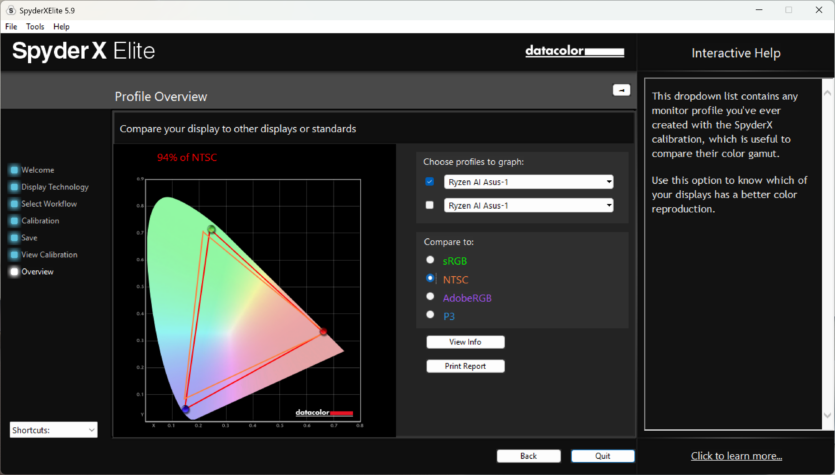
The brightness margin is sufficient, HDR content looks good. The smallest text fonts are smooth, with excellent antialiasing, but there are a few drawbacks. First of all, the glossy finish partially offsets the good brightness in the sun, as it reflects light quite a bit, and the white color disappointed.
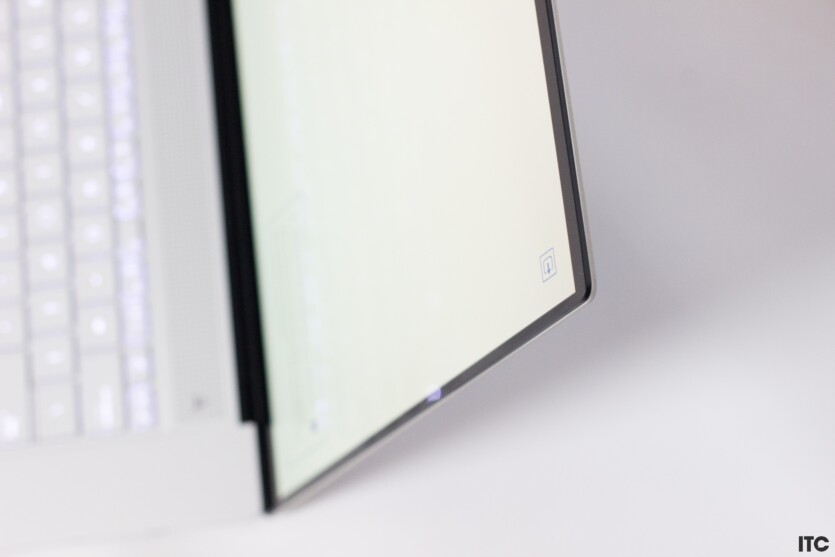
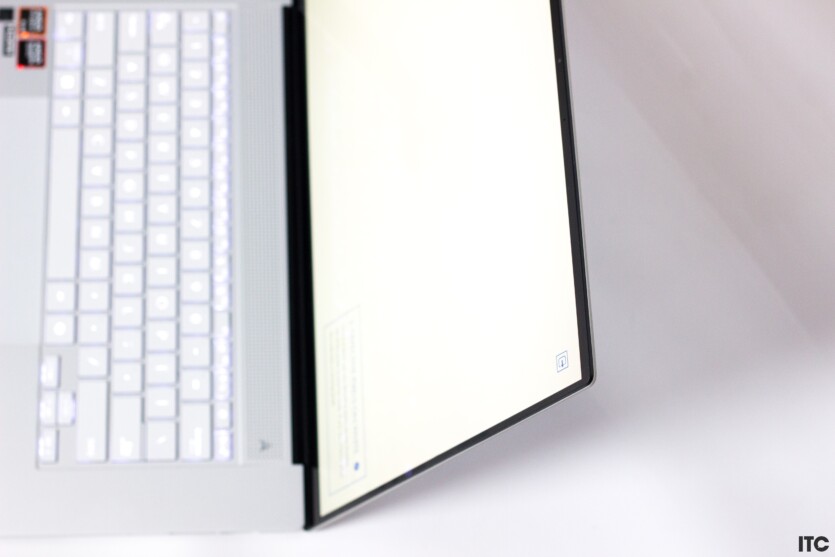
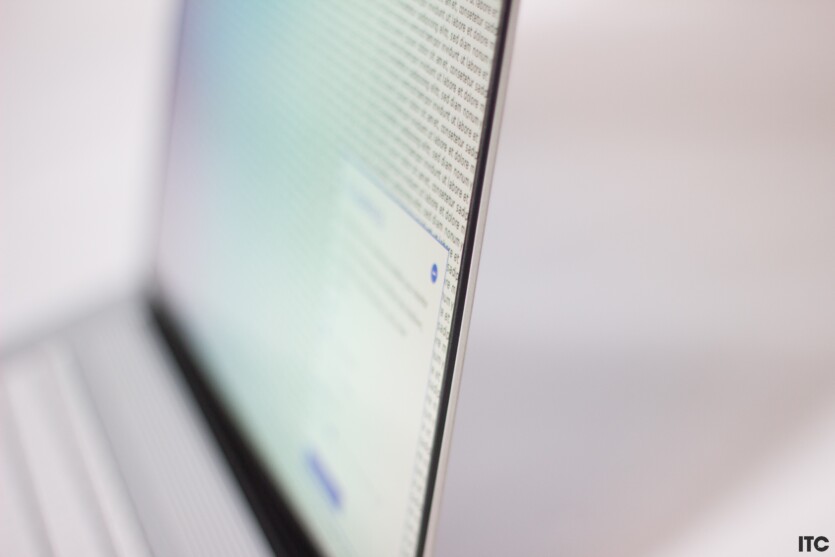

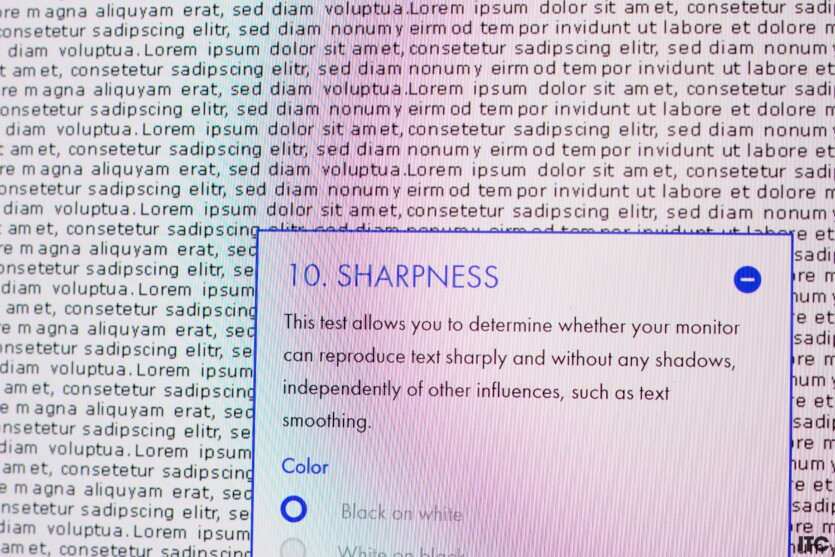
Like most OLED matrices, this one suffers from yellowing/greening of the white color at an angle. The situation is not as in the Asus Zenbook DUO 2024 but defects are still noticeable, especially after high-quality mini-LED screens.
Six speakers produce loud, pleasant, realistic, clear sound with bass. The camera is Full HD, of average quality. The standard camera program can work with the NPU, which is used to blur the background, track objects, etc.
Work productivity
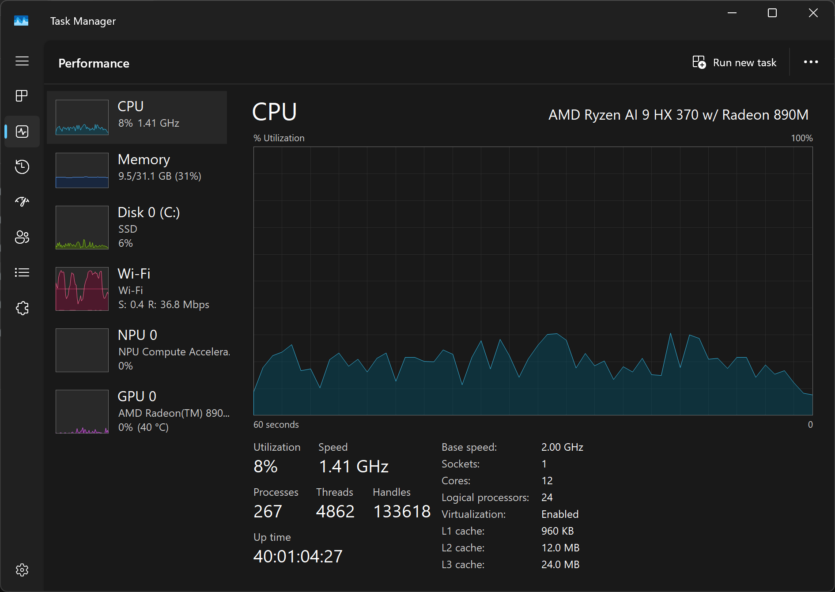
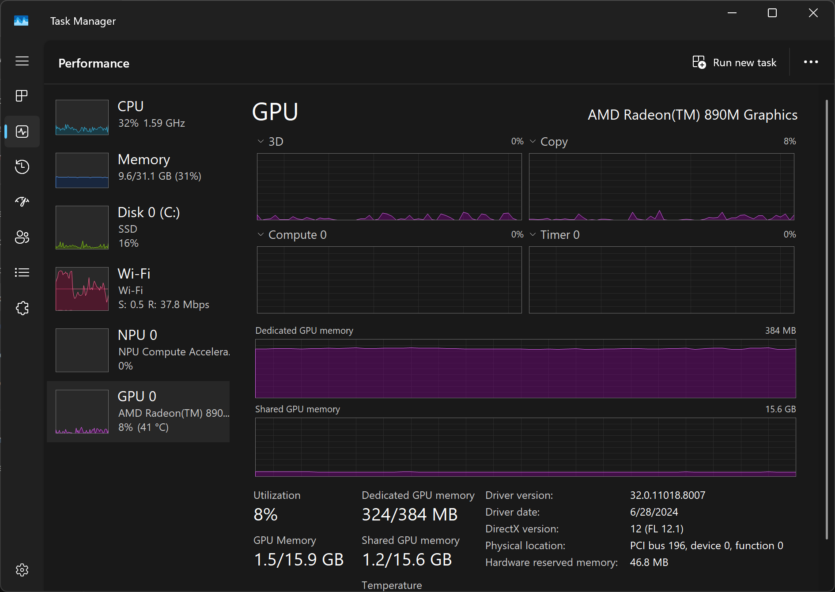
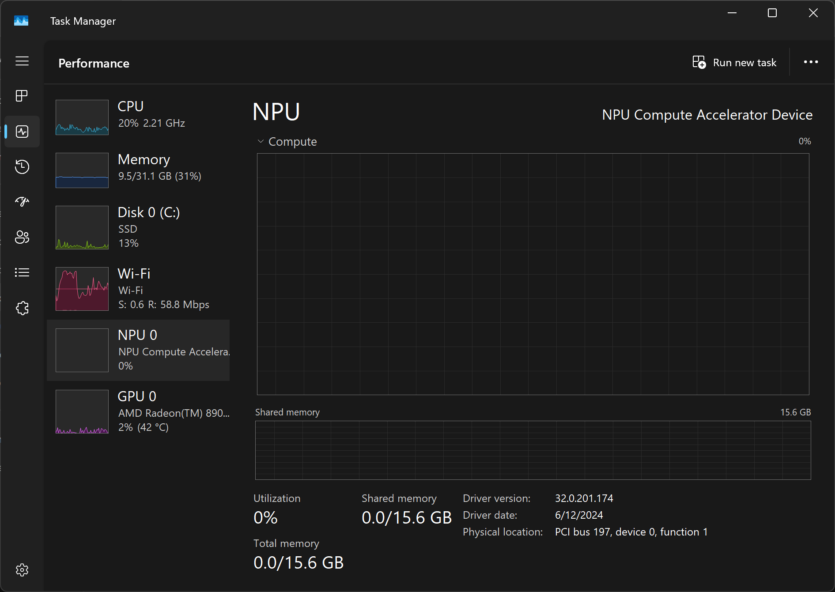
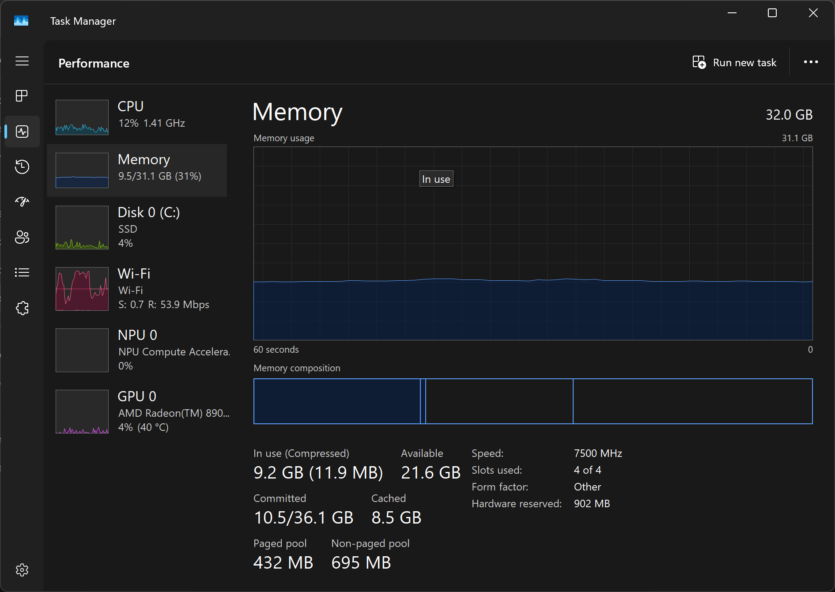
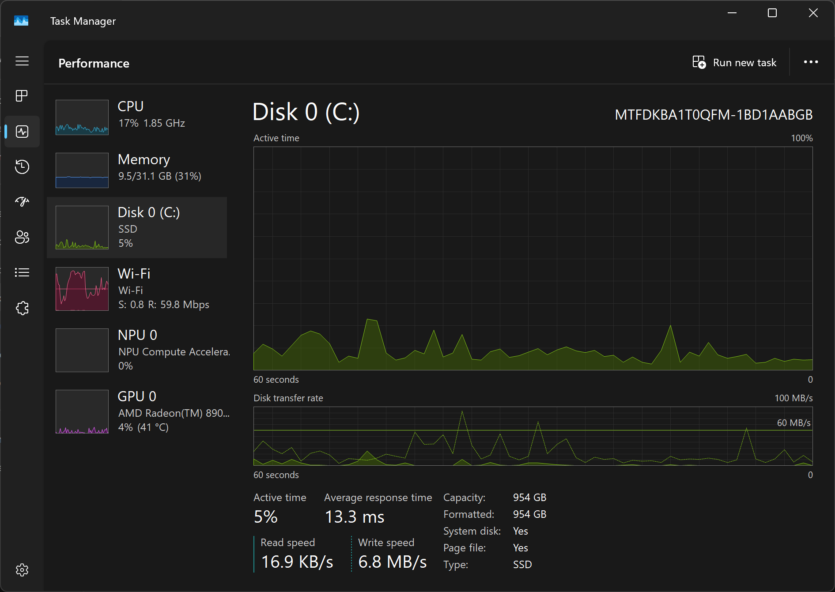
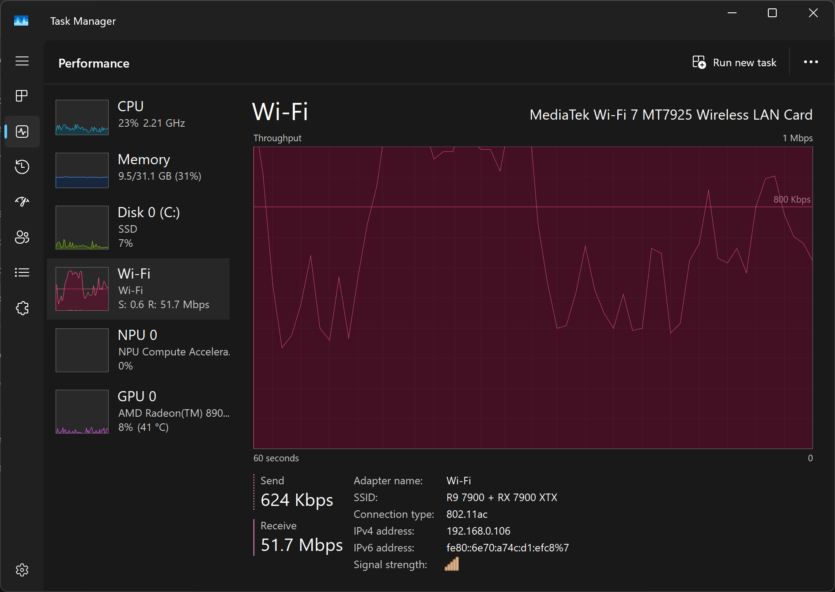

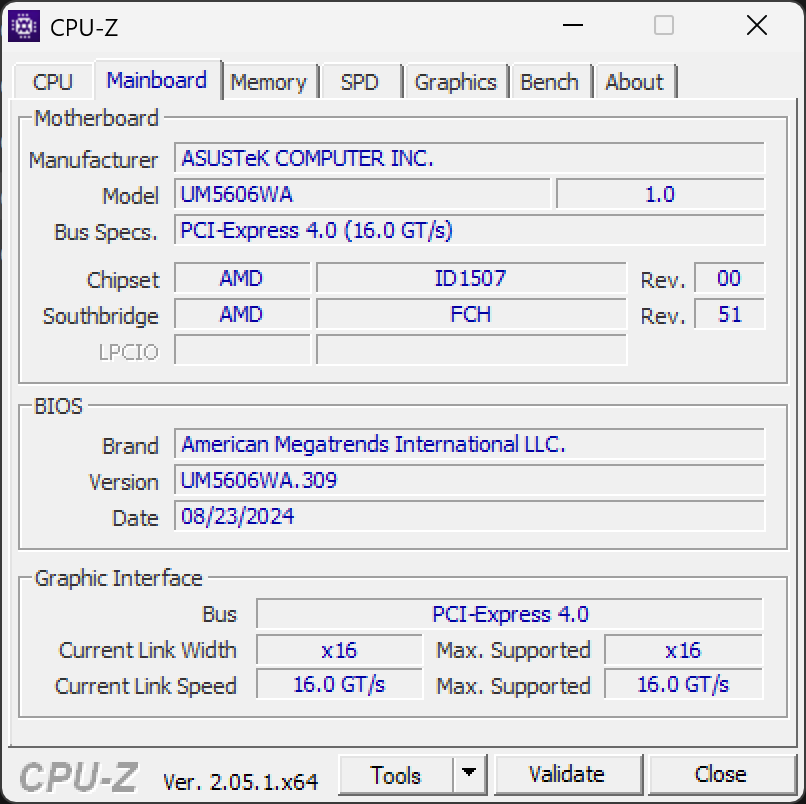

| Benchmark / Mode | BATTERY | Asus battery | PSU |
| Geekbench Single | 2538 | 1579 | 2829 |
| Geekbench Multi | 12231 | 8968 | 12572 |
| CPU-Z Single | 763 | 501 | 775 |
| CPU-Z Multi | 7480 | 6732 | 7604 |
| Cinebench 2024 Single | 69 | 97 | 112 |
| Cinebench 2024 Multi | 734 | 761 | 935 |
| Speedometer 3 | 19,6 | 11,4 | 23,3 |
| Google Octane 2.0 | 94777 | 45282 | 104929 |
| WebXPRT | 265 | 129 | 325 |
| Geekbench Open CL | 35603 | 31755 | 33208 |
| Geekbench Vulkan | 39364 | 42336 | 36275 |
| SSD Read MB/s | 4973 | ||
| SSD Write MB/s | 3422 | ||
| RAM Read MB/s | 100246 | ||
| RAM Write MB/s | 99235 | ||
Asus seems to have not fully realized that this laptop has a 12-core flagship processor that needs a little more power than budget solutions. That’s why the performance in Eco (standard) mode is so different from normal.
This has little effect on battery life because the processor is idle most of the time, and only gets loaded when you open web pages and programs, or perform certain actions in the system. Moreover, without any restrictions, it does all this almost doubly faster!

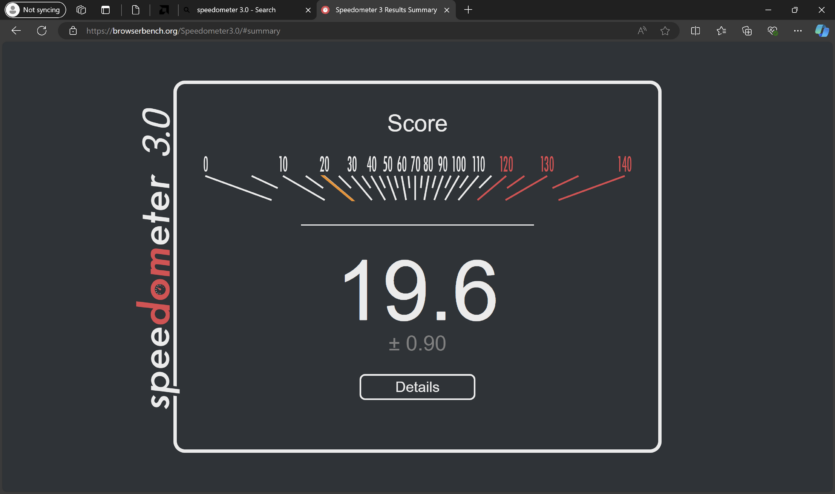
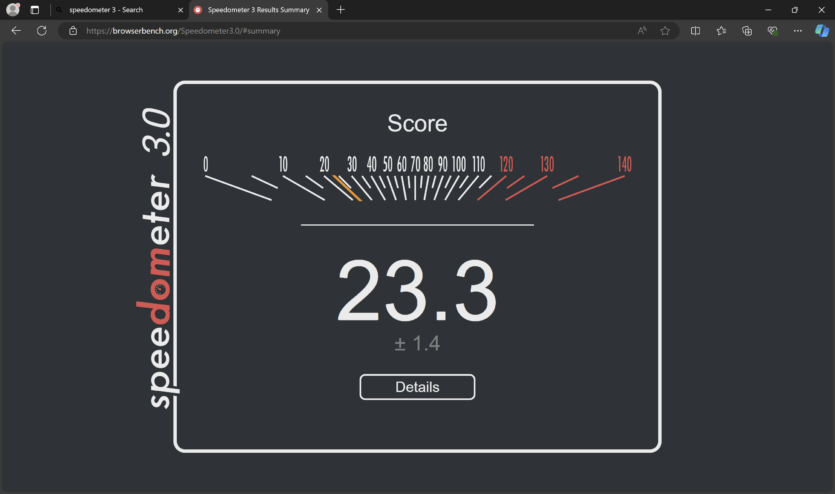
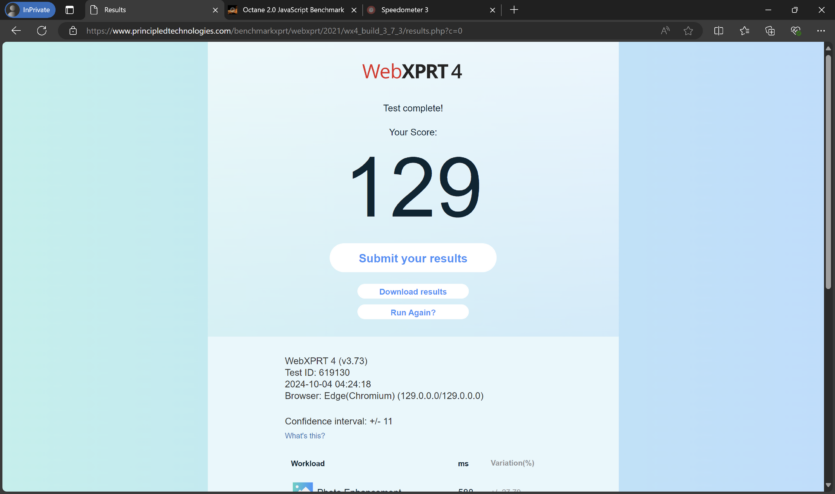
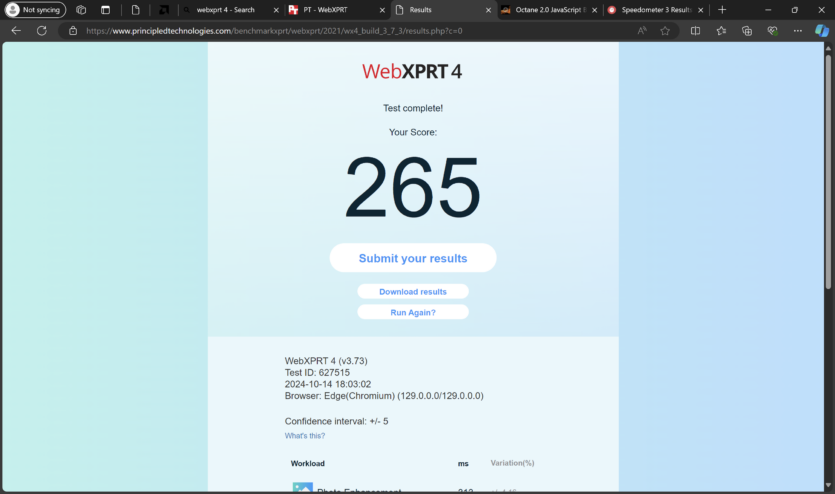
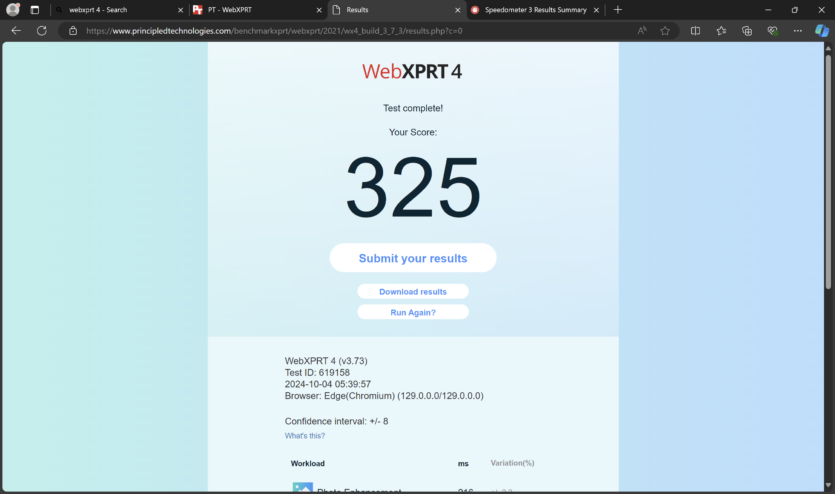
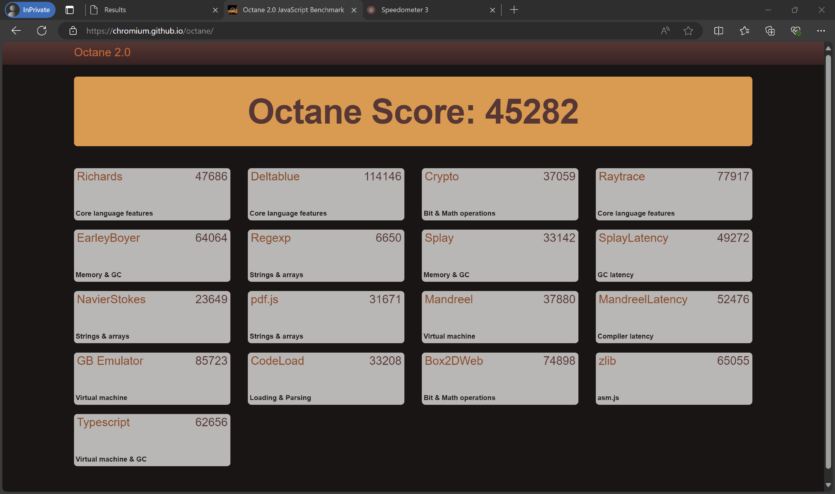
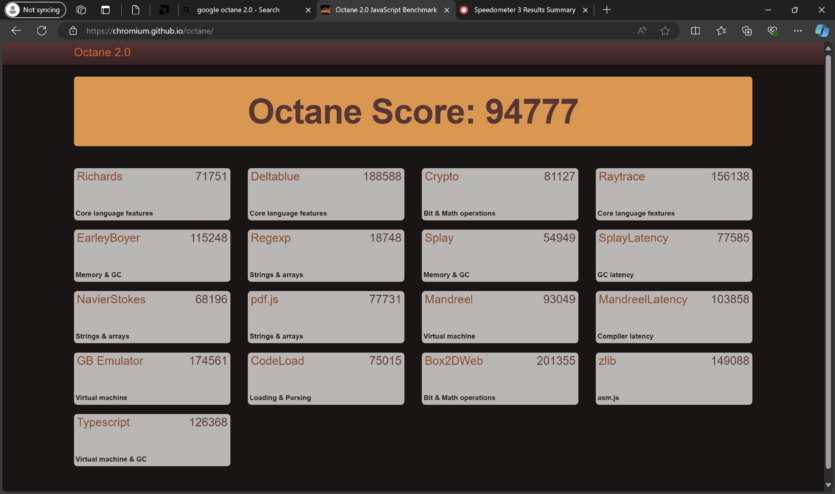
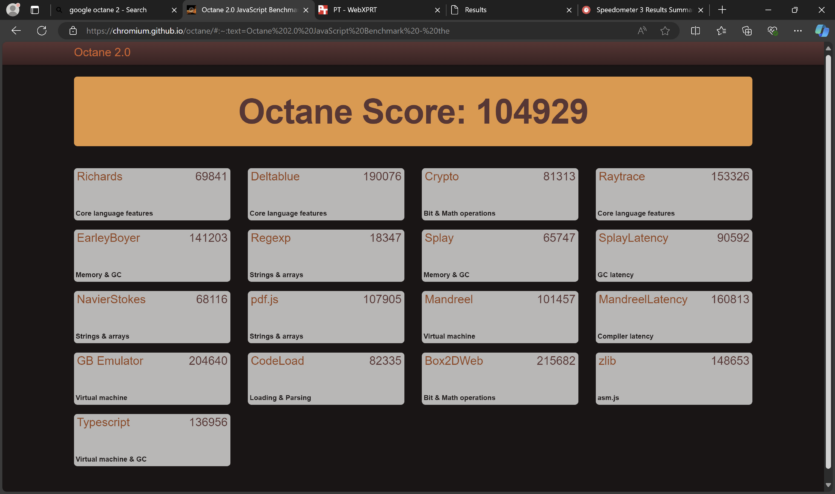
In the browser, the laptop is fast, but it doesn’t show amazing results. This is the typical level of a modern premium laptop. AMD Ryzen AI 9 HX 370 is still losing to ARM solutions from Apple Silicon in the Max 2022-2023 versions, and fresh M4 chips are on the way.
In multicore tests, the situation is better because 12 cores do their job. The laptop shows good results in Cinebench 2024. For example, the desktop AMD Ryzen 7 5800X is noticeably weaker than the economical AMD Ryzen AI 9 HX 370 chip designed for laptops.
That is, a laptop of this level is already completely replacing high-end computers of the previous generation when it comes to working in a scenario, and in many cases it is ahead.
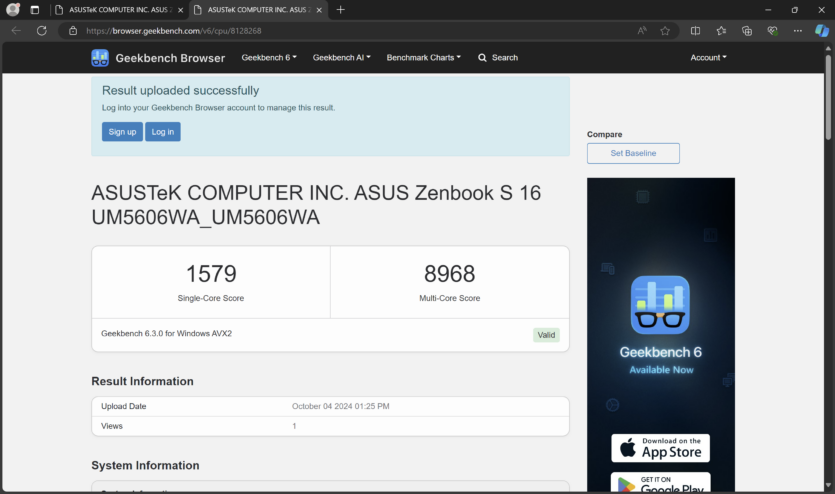
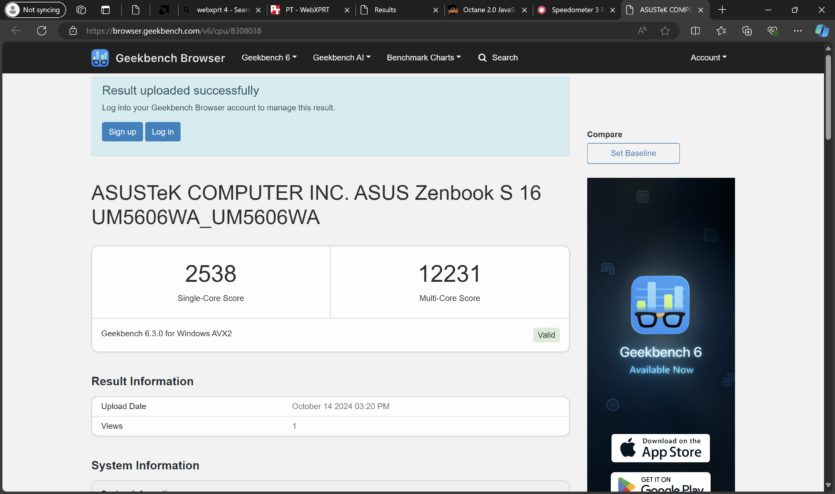
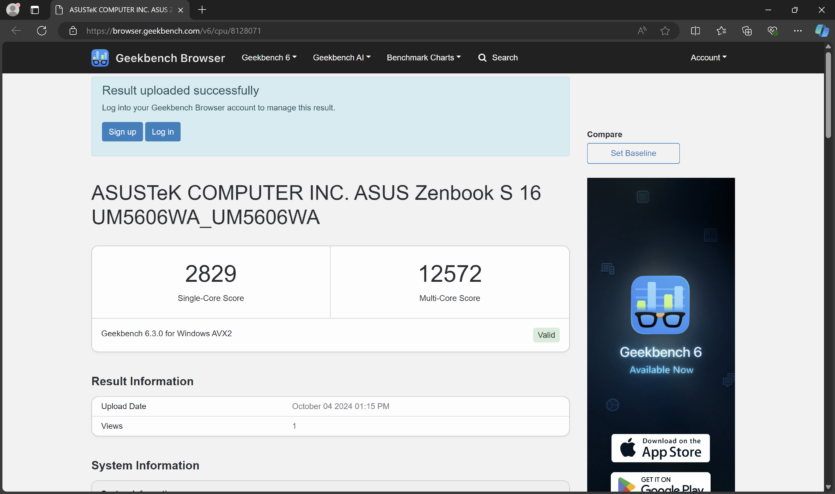
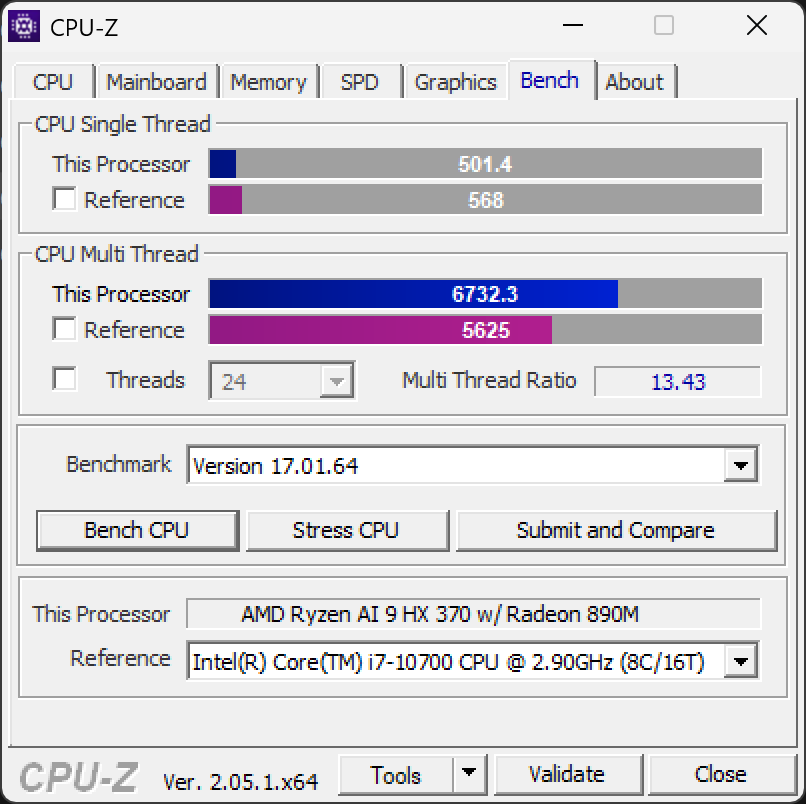
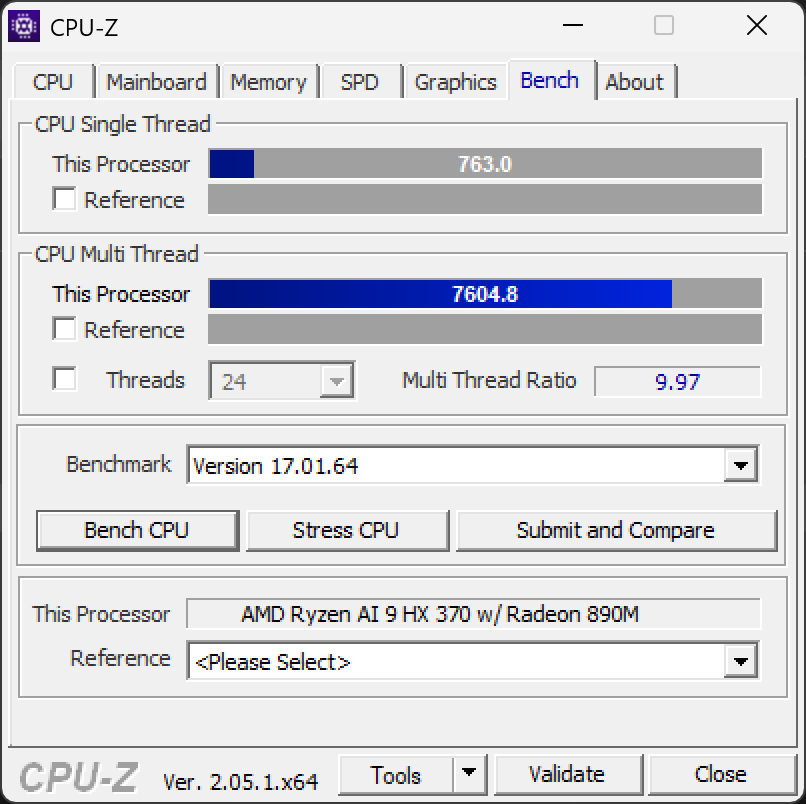
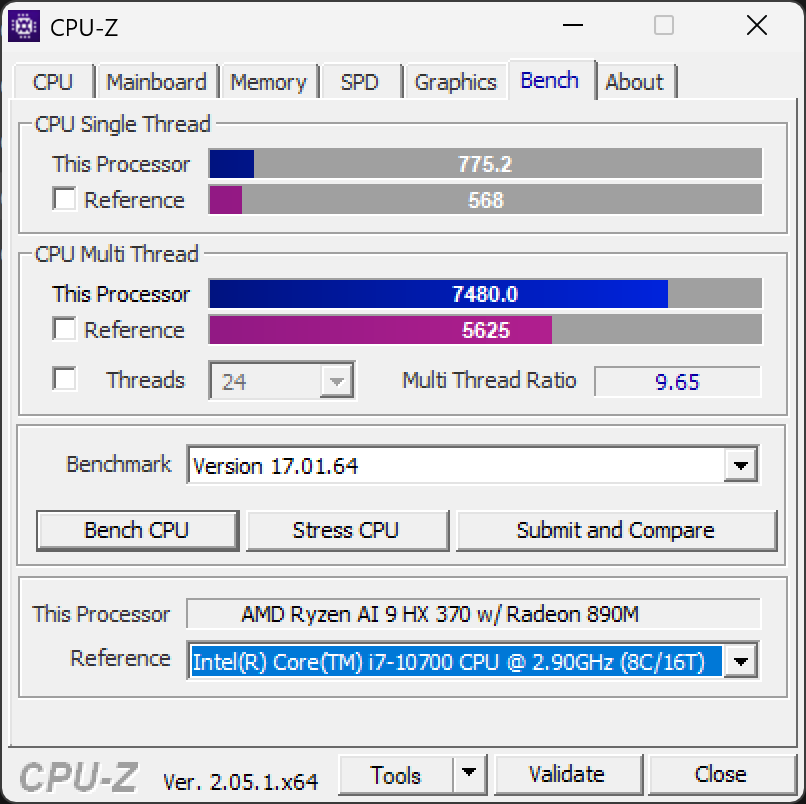
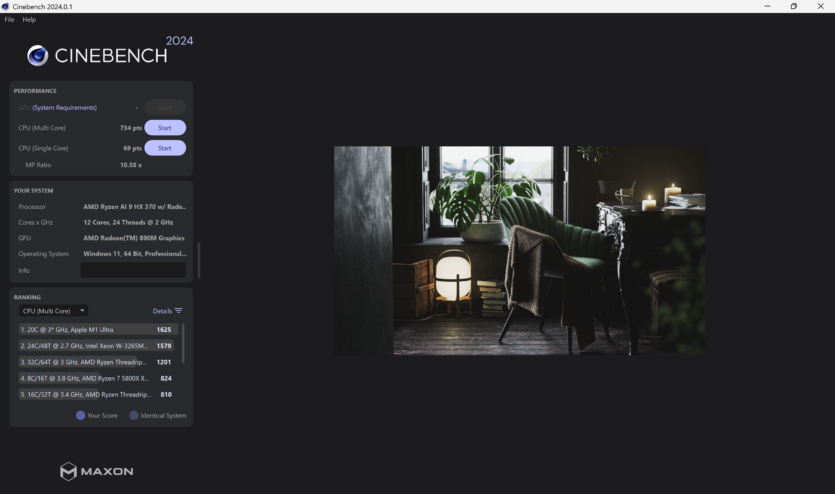
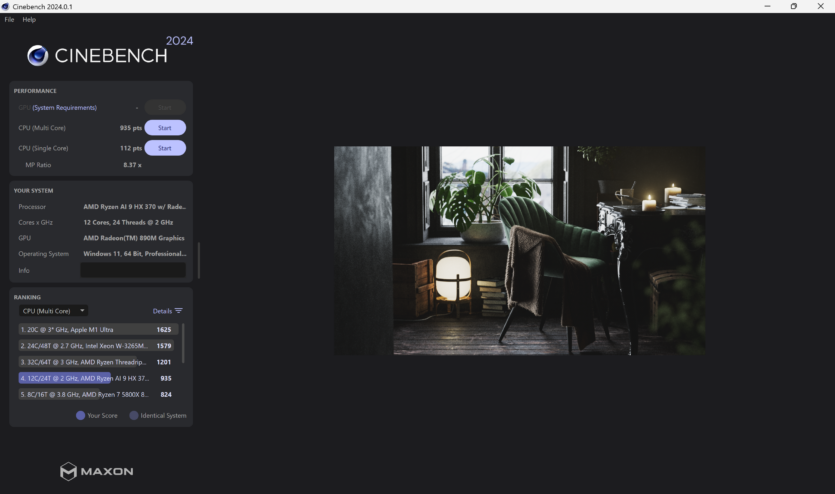
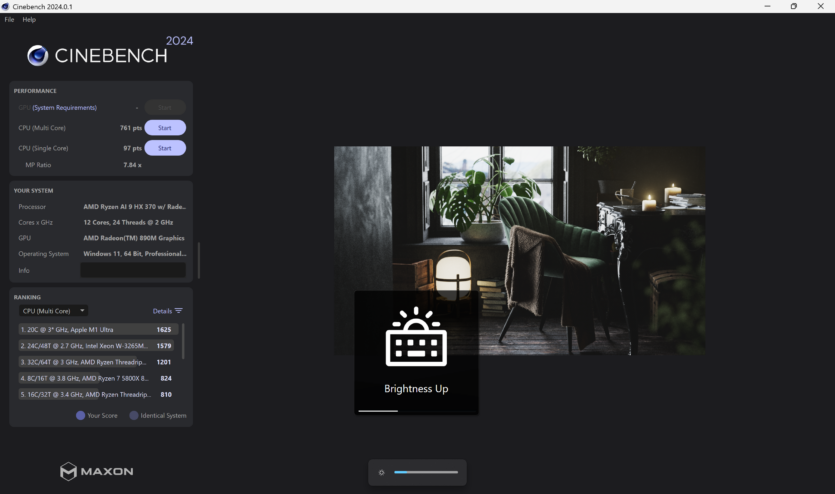
The «Power Saving» mode was not turned on in Windows, only the power supply was changed from «Standard» to «High Performance». This is very important because now there is almost no drop in battery performance, and the situation for the video card is interesting.
The Radeon 890M performs better on battery power because it is primarily the APU processor component that is limited in offline mode, not the iGPU. The video card is extremely productive for an integrated card.
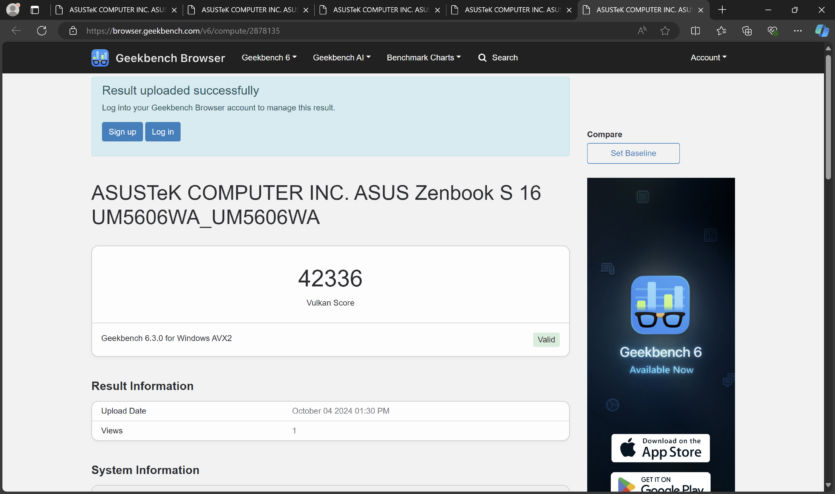
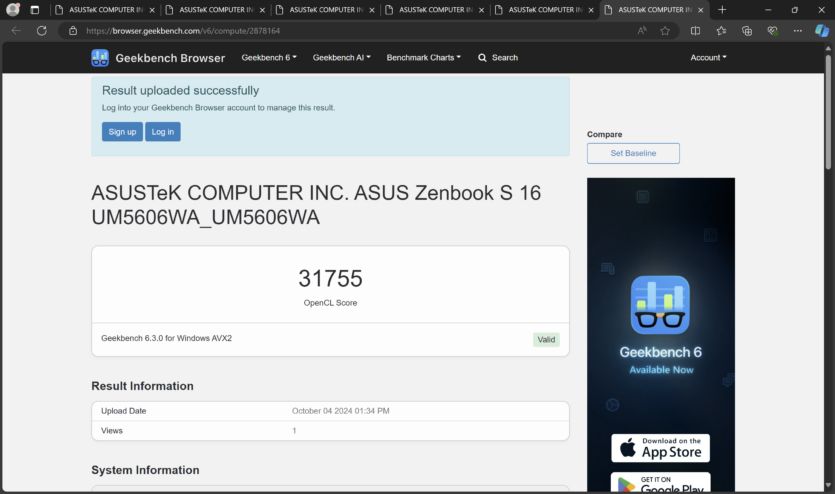
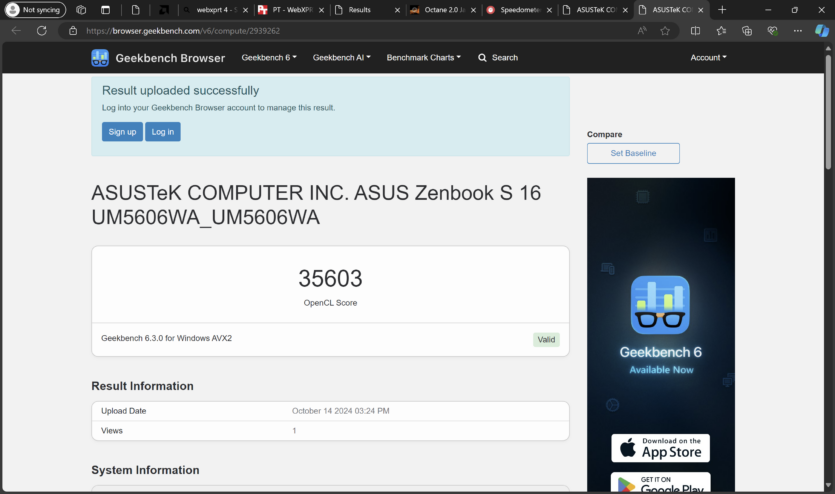

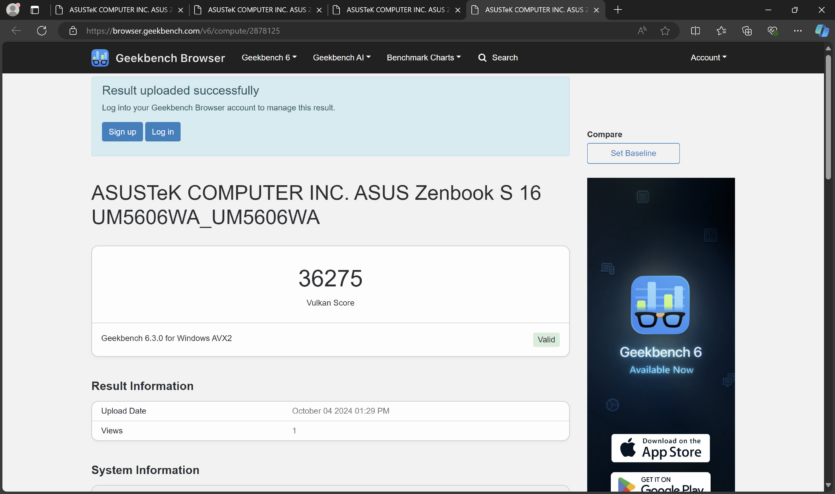
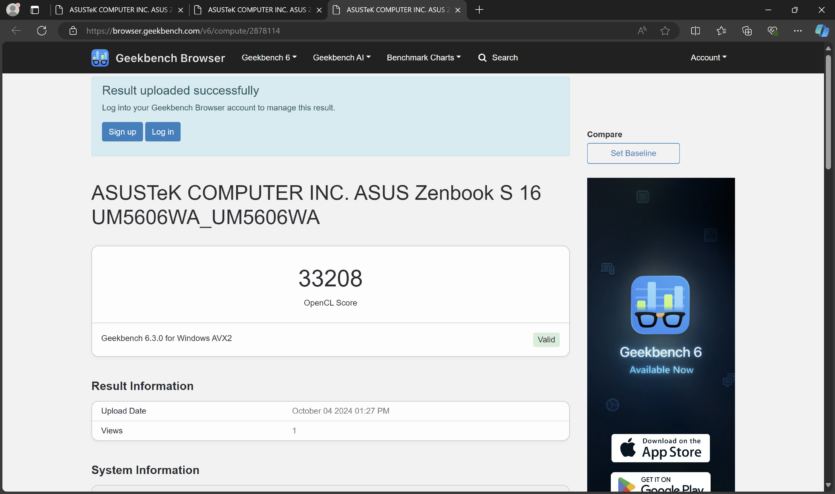
Rendering a heavy scene in D5 fully utilizes the graphics card and 50% of the CPU. It also requires almost 30 GB of RAM. For a 3D designer, this is not an ultimatum, but the AMD Ryzen AI 9 HX 370 still manages thanks to its strong iGPU.
Exporting a 10 GB video file with the x265 codec in Full-HD resolution takes 15-16 minutes, as does upscaling five photos in Gigapixel AI from 18 to 286 MP. This laptop can edit 15-20 minute videos for YouTube without any problems, and if necessary, it can render a much longer video for several hours. We will discuss the capabilities of artificial intelligence in local neural networks in a separate section below.

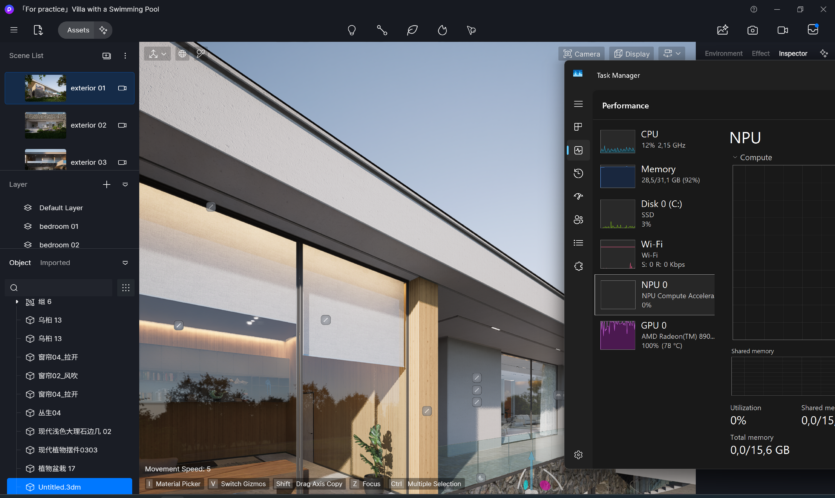
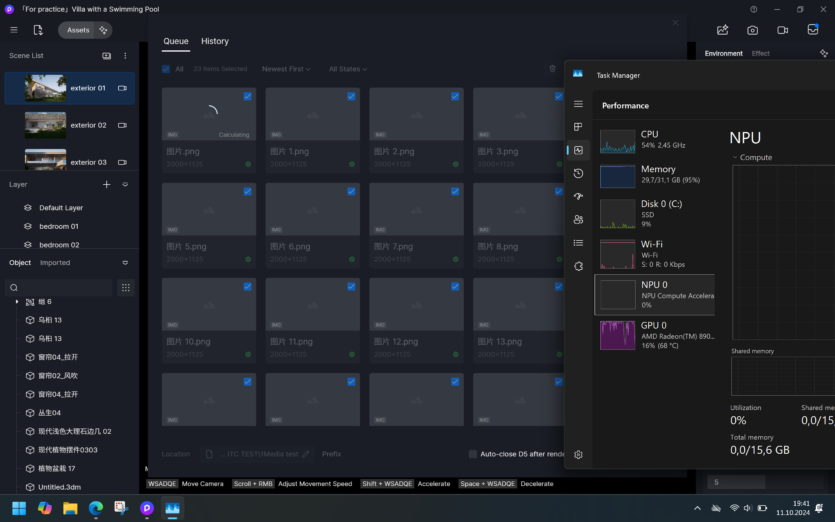
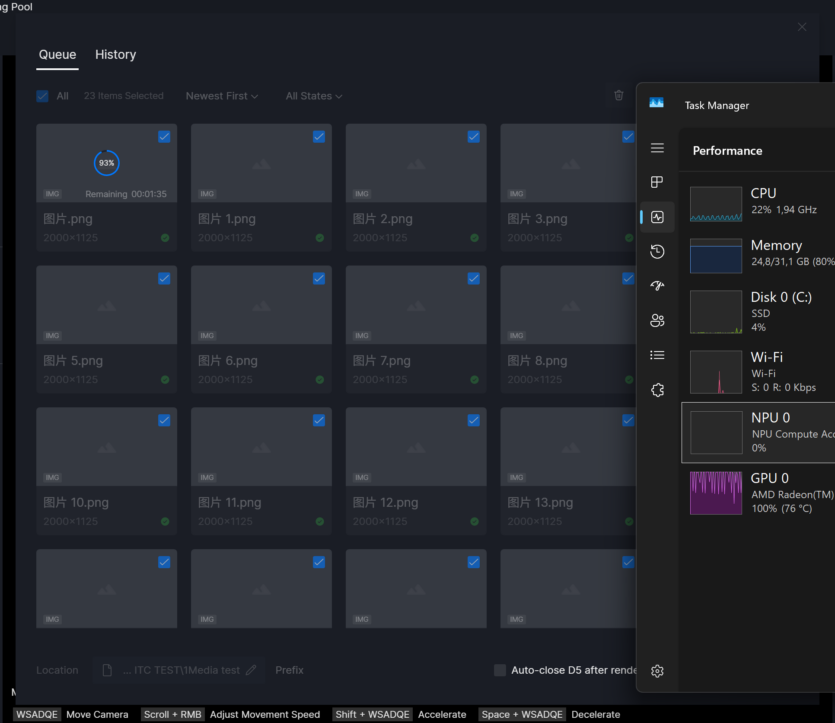
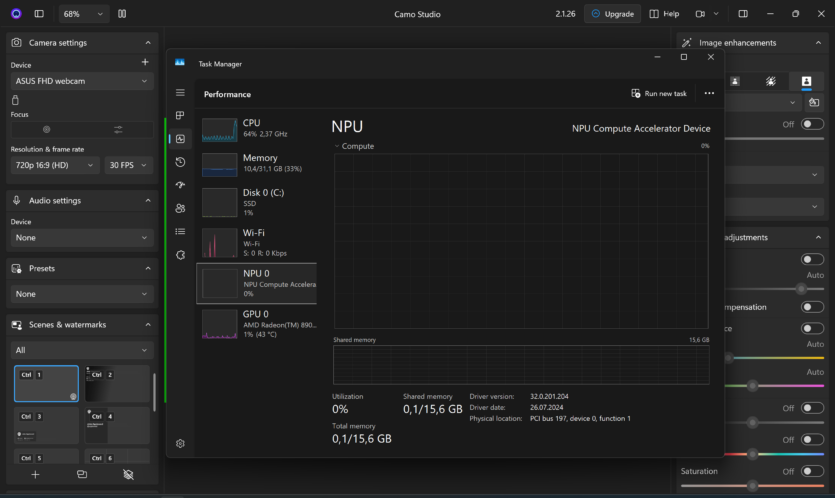
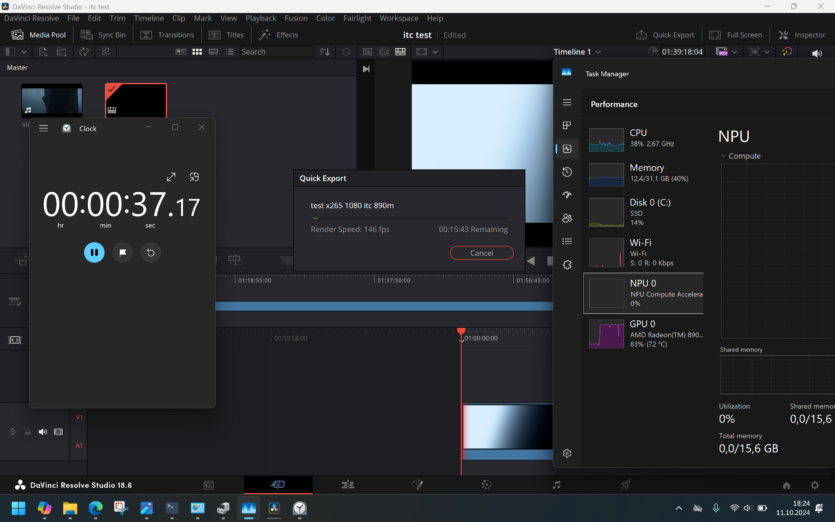
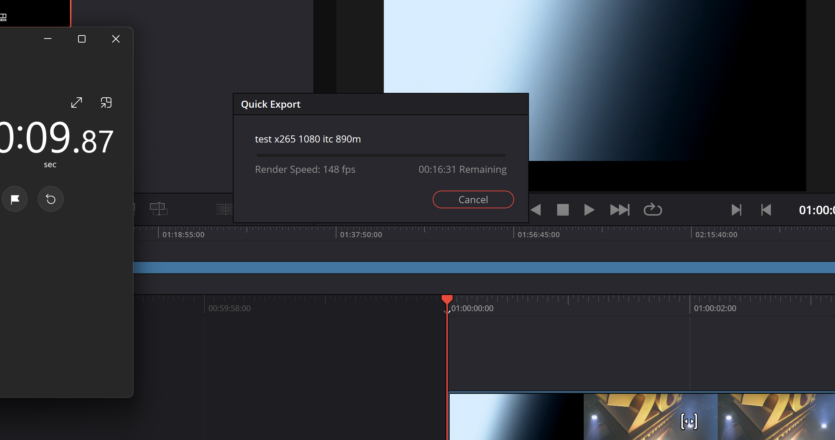
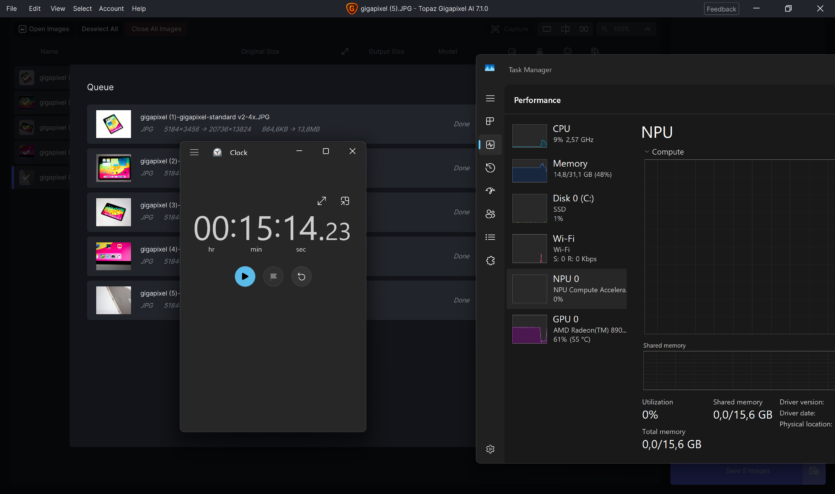
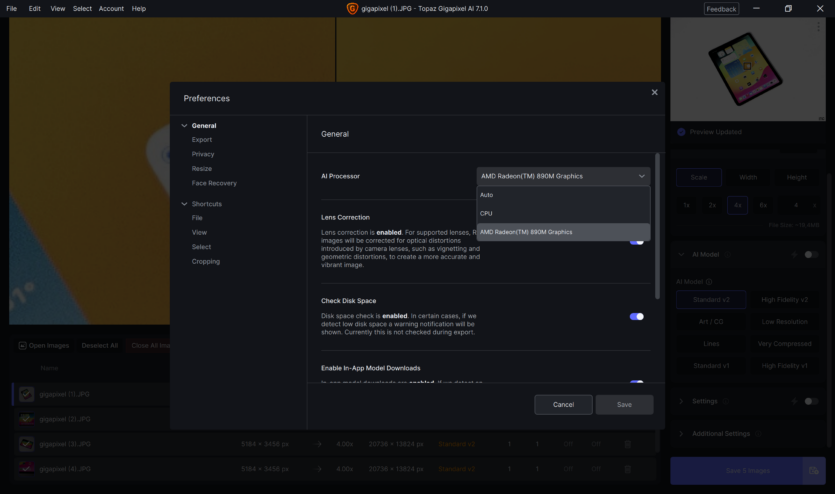
The 1 TB drive shows a speed of just under 5000 MB/s. The linear read graphs are unstable only for the first 20% of the test, and then leveled off. At the end, the speed dropped slightly, but not critically. Random reads are more difficult, although the lowest point was 331 MB/s.
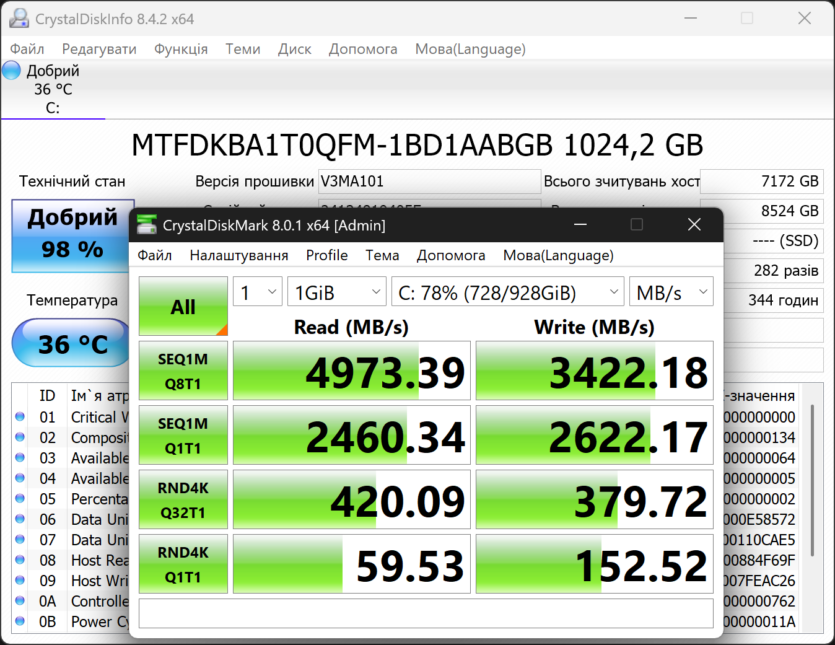
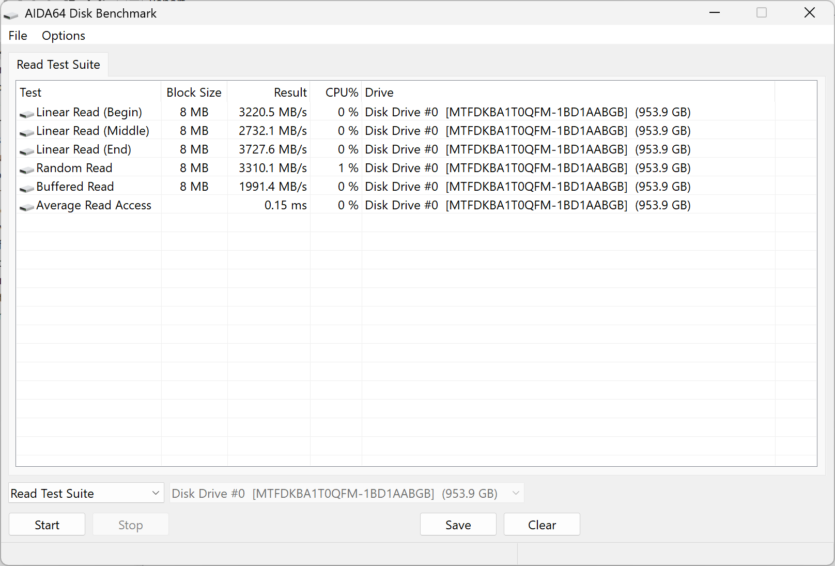
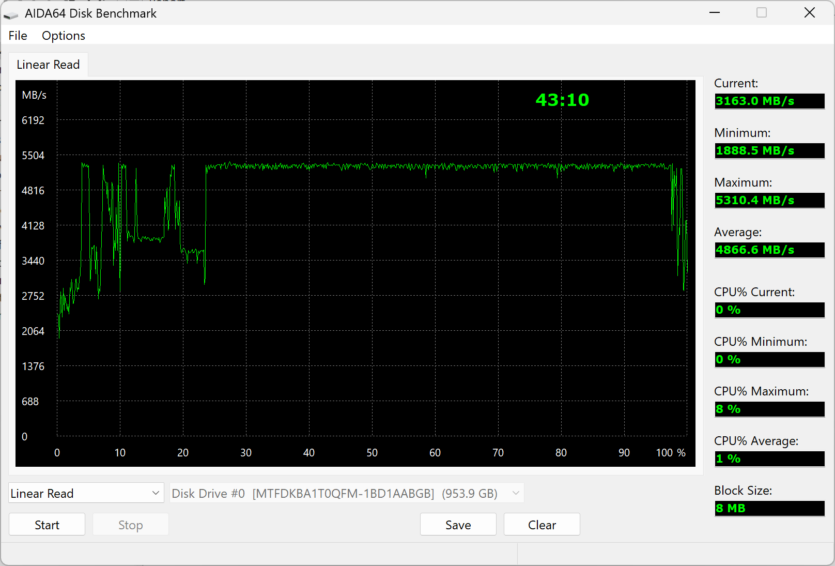
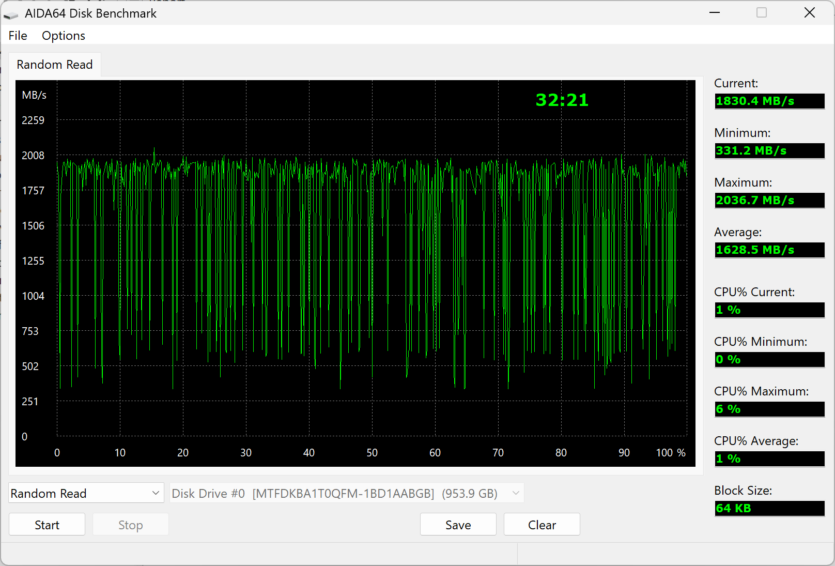

If the drive is not bad, decent, typical average, then the RAM is one of the best among x86 laptops. Of course, 100 GB/s is not much compared to Apple Silicon chips (up to 800 GB/s), but among Windows machines, this is an excellent result. Not every high-end desktop computer offers such performance.
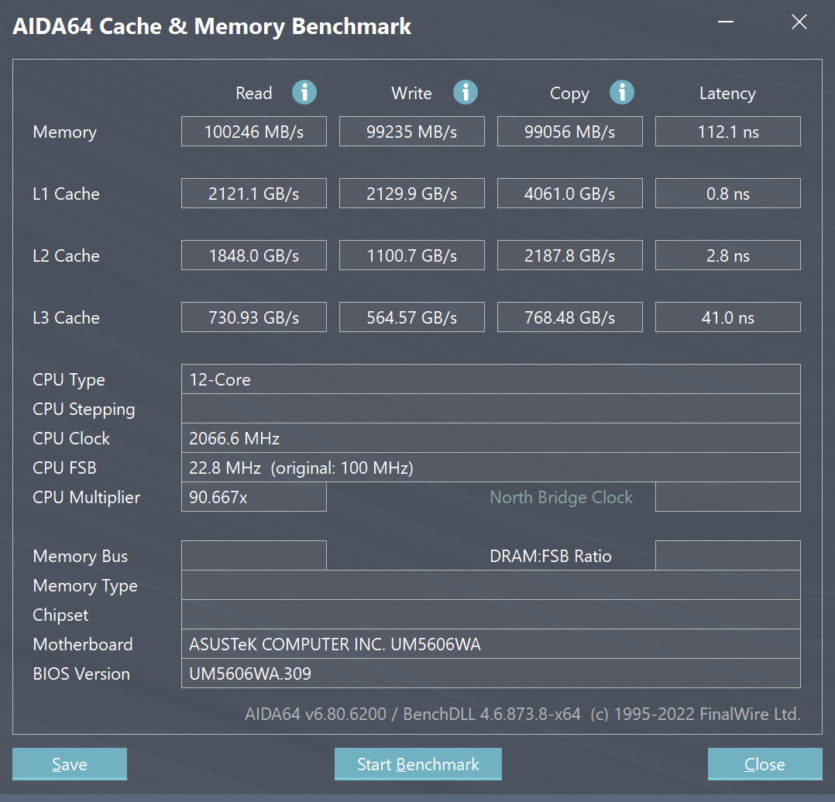
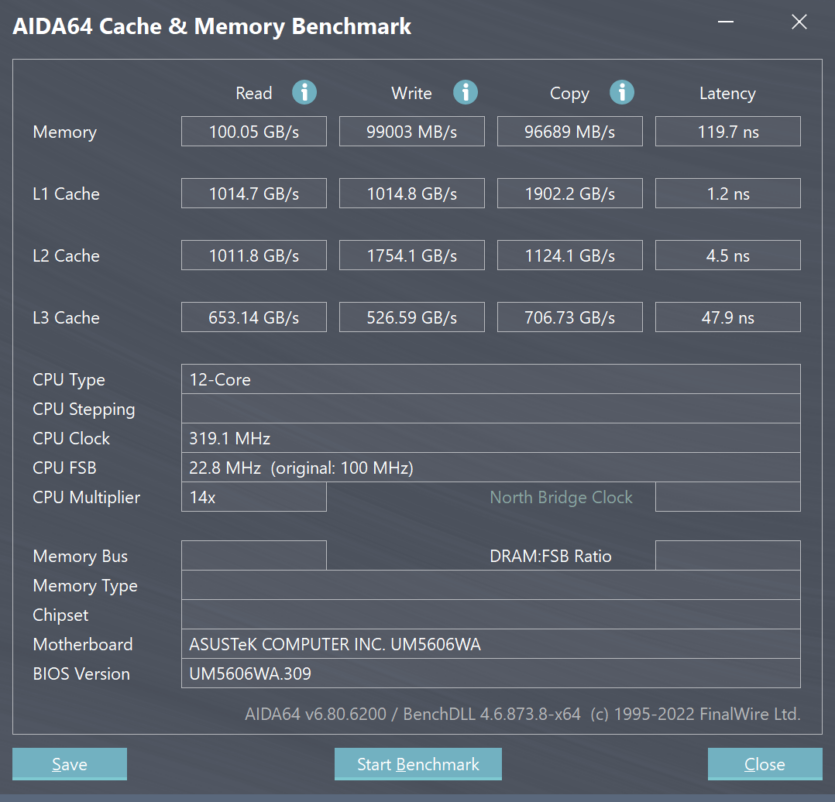
This speed was achieved thanks to the unsoldered memory on the board and high frequency, rather than old-fashioned SO-DIMMs, which all manufacturers should abandon. It is thanks to high-speed RAM that the integrated video card is so productive. The only drawback is the 112 nanosecond latency.
Game performance
Before moving on to the tests, we should note one important nuance. The Asus Zenbook S 16 has a high resolution of 2880×1800 pixels, which is clearly too much for a 16-inch screen of a non-gaming laptop, so it would be logical to set at least 1920x1080p, but in fact it is not.
Most games with this resolution work only in windowed mode. Changing the default value in Windows settings does nothing, so it’s best to set the native resolution and scaling in the game, if available.
Ideally, you should use Intel XeSS or AMD FSR, but not every game supports these technologies. So, we tested with the native resolution, but in some games we reduced this parameter directly in the game settings. Whenever possible, we used the smart FSR upscaling, which in Balanced mode does not spoil the picture on this small screen at all.
It is not surprising that we got more FPS in almost every game from the battery, because the processor limits the GPU from the network, forcing «to starve». That is, the Asus Zenbook S 16 from the battery gives better gaming performance — the opposite of gaming models with Nvidia RTX, which turn into «vegetable» without a power supply AMD Radeon 890M in standalone mode puts most gaming graphics cards to shame.
Conventional notation:
- MED — medium graphics settings;
- HIGH — high graphics settings;
- ULTRA — maximum graphics settings;
- FSR is an upscale of AMD FSR in Balanced/Performance mode;
- DR — dynamic resolution;
- 60% is the resolution scaling level;
- AI — CIV VI test with a high CPU load;


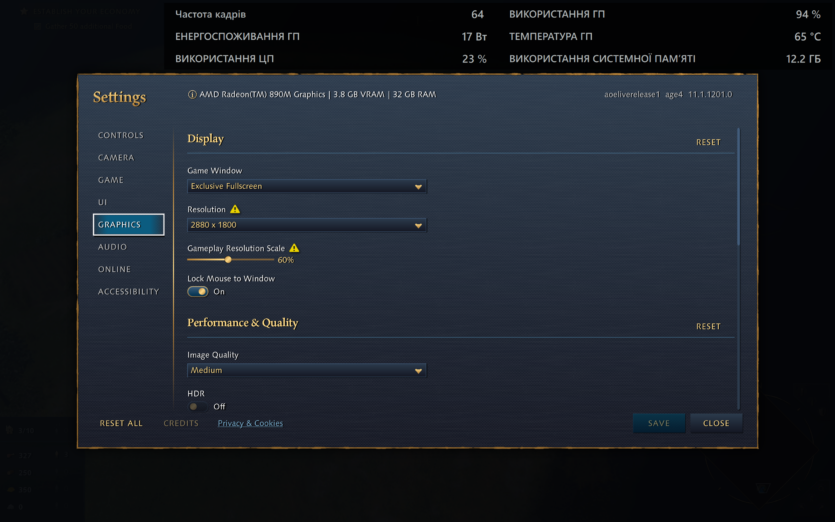
In the early stages of the Age of Empires IV we have more than 60 FPS, but as the city develops, we should expect a natural decline. For a real-time strategy, the performance margin is sufficient.
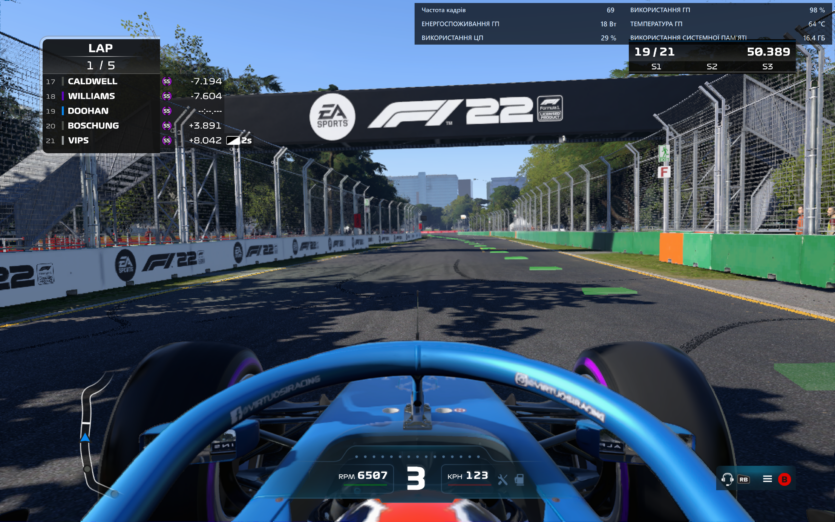
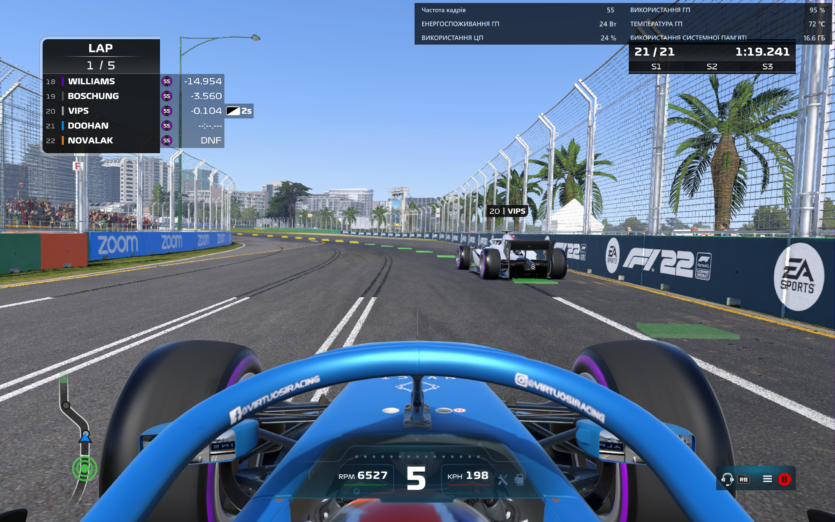
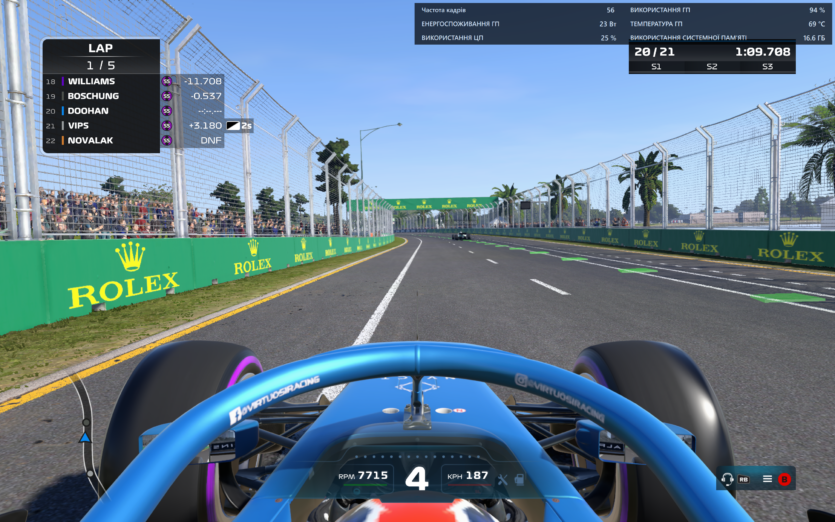
F1 2022 works smoothly, we always get more than 60 FPS from the battery. Despite the use of FSR, the picture is clear and pleasant. In total, only 55% of the RAM is used.
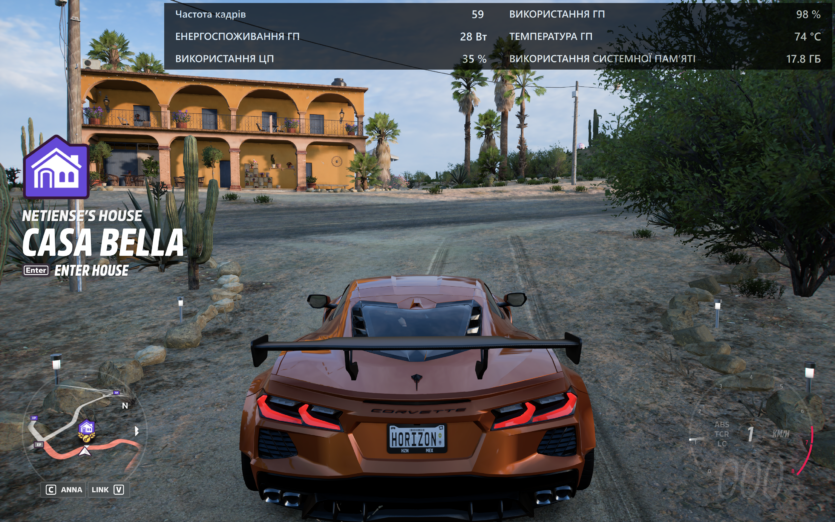
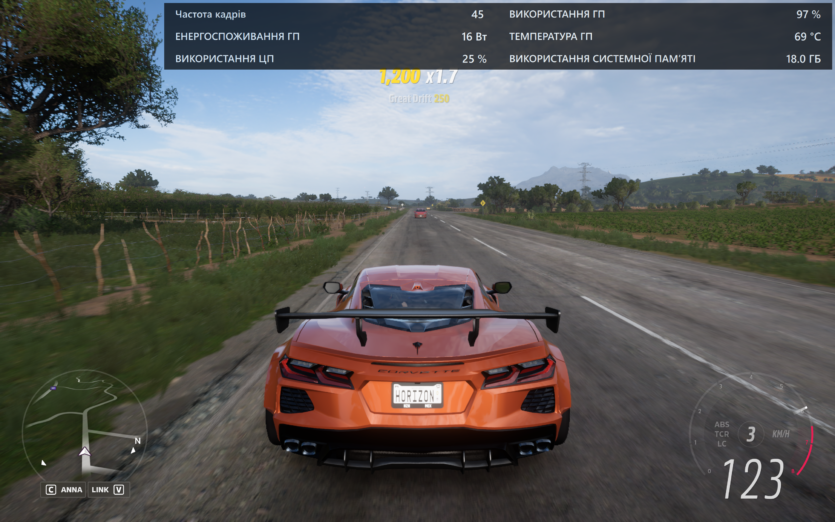

Casual Forza Horizon 5 demonstrates similar performance with high graphics settings. Not every battery-powered gaming laptop will show 50-60 FPS in this game.

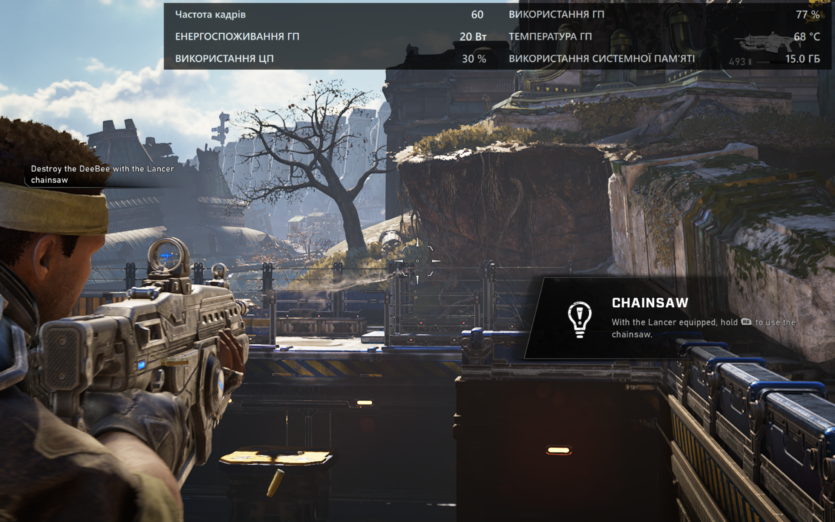

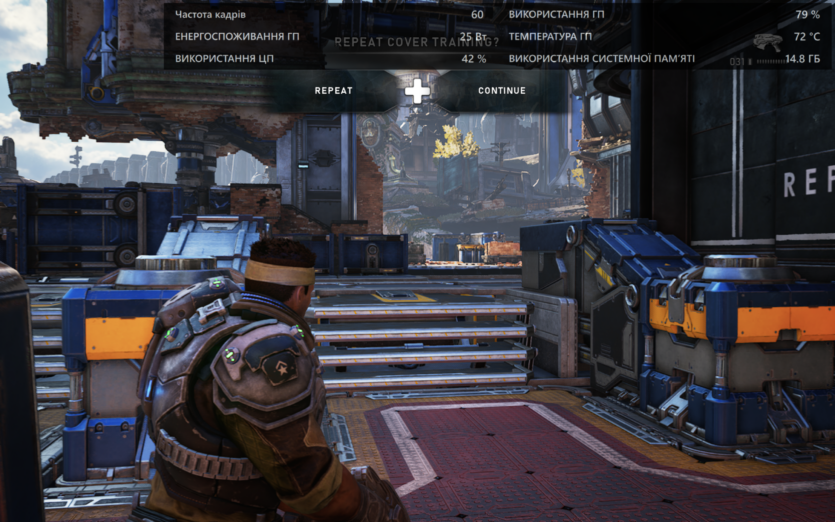
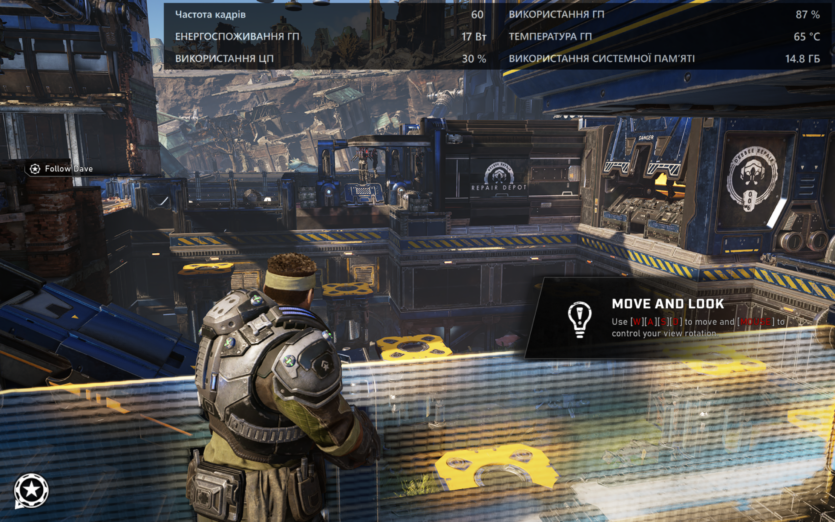

Gears 5 with 60% scaling works perfectly. The video is smooth, the game is enjoyable, and the graphics are pleasing to the eye. Steam Deck portable gaming consoles can only dream of this level of detail.
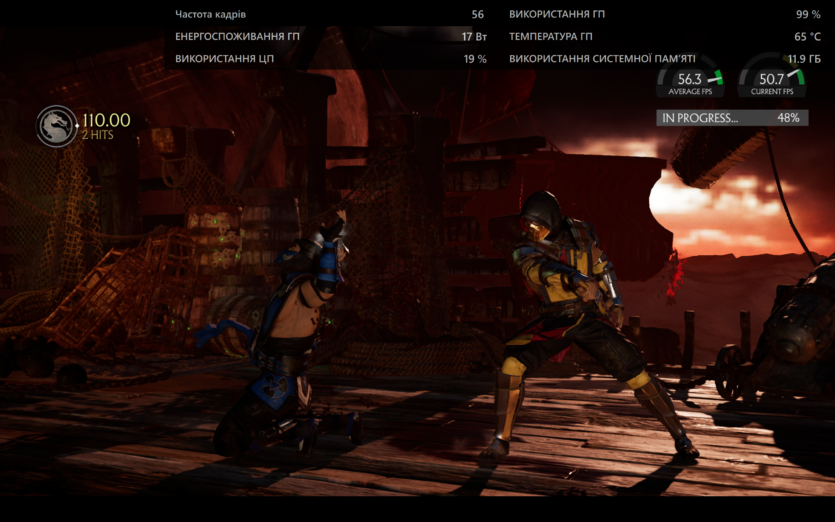

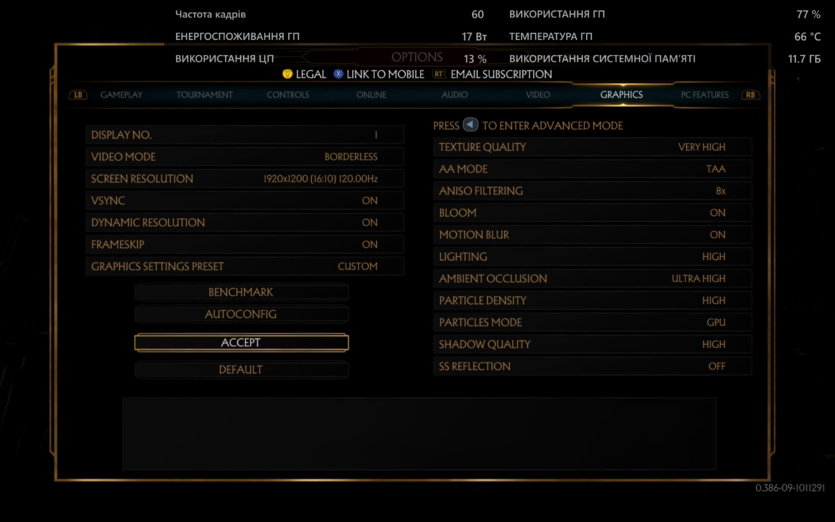
Mortal Kombat 11 slightly falls short of the recommended 60 FPS with dynamic resolution, but there is room to lower the graphics settings to medium or low.
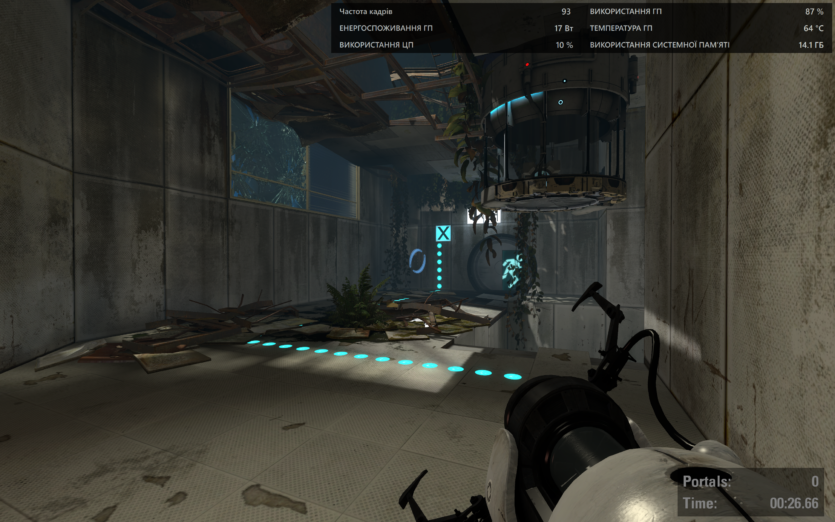
Portal 2 works flawlessly. If we lower the graphics settings and turn off antialiasing, we get 120 FPS on a 120 Hz screen.





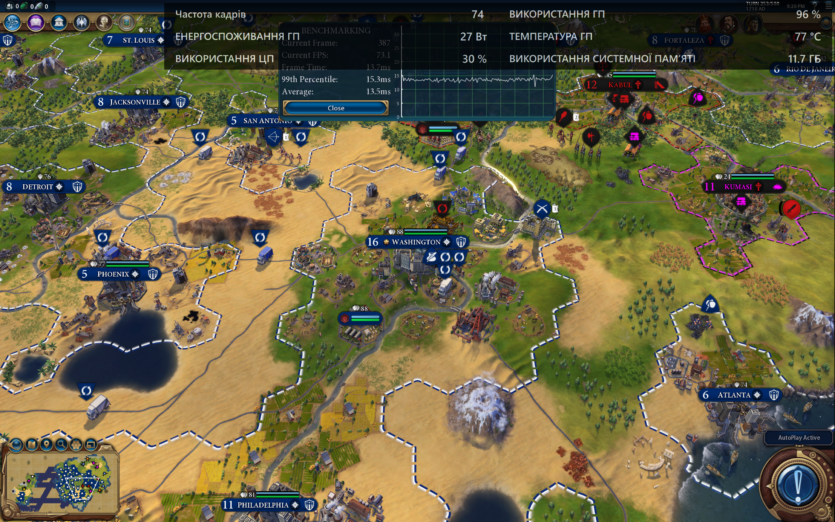


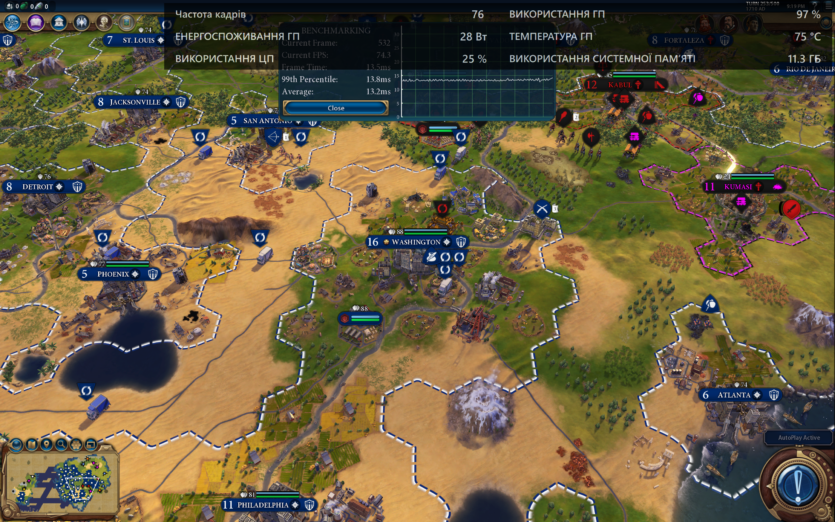



Civilization VI tested twice to check the performance in the later stages of development, where we still got 60 FPS with an almost completely built-up map.
Artificial intelligence and software
The laptop runs on Windows 11 Pro, with only the Asus ScreenXpert widget preinstalled. Officially purchased copies for Ukraine will definitely have the company’s proprietary utility, and possibly something else.
The laptop is not as problematic as the first-generation Intel Core Ultra models, but there are still some issues with software stability. During the tests, there were sometimes freezes, artifacts, or just a black screen. This is due to the integrated graphics card.
By default, only 512 MB of video memory is allocated, which became a problem for some video games. We changed the standard amount to 4 GB, although there were still occasional error messages. Another annoyance is the regular black screen for a second or two when the laptop is connected to the network and vice versa, which is strange.
Since the laptop is equipped with an NPU neural accelerator, it was a sin not to test its operation in professional software. As it turned out, everything is very complicated and not yet available for a typical user. Most programs do not know how to load the NPU by default. AMD offers detailed instructions for developers to make this module work at last.
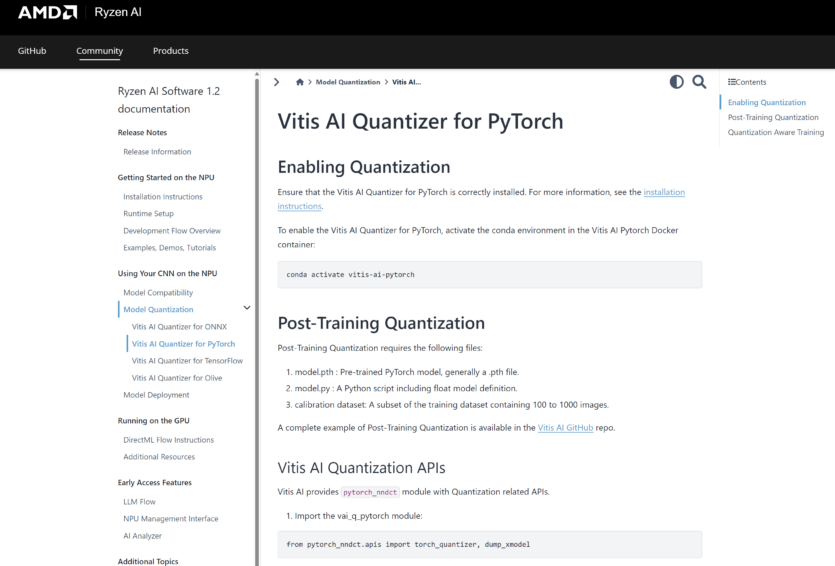
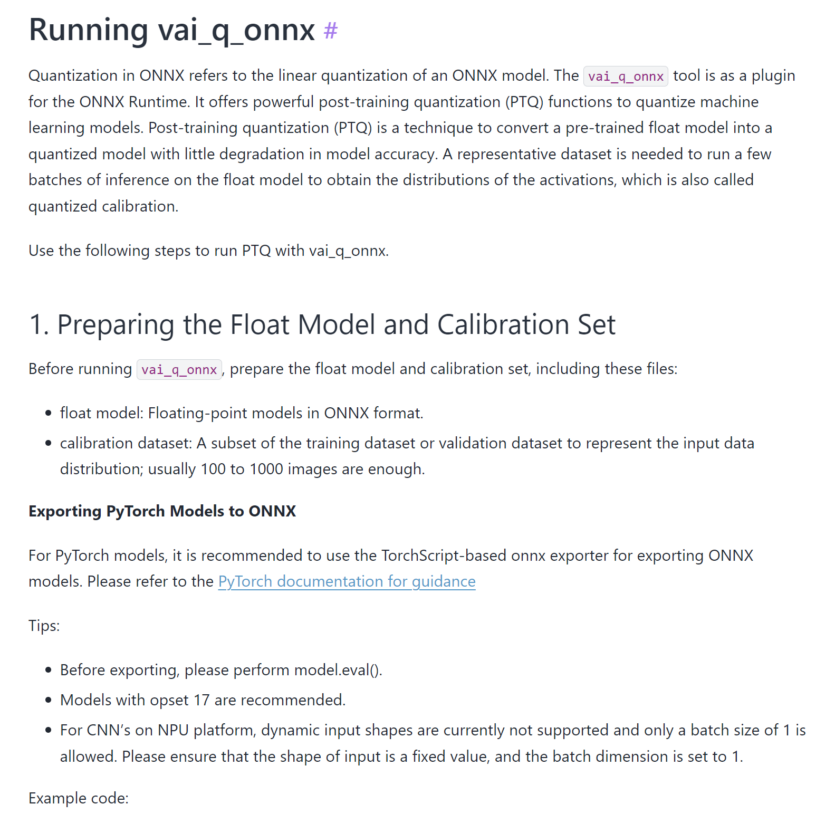

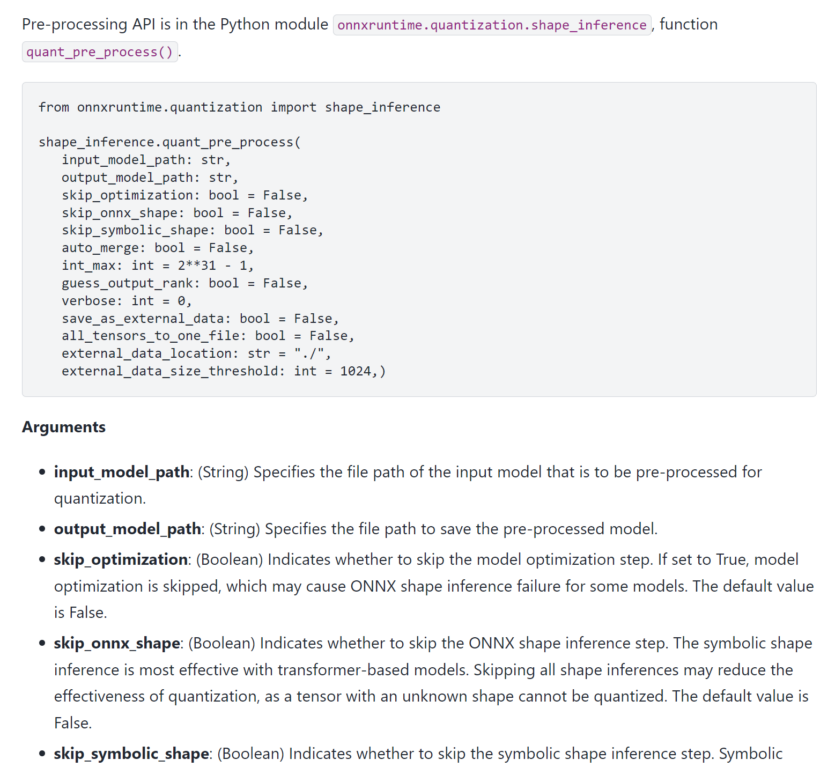

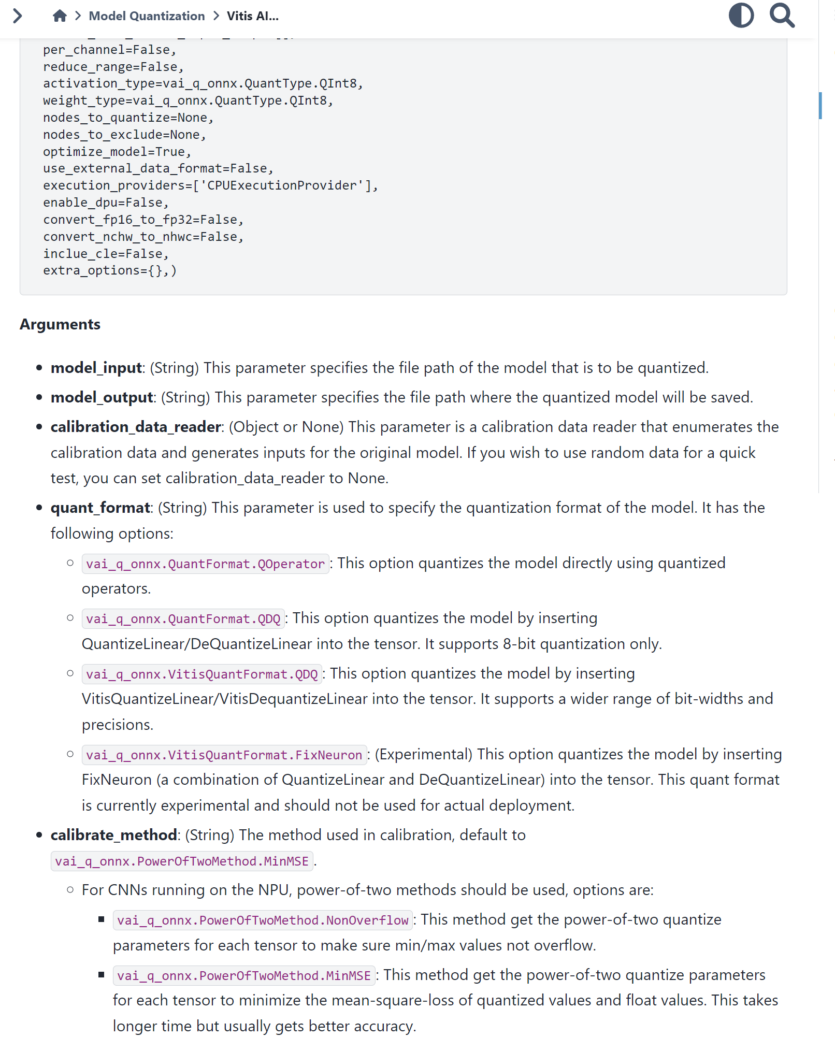

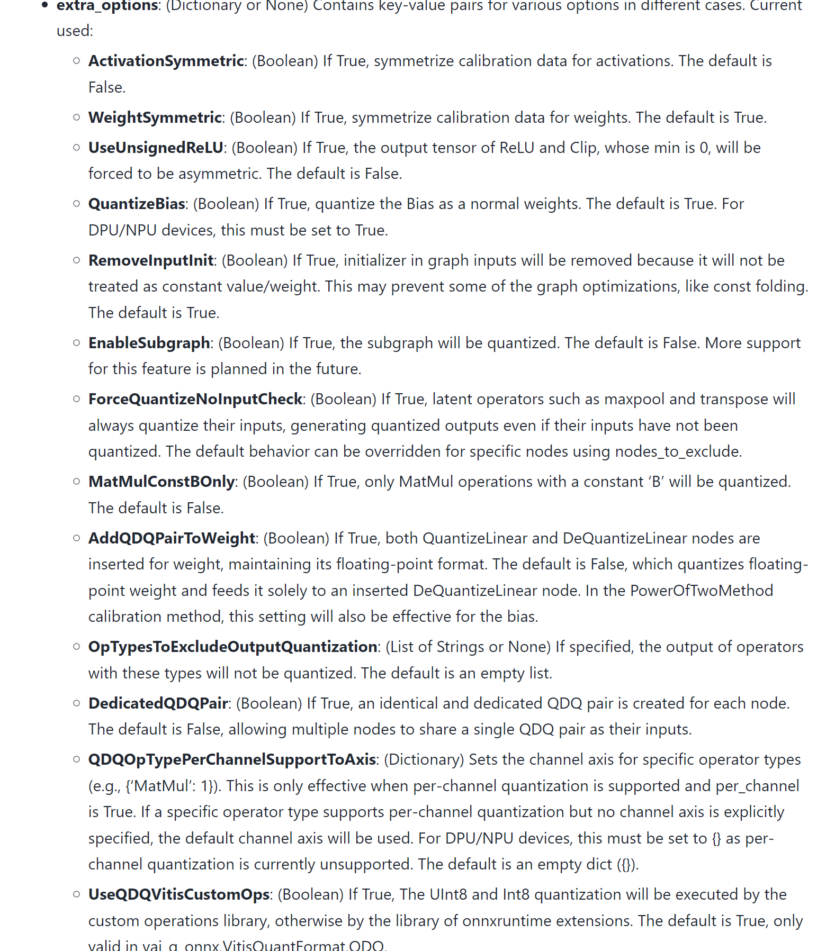
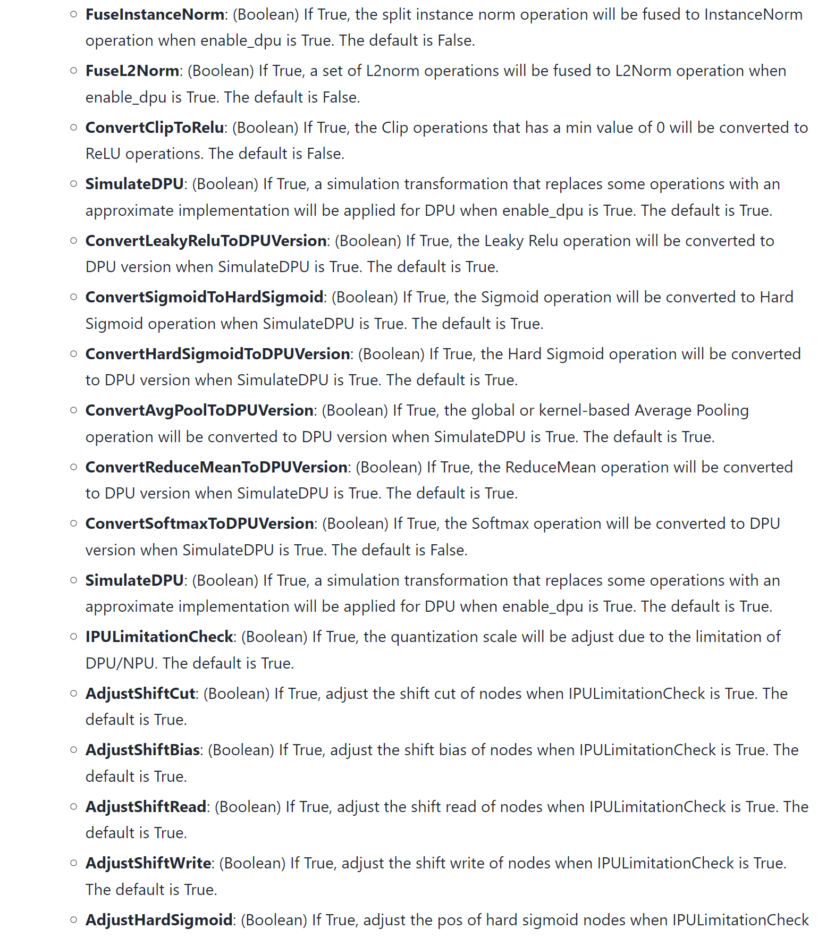
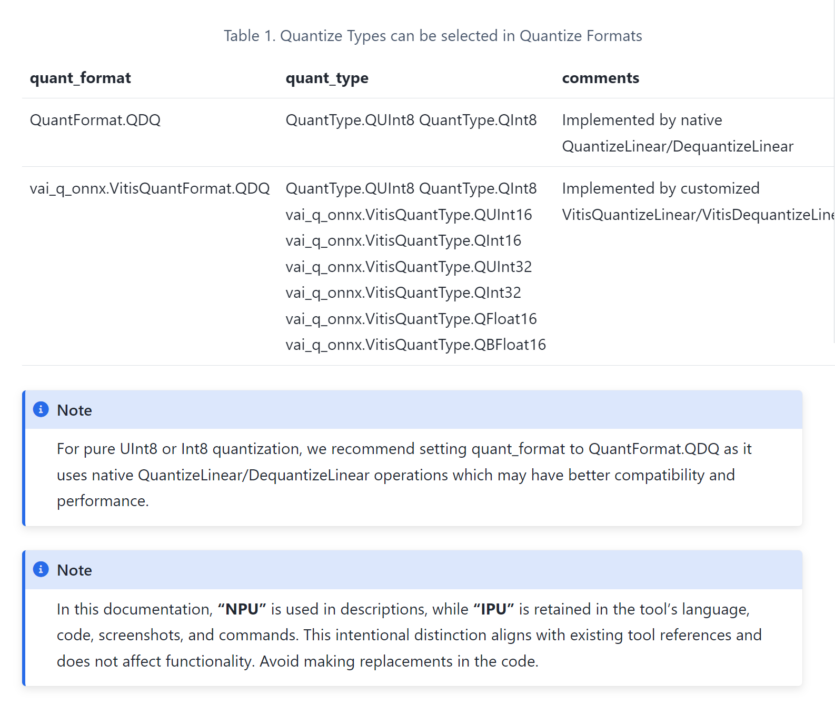
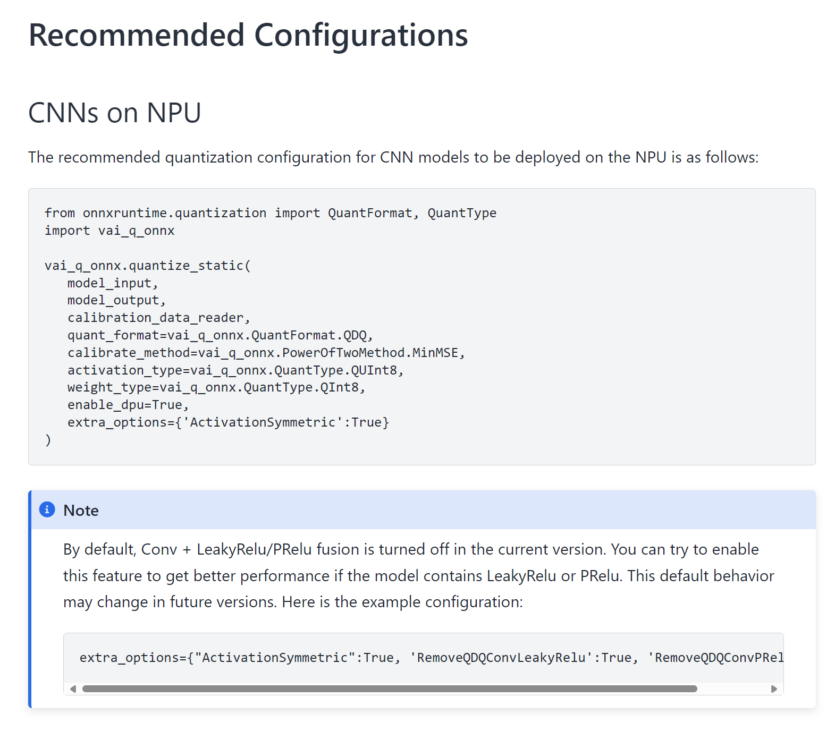
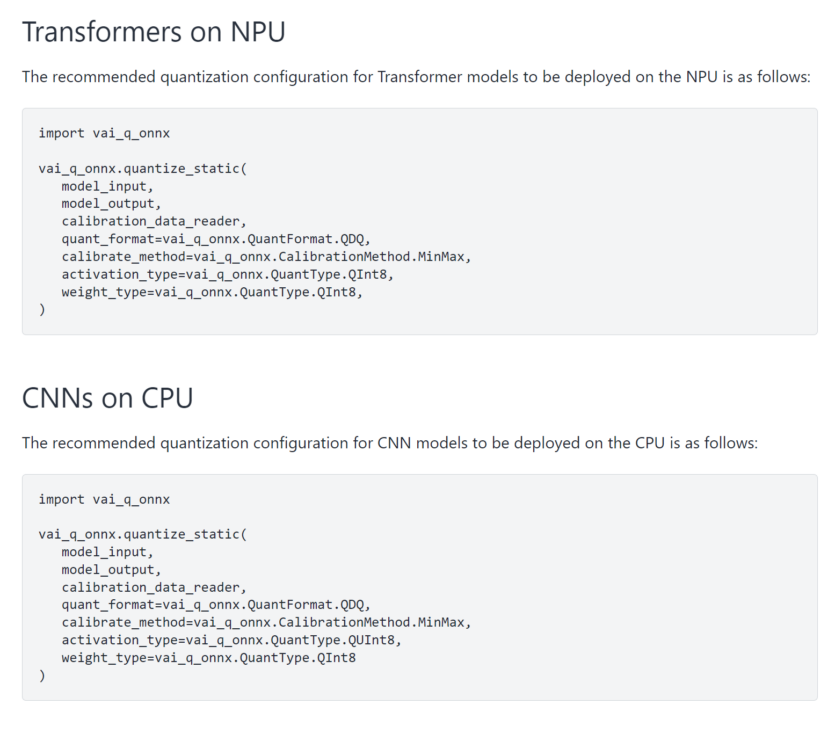
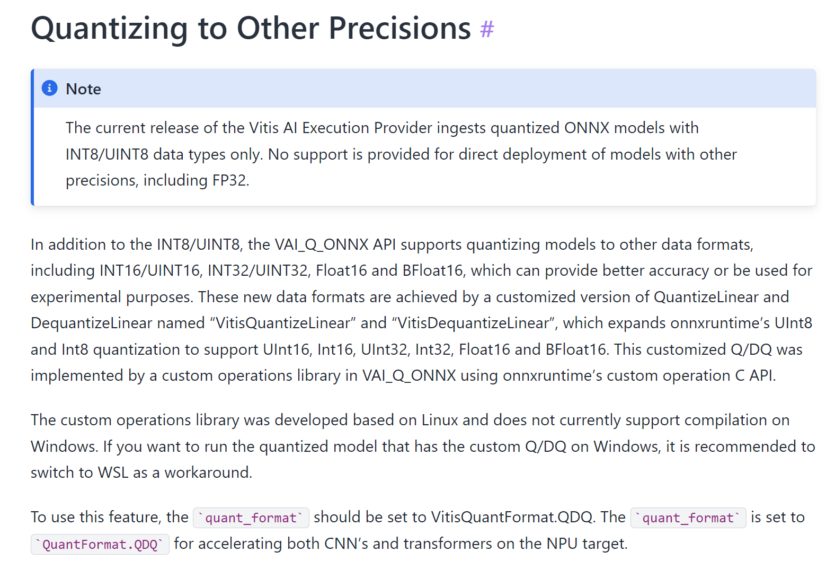
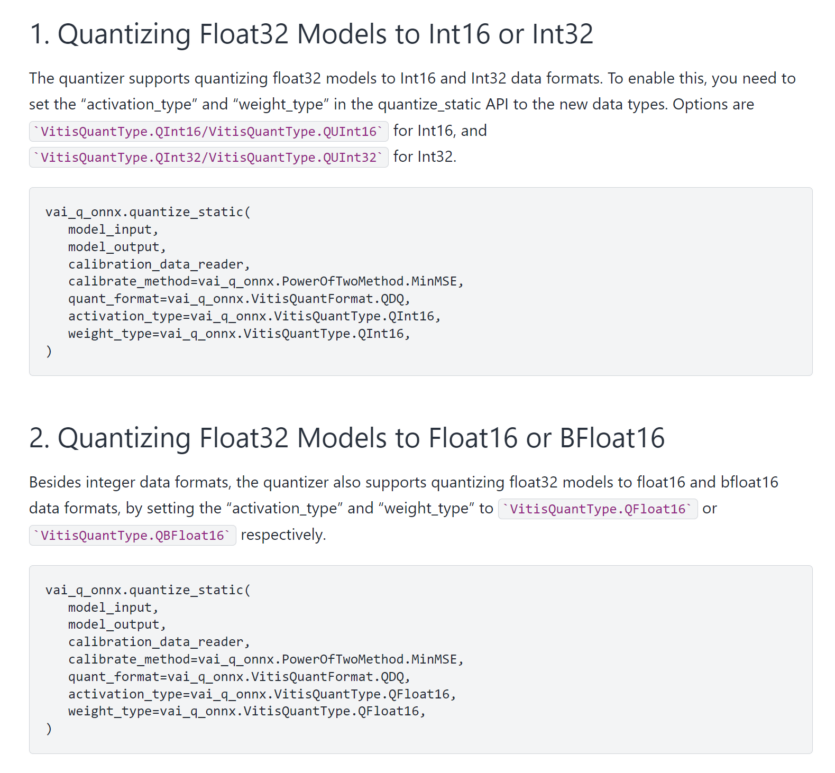

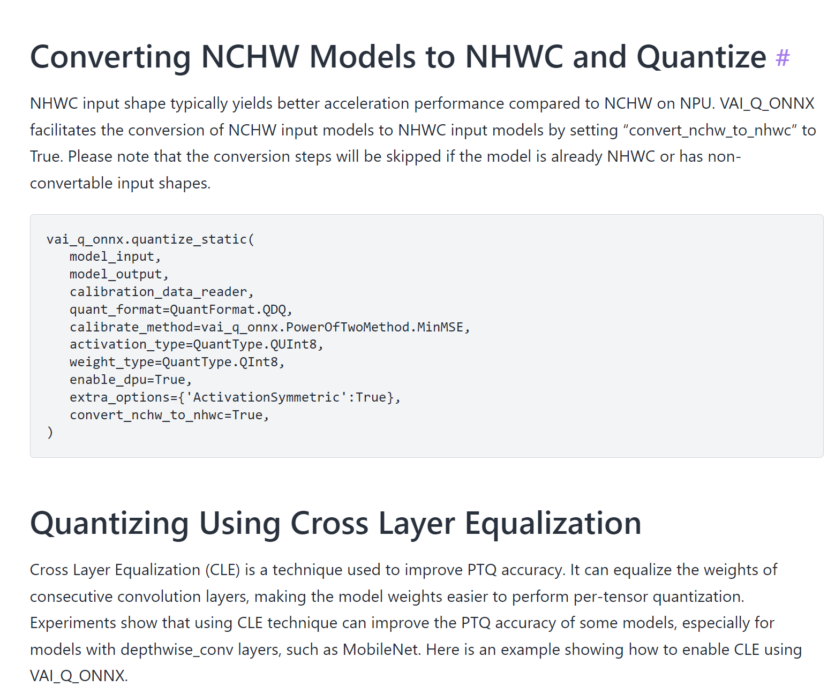

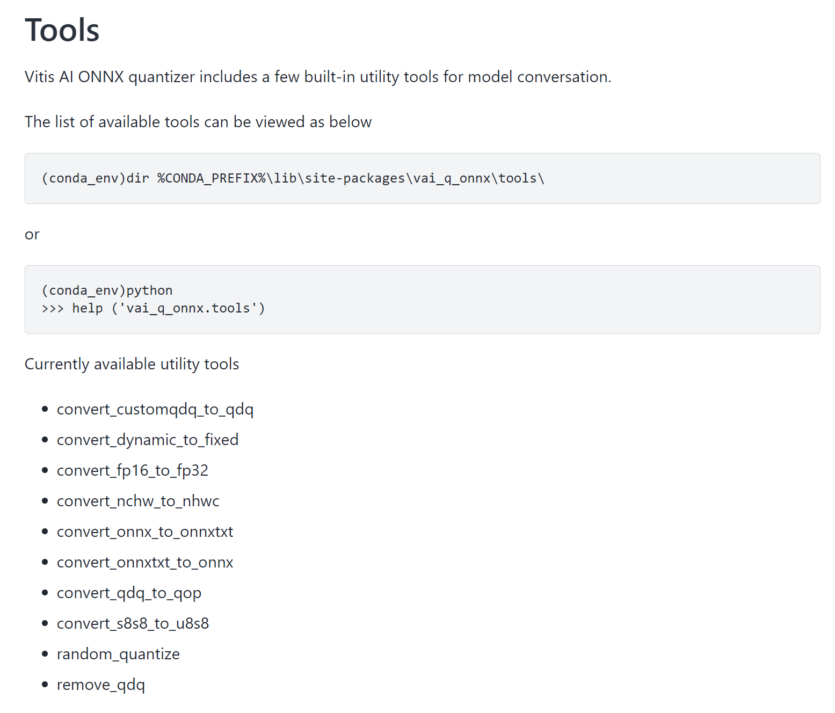
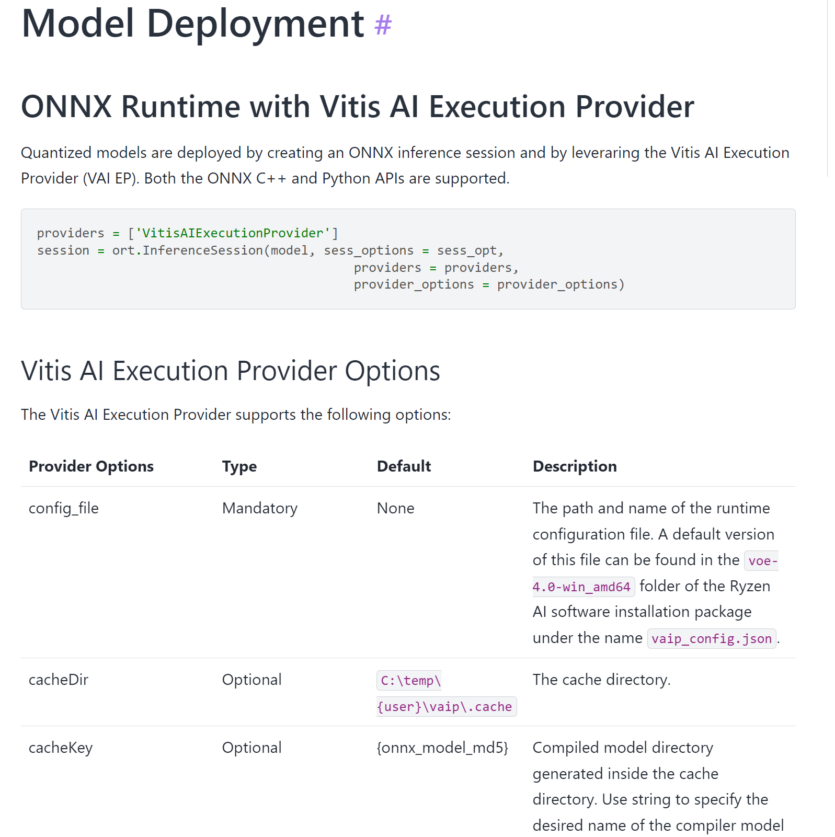
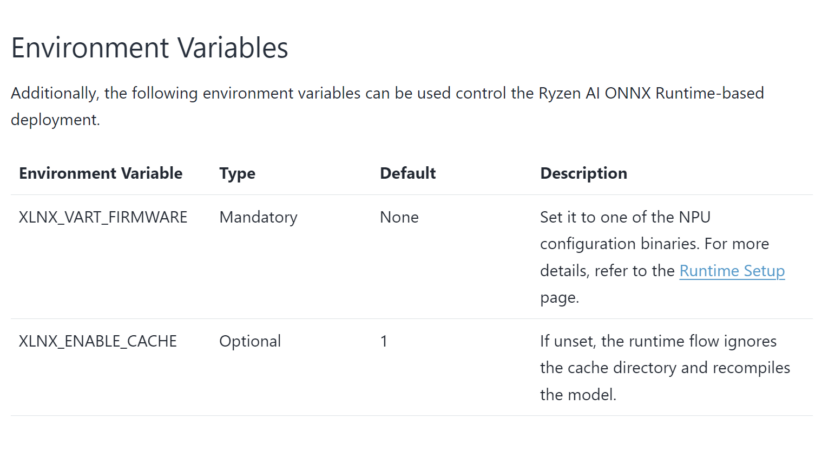
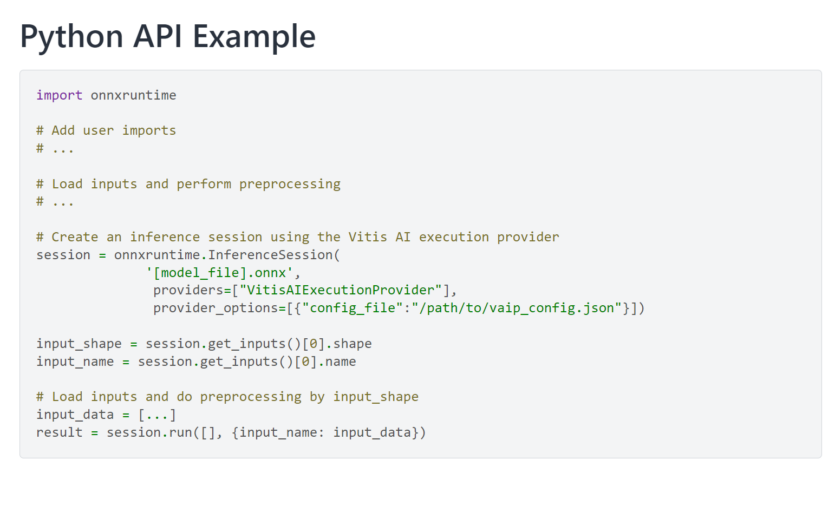
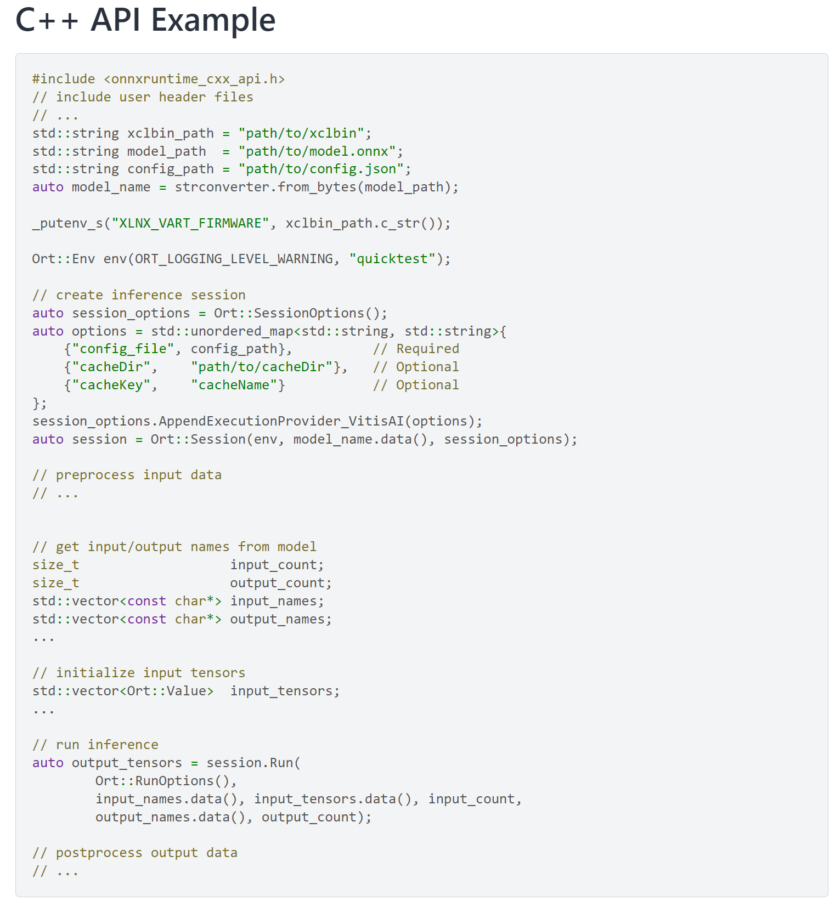
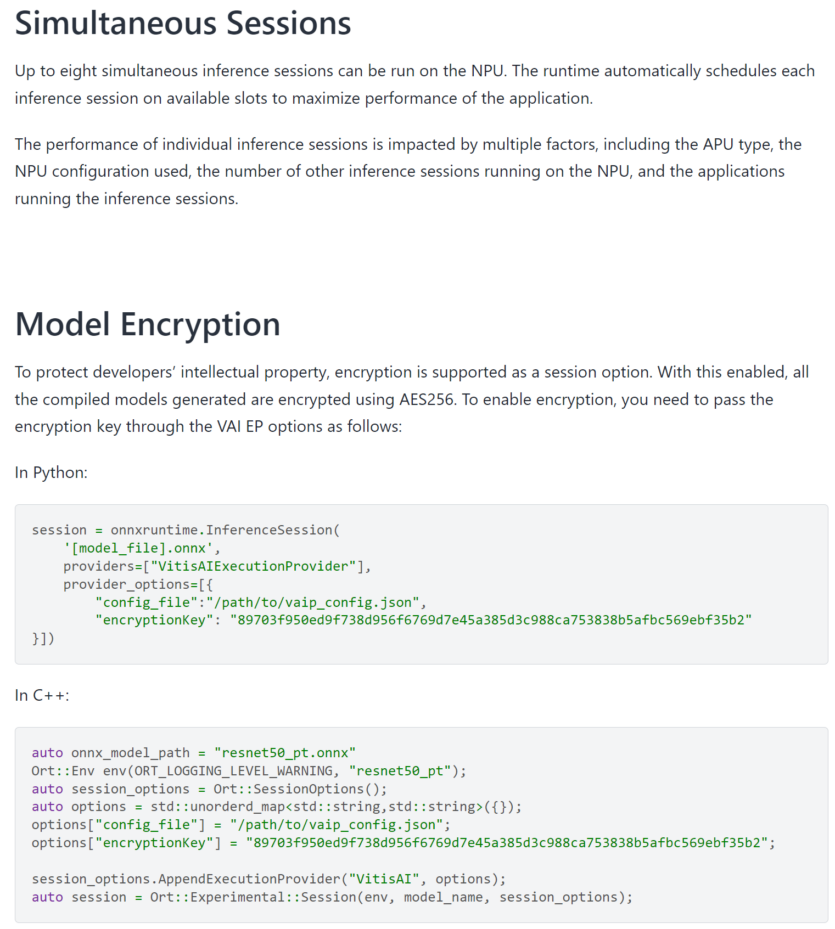
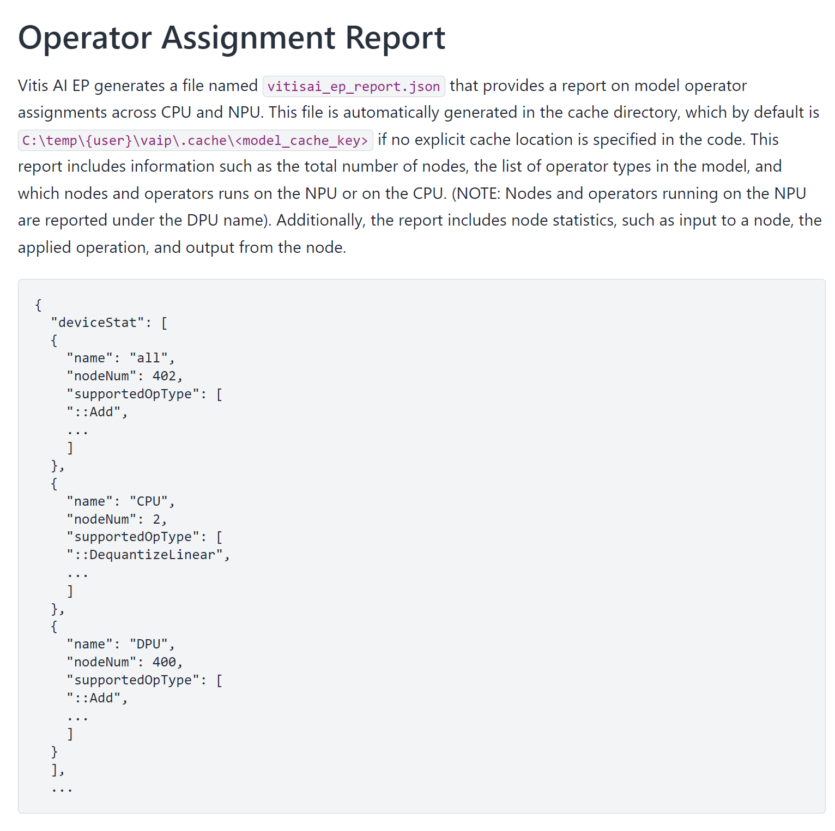
Dozens of pages of detailed manuals will help you understand it all. First, we installed the Anaconda environment and downloaded the driver, manually (necessarily) write a path for Anaconda.
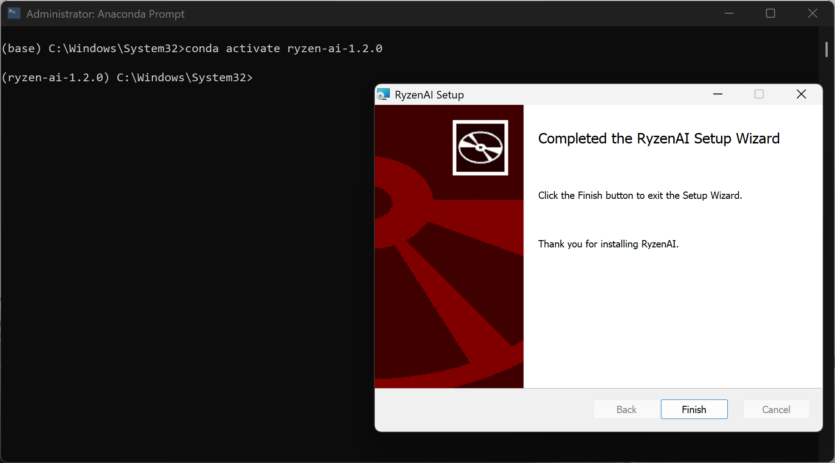
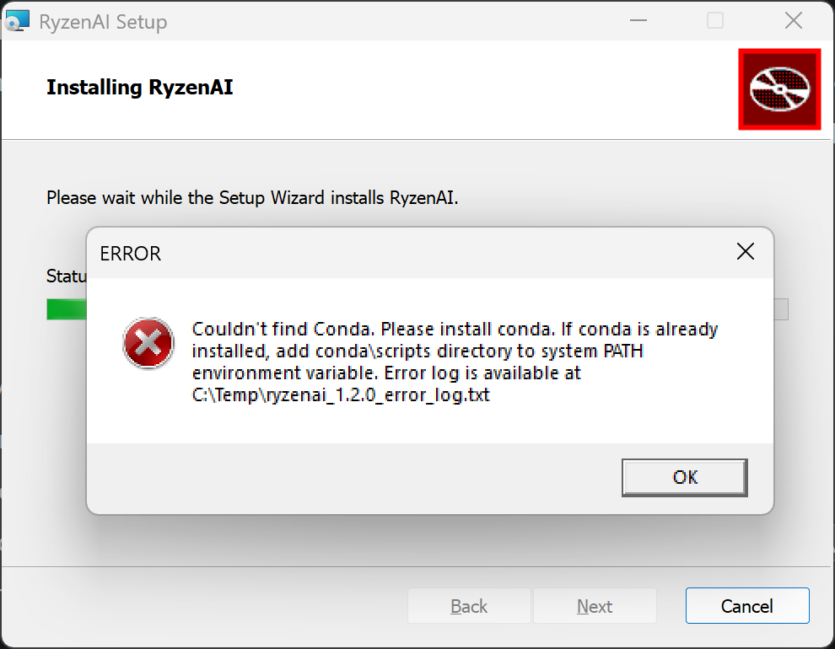

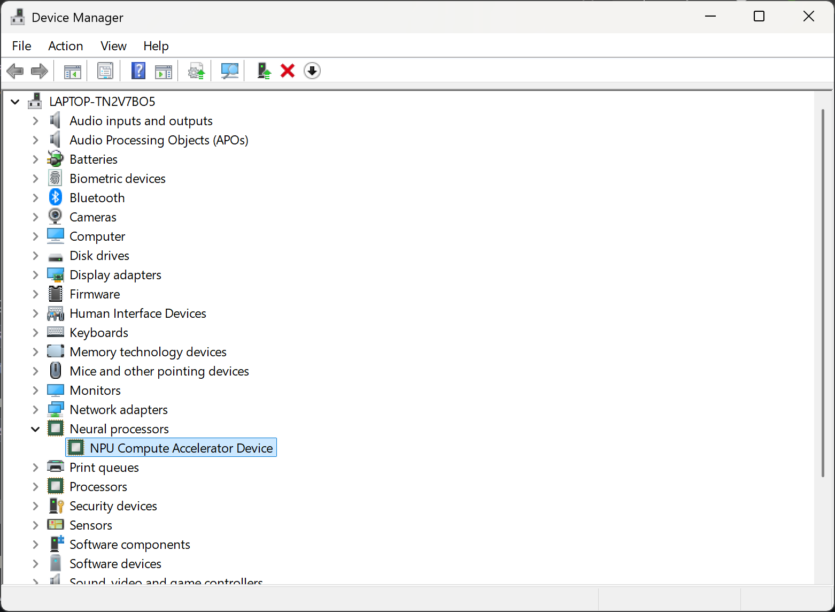
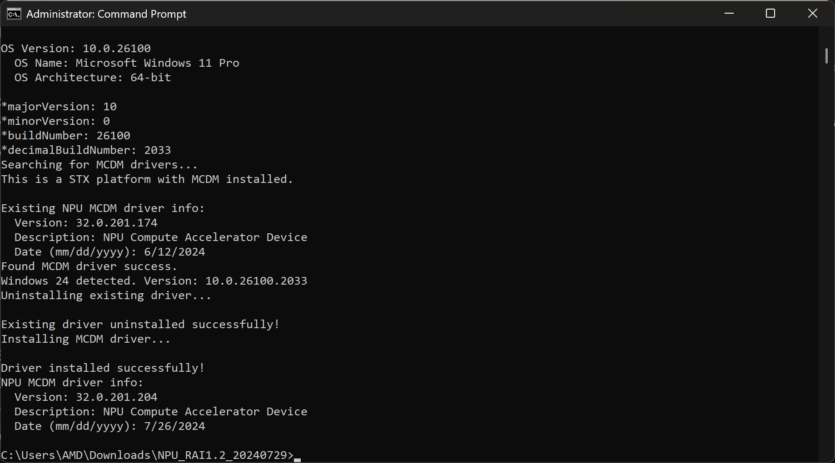
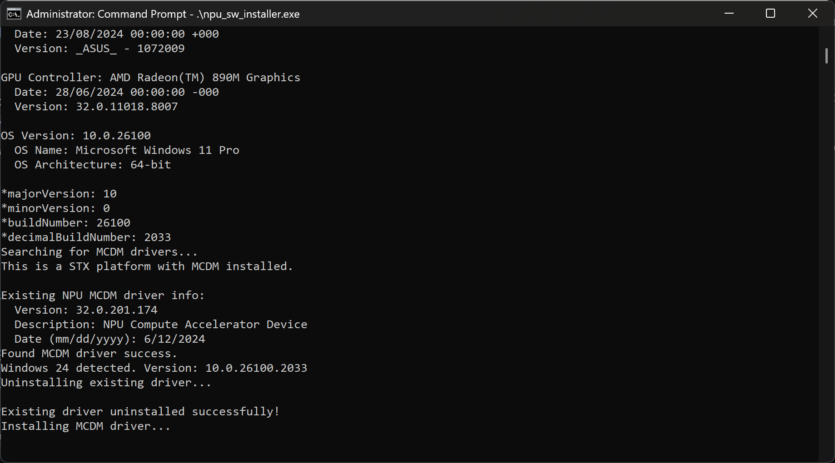
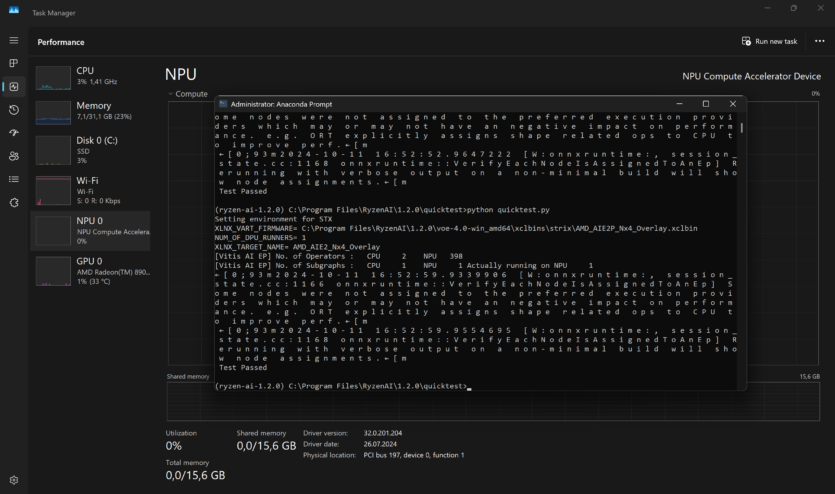
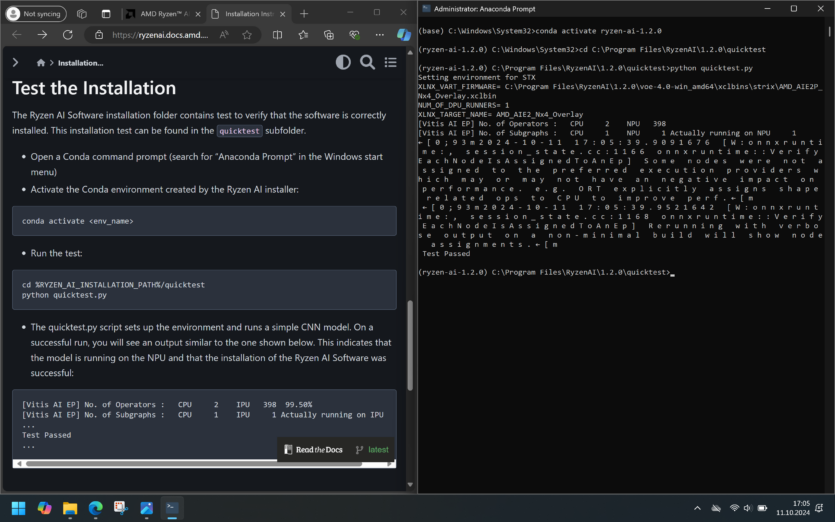
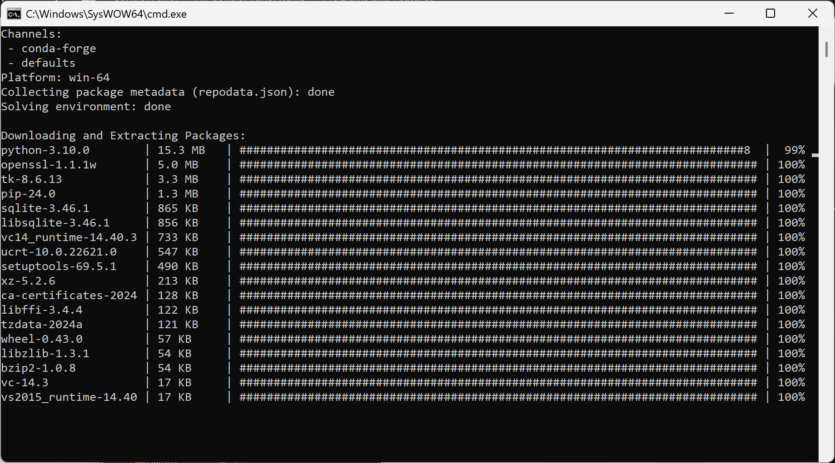
After several unsuccessful attempts and 30 minutes of work, the AMD Ryzen AI program finally worked, and we can run a test command on the command line to check the NPU. Everything seems to be working, but what’s the use in real-world use?
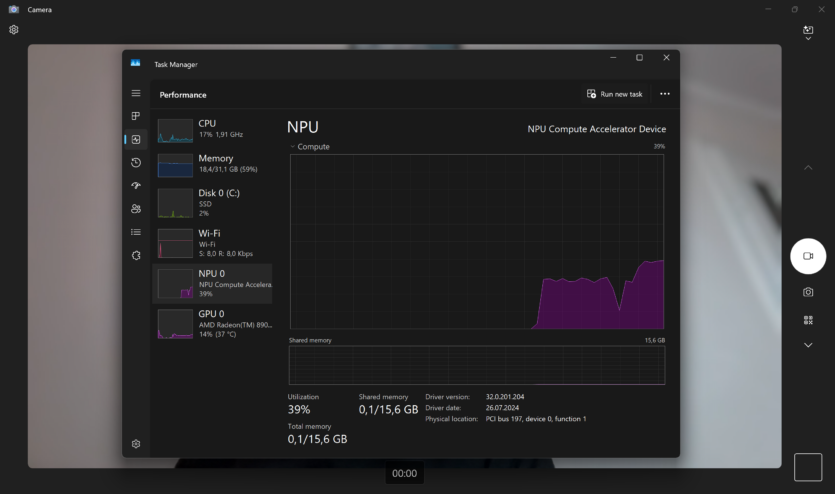
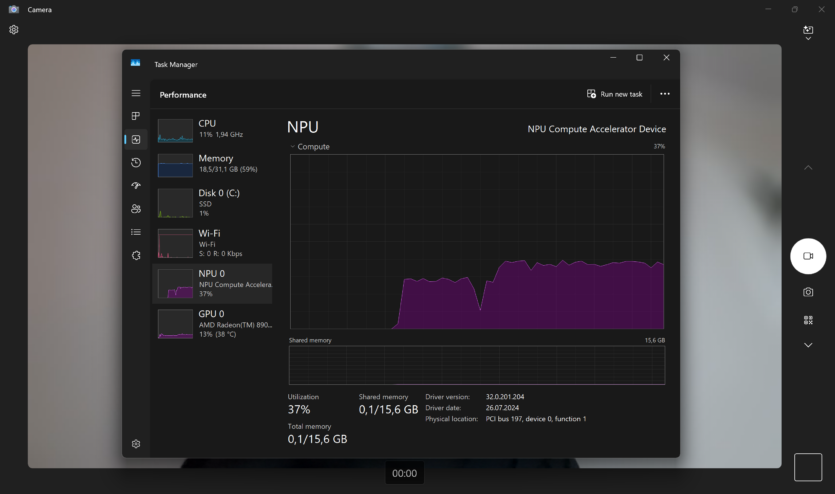
So far, only the built-in camera is able to load the neuromodule in any way, and the rest of the programs literally do not understand what it is. Amuse, LM Studio, Gigapixel AI — all of these neural networks are recommended by AMD for testing, but none of them have ever made friends with the NPU.
Either the processor or the video card does all the work. With the Radeon 890M, images in Amuse are rendered relatively quickly, and the test chat in LM Studio does not stutter. It’s also interesting that you can draw a sketch with the stylus, and the neuron will complete the drawing based on the text description, but it’s inconvenient to draw because the display does not swivel 180 degrees.
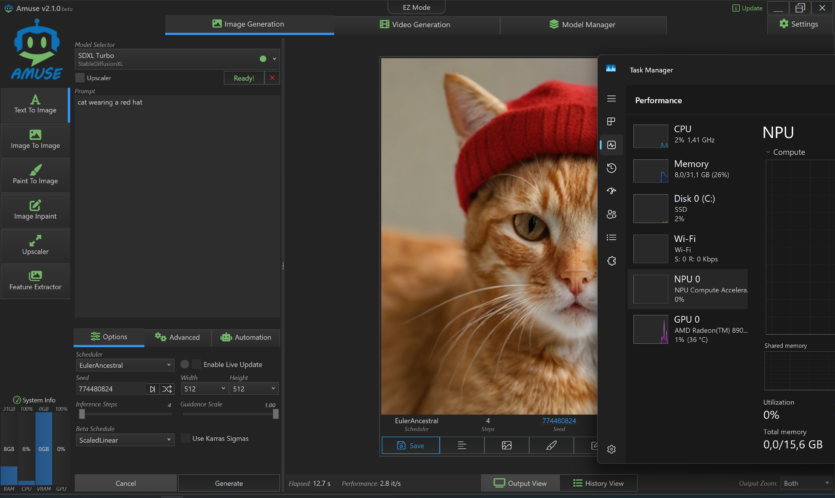

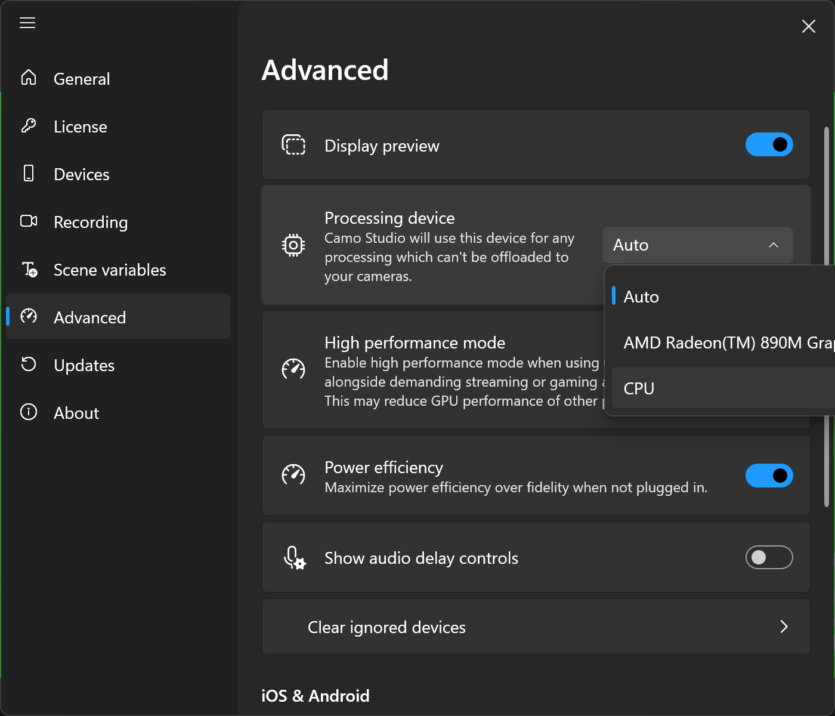




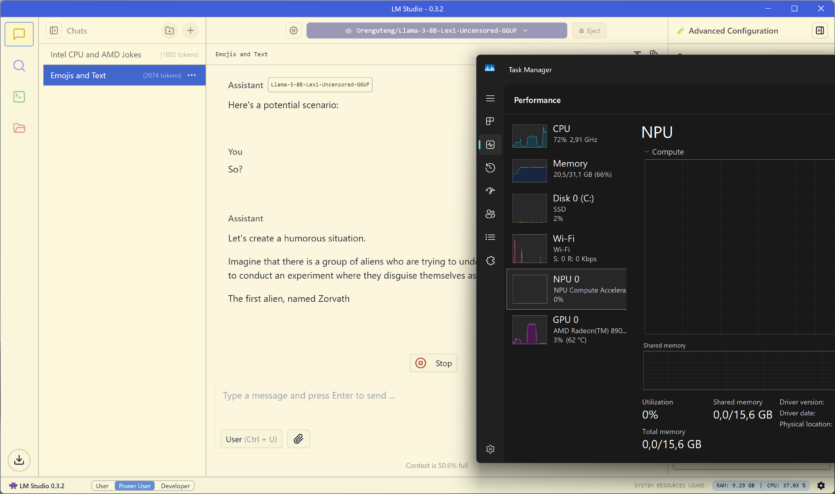

Other local neural networks also fail to utilize the capabilities of the much-hyped NPU. Despite the crudeness of the NPU implementation at this stage, we can already see considerable prospects for this technology in the future. Casual users can use the quick access to Copilot, which is provided by a separate button.
Neural network developers have a lot of work to do now, and such a laptop would definitely be helpful. But a typical user who does not know how to work with the command line and wants everything to work out of the box with the push of a button won’t understand why they need an NPU. It always sits idle. With 0% utilization.
Autonomy, cooling, noise, power consumption
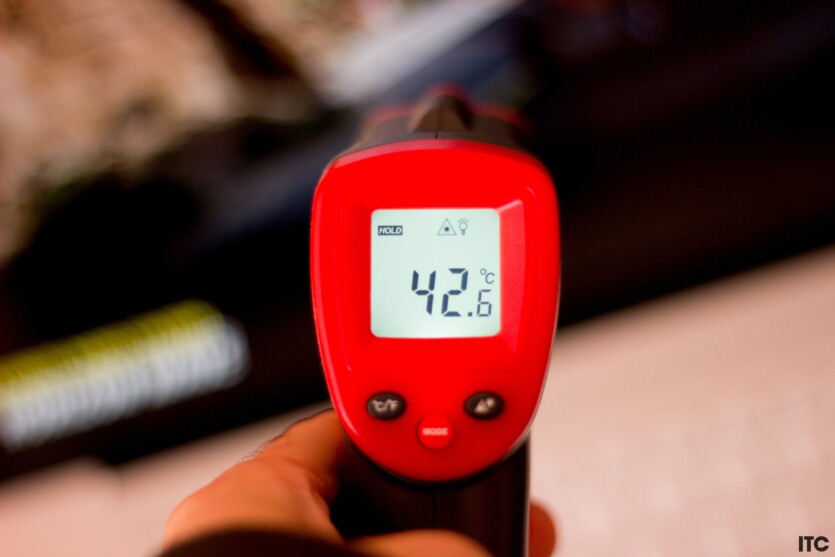
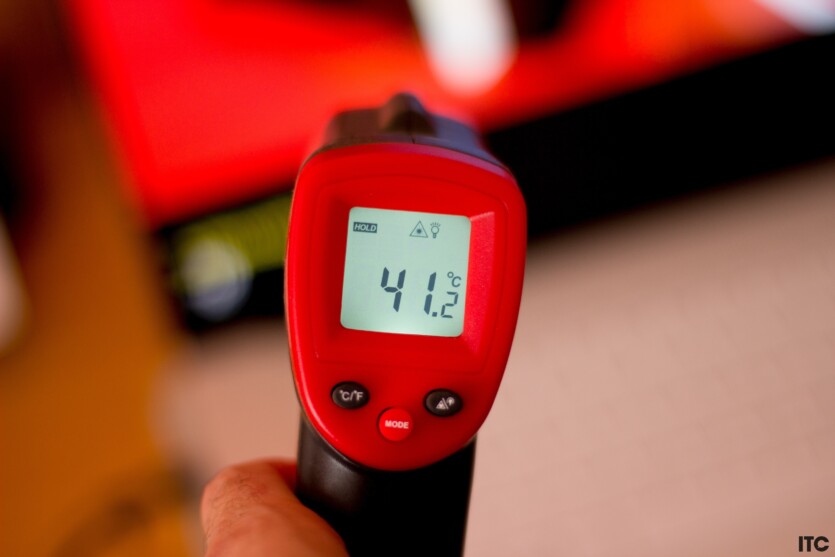

In the Aida 64 stress tests, the laptop heats up to 40-45 °C on the front panel, and 65-75 °C can be seen on the processor in the most severe scenarios. The keyboard is only warm, not hot. This temperature does not interfere with work at all. The noise level is 40-45 dB in such conditions.
It seems to be quiet, but the fans often turn on where they don’t need to. For example, you take a laptop to bed on your lap, and it starts to make 35-38 dB of noise because the cooling radiators are covered by the owner’s thick thighs or a bedspread.
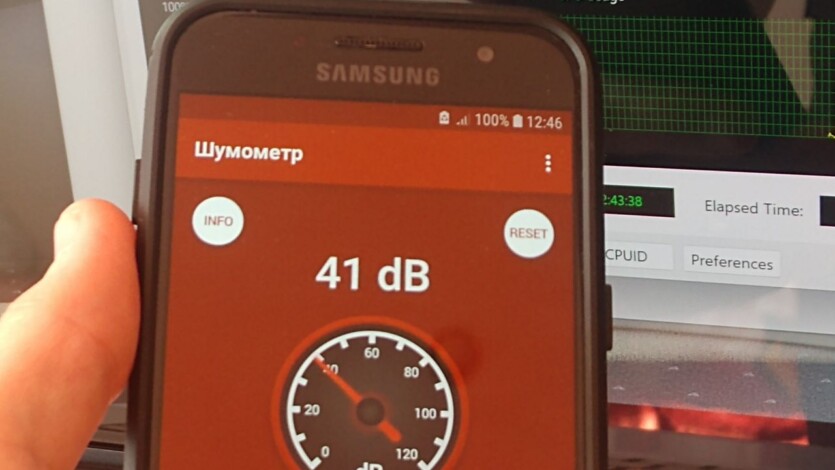

In 46 minutes, the laptop charged from zero to 50%, and to see the coveted 100%, you need to wait 2 hours and 11 minutes. You can play games for almost two hours with the maximum brightness, and if you turn it down and run some old game, you’ll get at least 3-4 hours. Gaming laptops can only dream of this.
On the other hand, we were somewhat disappointed in the battery life without a high load. Watching a YouTube 4K video with 100% brightness will drain the battery in 8 hours and 2 minutes, with the minimum brightness this figure rises to 11 hours and 16 minutes.
In office programs and light Internet surfing, the laptop lasts 10 hours and 26 minutes. This is not an impressive result because competitors with ARM processors have two or three times better performance. Even budget laptops Prologix for 10-12 hours in light «office» conditions, although this is a completely different class and level of performance.
Against the background of gaming laptops, the Asus Zenbook S 16 is phenomenal, giving long battery life in games, but against ARM competitors, it has nothing to oppose in work scenarios.
Experience using the Asus Zenbook S 16
Personal impressions of the Asus Zenbook S 16 were mostly positive, so in this section we will focus on the unpleasant moments so as not to stretch the text and turn the review into an impression of the purchase of a user who has tried premium technology for the first time in his life. He is ready to praise everything that is and is not necessary.
The software is still crude, and we hope that developers will take a more active role in implementing NPU in their programs, and that AMD will finally fix the drivers and the Adrenaline program itself.
The quality of the case is also questionable because it seems as if the Asus Zenbook S 16 is made of cardboard, not aluminum – the top cover is too fragile. And here we cannot mention the light weight of the device at 1.5 kg because the kilogram Acer Swift Edge with a 16-inch screen is no more fragile.
It’s also strange that Asus engineers thought to set insane limits on the processor core from the battery by default. The laptop is almost twice as slow as it should be, so changing the power plan is literally a must.
In addition, a 90W PSU would be nice because the video card starts to sag in performance from the mains because the processor takes almost all the power. Lower GPU performance from the mains than from the battery is nonsense and extremely rare.
So, subjectively, I liked the laptop, it has many strengths, but I personally would not buy it because of the average battery life (I would like better), large size (14 inches is optimal for me), overly productive integrated graphics card (I don’t play games on laptops) and incomplete (temporarily) implementation of all the capabilities of the NPU.
Asus Zenbook S 16 price and competitors
There is no such version of the Asus Zenbook S 16 as in the review on the Ukrainian market, but you can buy an almost identical one Asus Zenbook S 16 without a touchscreen, without a stylus, but with a 2 TB drive for 94500 UAH. Instead of a stylus, the kit comes with a USB Type A > RJ-45 adapter.
Apple MacBook Pro 16 2023 M3 easily outperforms the hero of the review in almost all respects (performance, battery life), but it has a small drive for this price, and you’ll have to pay a lot more to get more storage. The price is 102,000 hryvnias.
Anti-Russian (complete exit from the hostile market) HP ProBook 460 G11 is a good alternative based on Intel Core 7 Ultra 155H. A compromise solution with a much weaker screen, smaller SSD capacity, simpler integrated graphics, but in a similar form factor (16-inch aluminum up to two kg) from 54,000 UAH.
Acer Swift Edge 16 SFE16-44 with the previous generation AMD Ryzen 7 8840U and Radeon 780M graphics is still relevant. It is a good option if an AI console is not a priority. The performance difference is proportional to the cost, so for 64000 UAH, it is a relatively adequate choice.
Dell Inspiron 16 Plus 7640 is not easy to get in Ukraine, except for unofficial copies. A compromise solution with a mediocre screen and a bigger weight from 70,000 UAH.

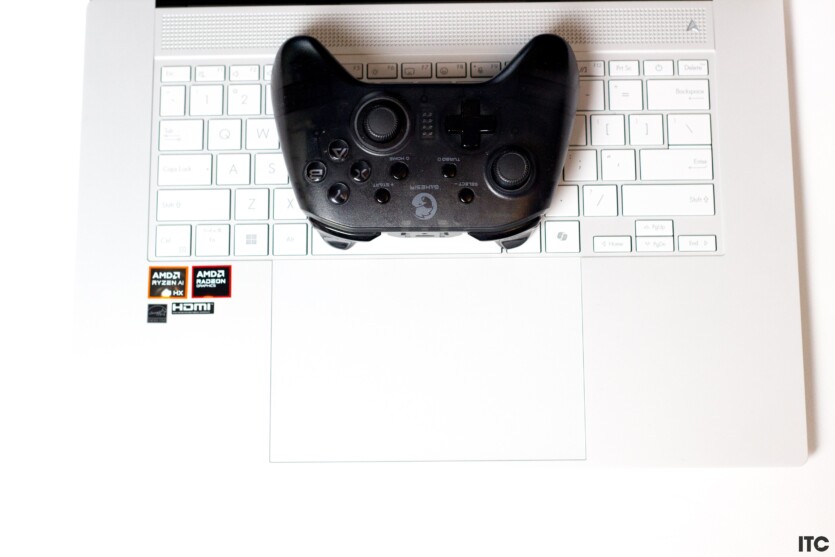

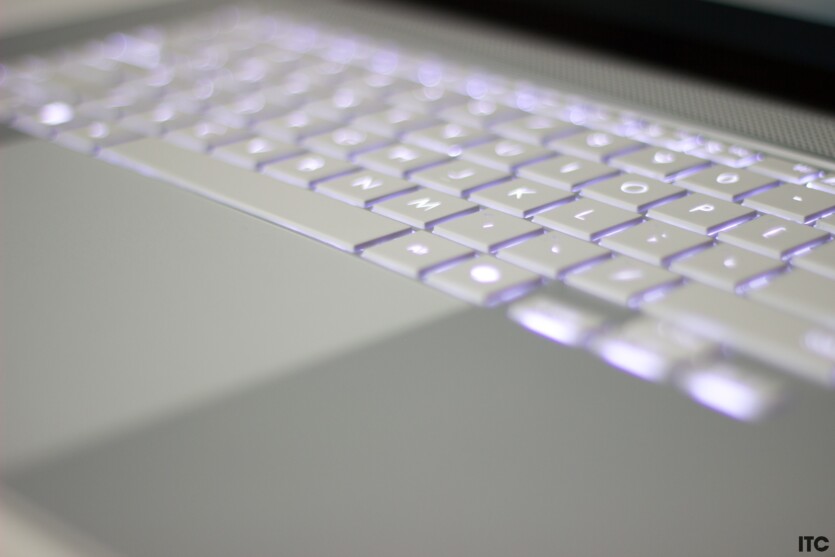
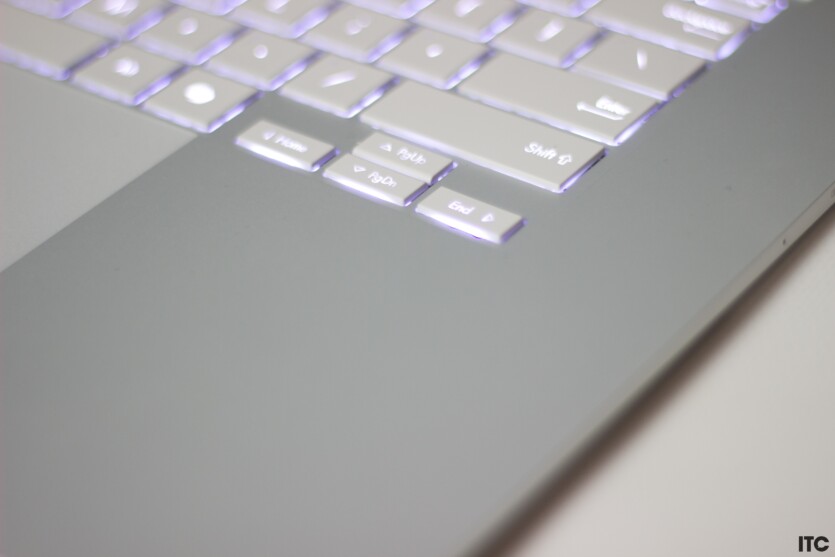
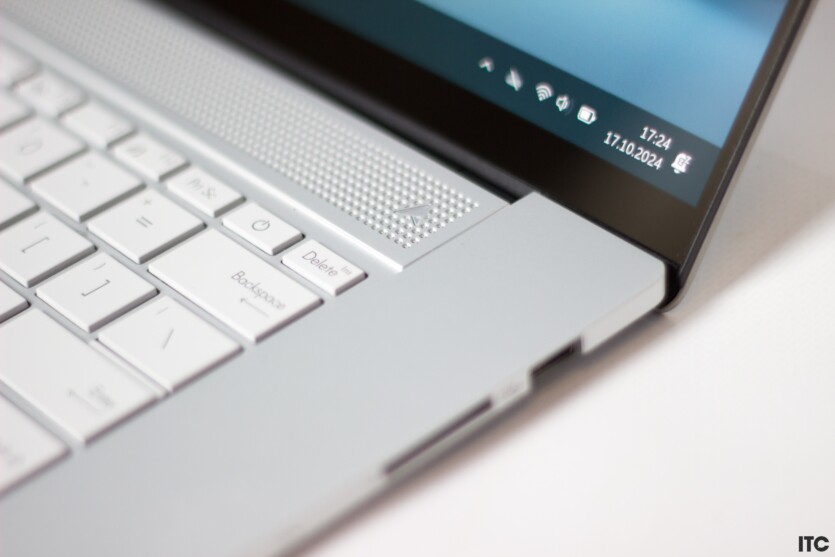

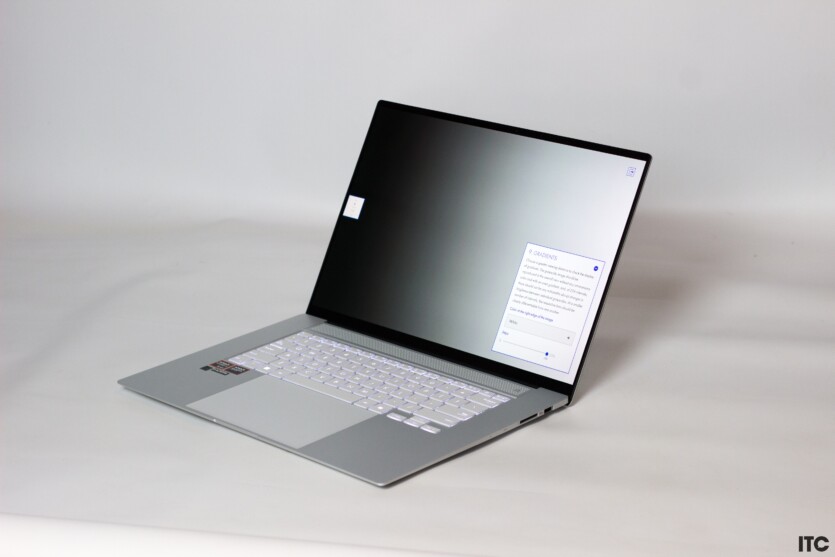
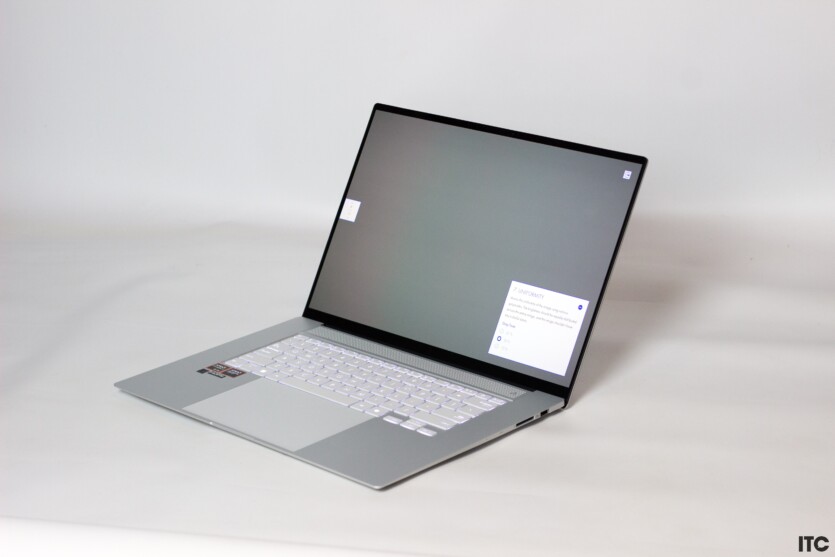
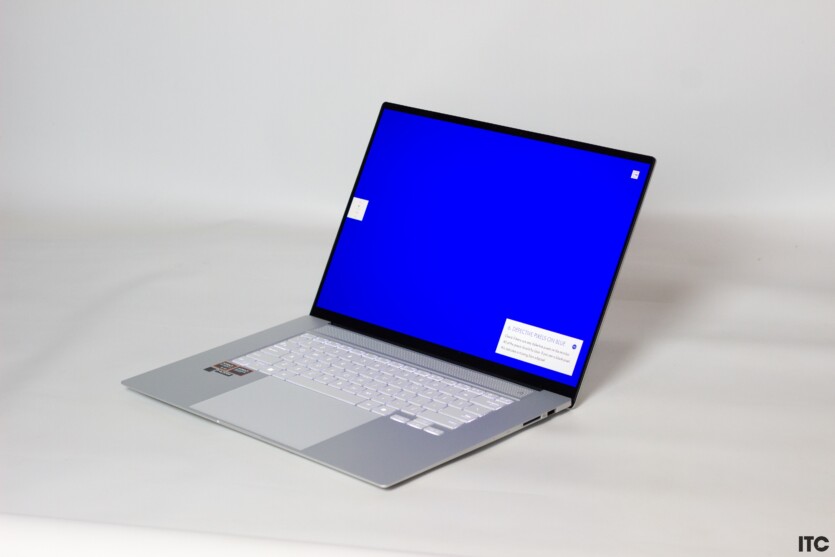
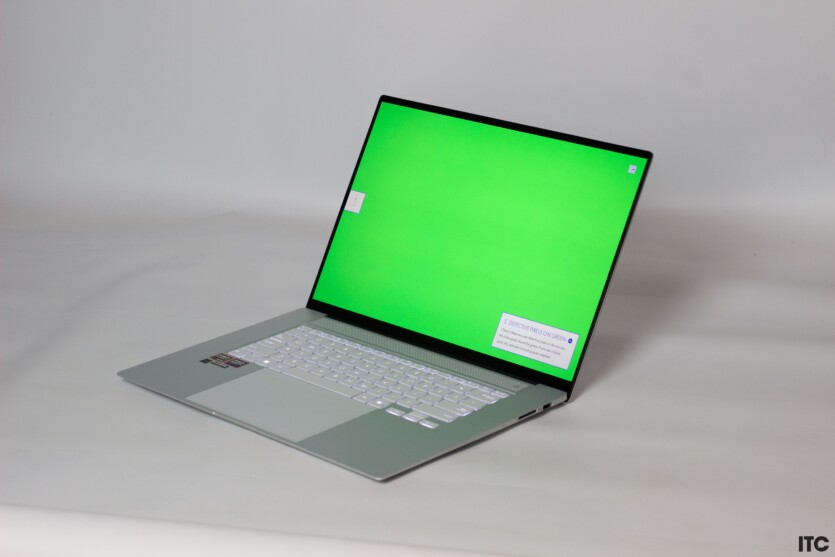
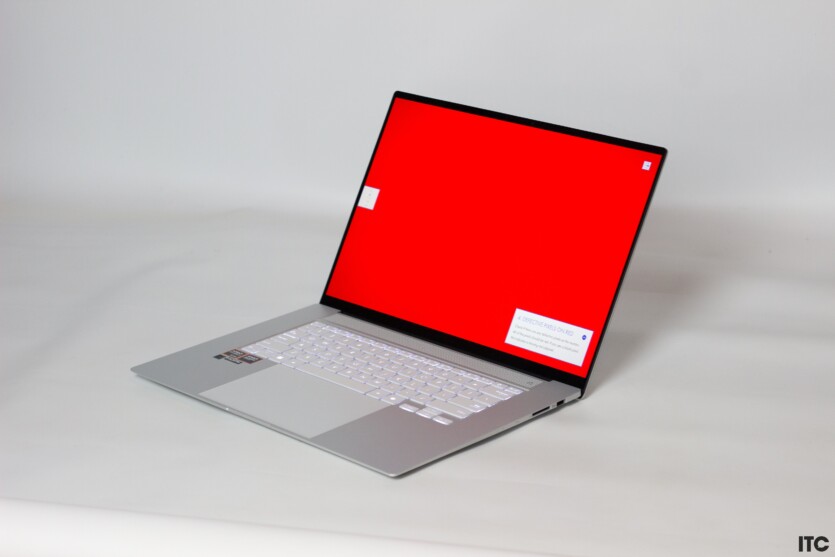
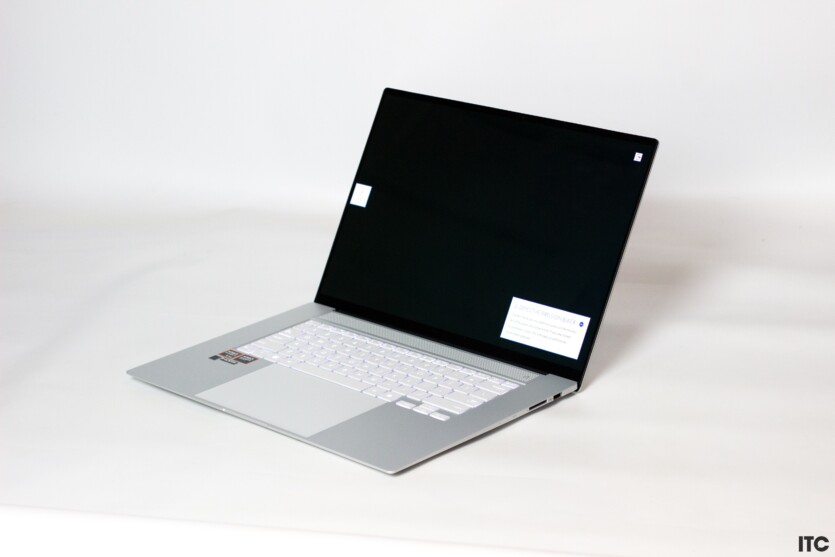

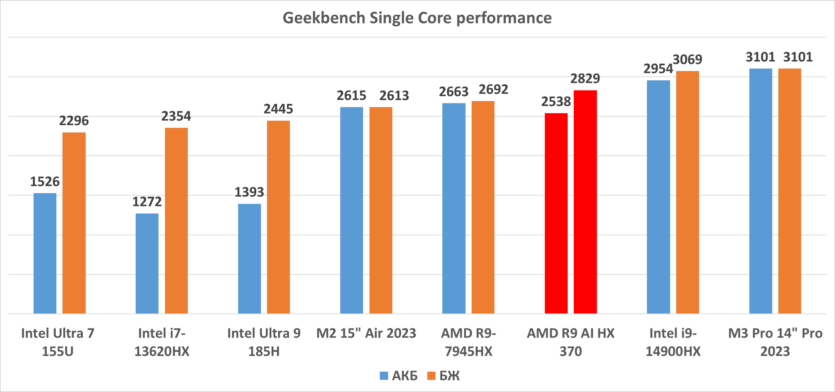
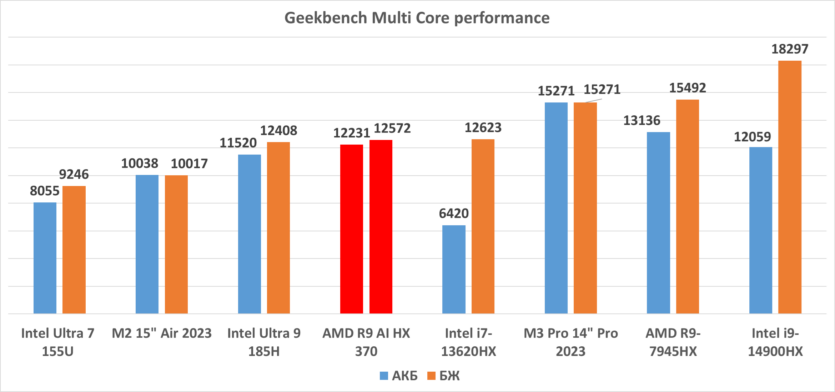
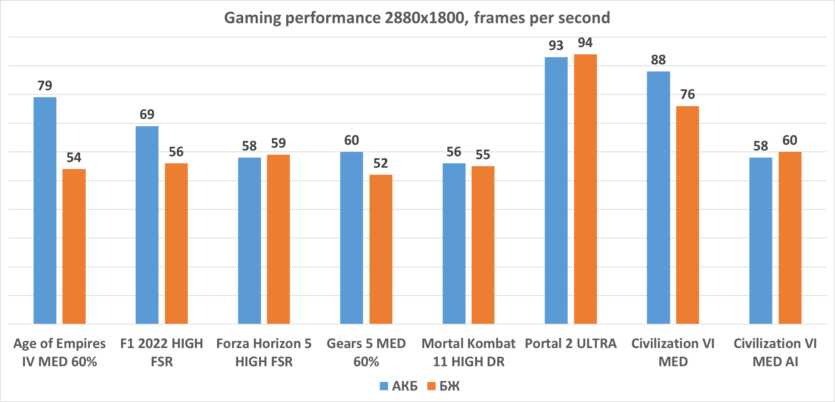
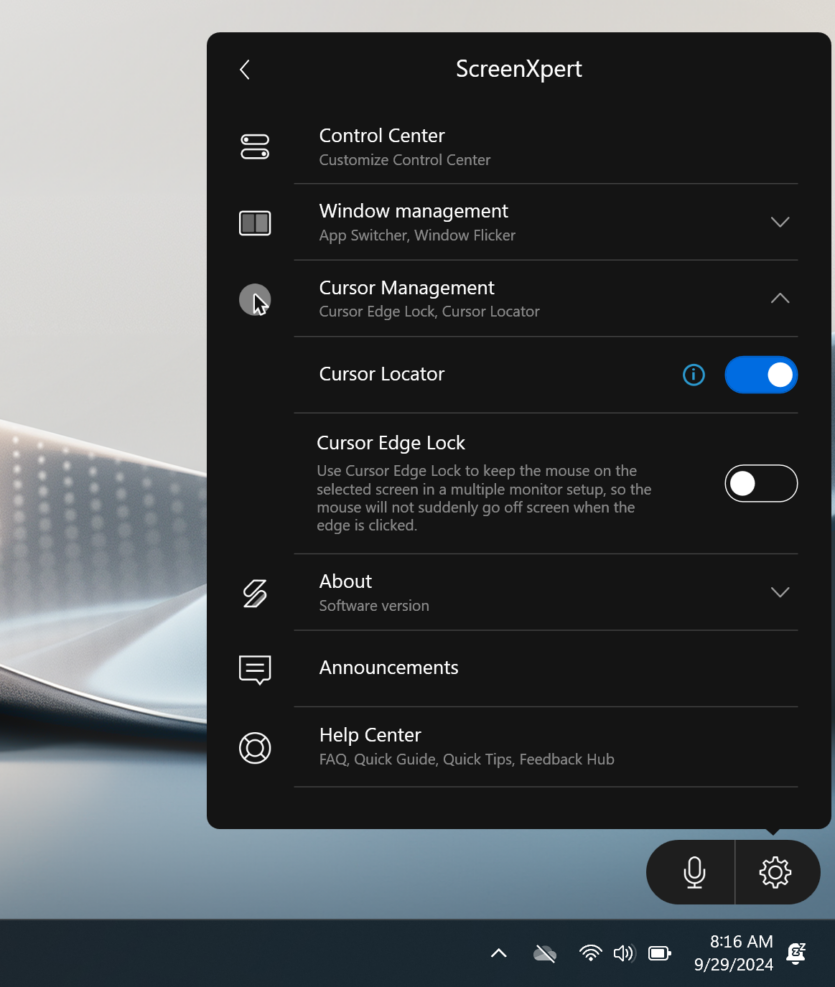
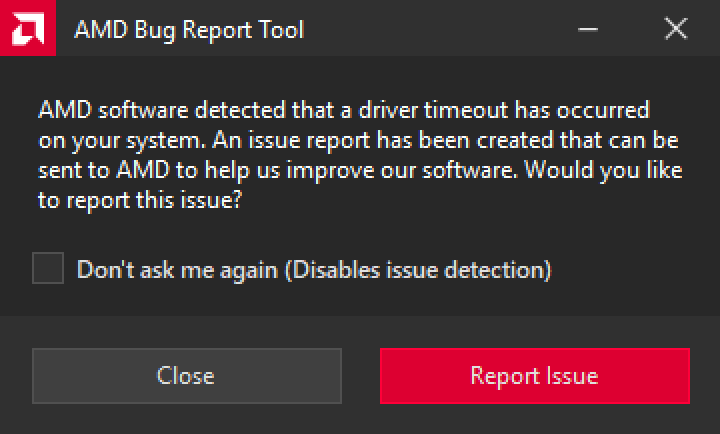
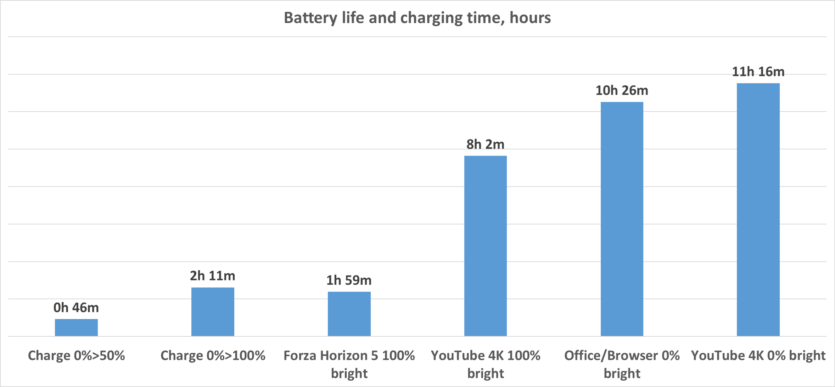

Spelling error report
The following text will be sent to our editors: